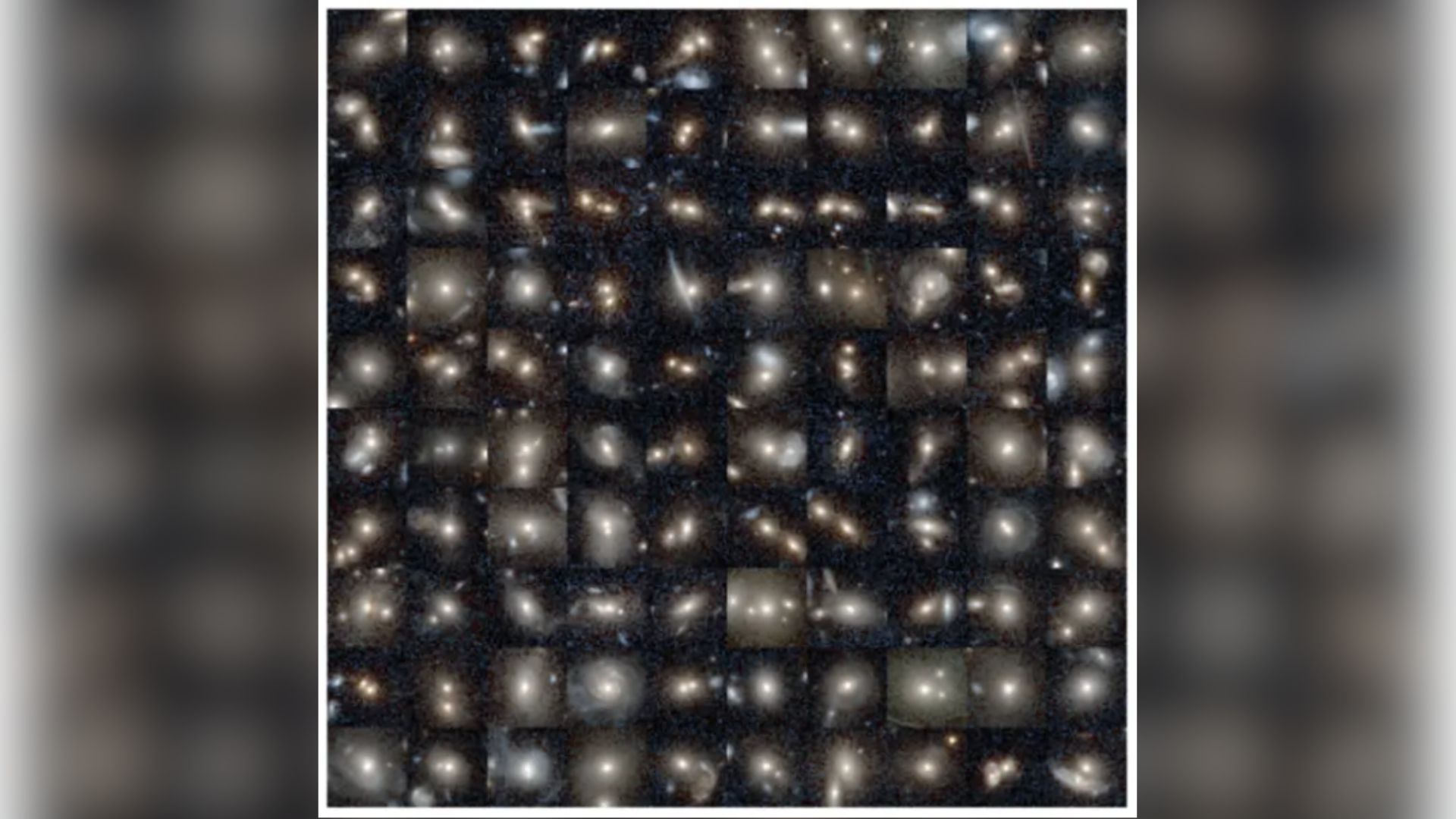Best star projectors 2025: The top projectors and planetariums ahead of the holiday season
We have shone a light on the best star projectors this holiday season with STEM sets, premium models, novelty items and more suitable for everyone.
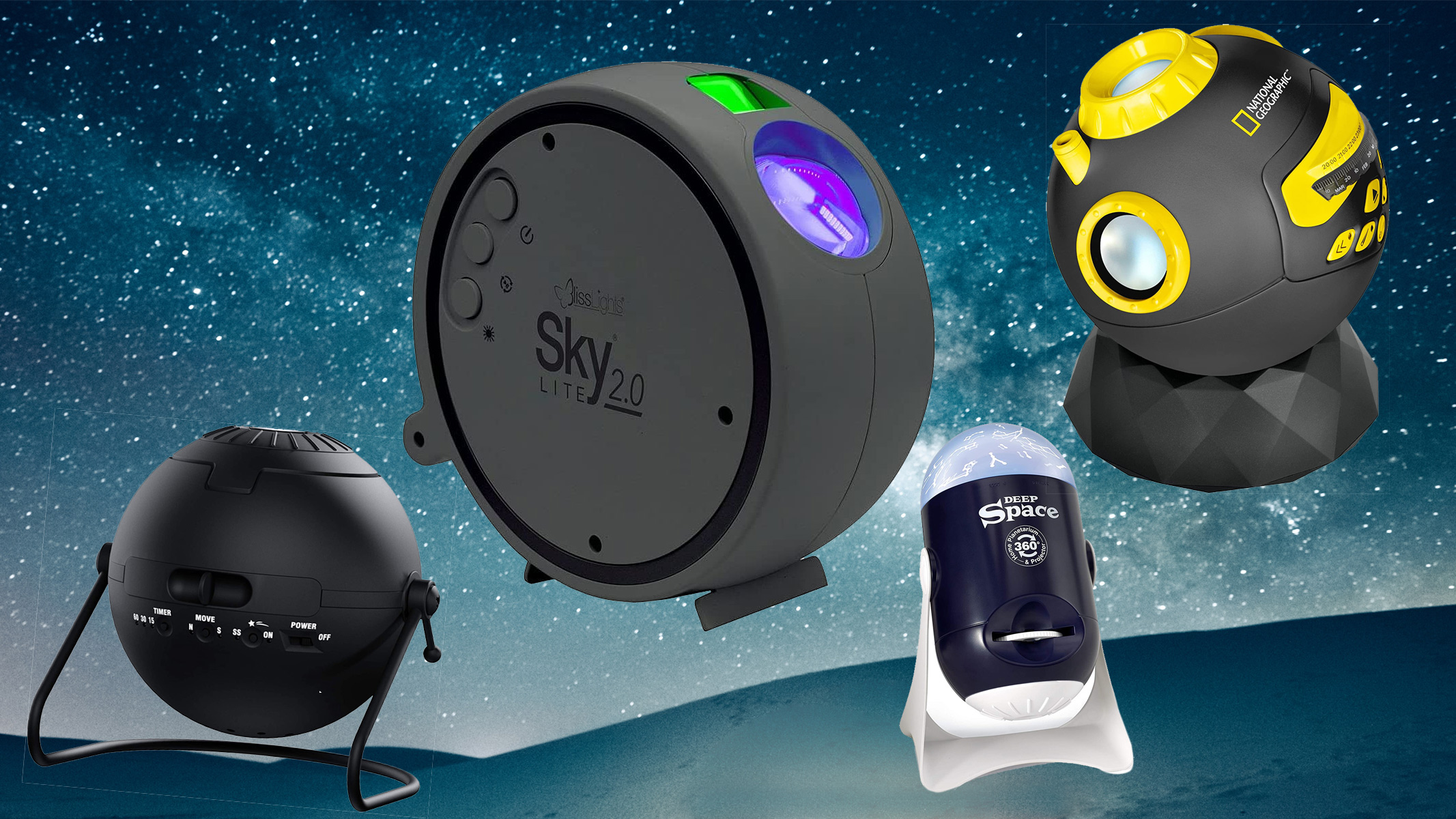
- Best overall
- Best Viral
- Best for space-themed parties
- Best for voice control
- Best budget model
- Best affordable known brand
- Best for pastel shades
- Best value rechargeable
- Best for education
- Best multi-functional
- Best generalist
- Best for portability
- Best for multi-media ambiance
- best classic
- Best lamp
- Star projectors FAQ
- How we test
Get immersed in the world of the best star projectors on the market, with the holidays fast approaching
The holiday season is fast approaching and the best star projectors can make for great presents and stocking fillers. Here, we look at the very best the market has to offer, whether you're looking for premium models, a built-in Bluetooth speaker, the best scientifically accurate imagery, specific features, or a great value-for-money option, there's something for everyone below.
If you want to check out the night sky for real, scroll through our guides to the best telescopes, best binoculars and best cameras. But for the best star projectors this holiday season, read on below.
Best star projectors we recommend in 2025
Why you can trust Space.com
Best overall
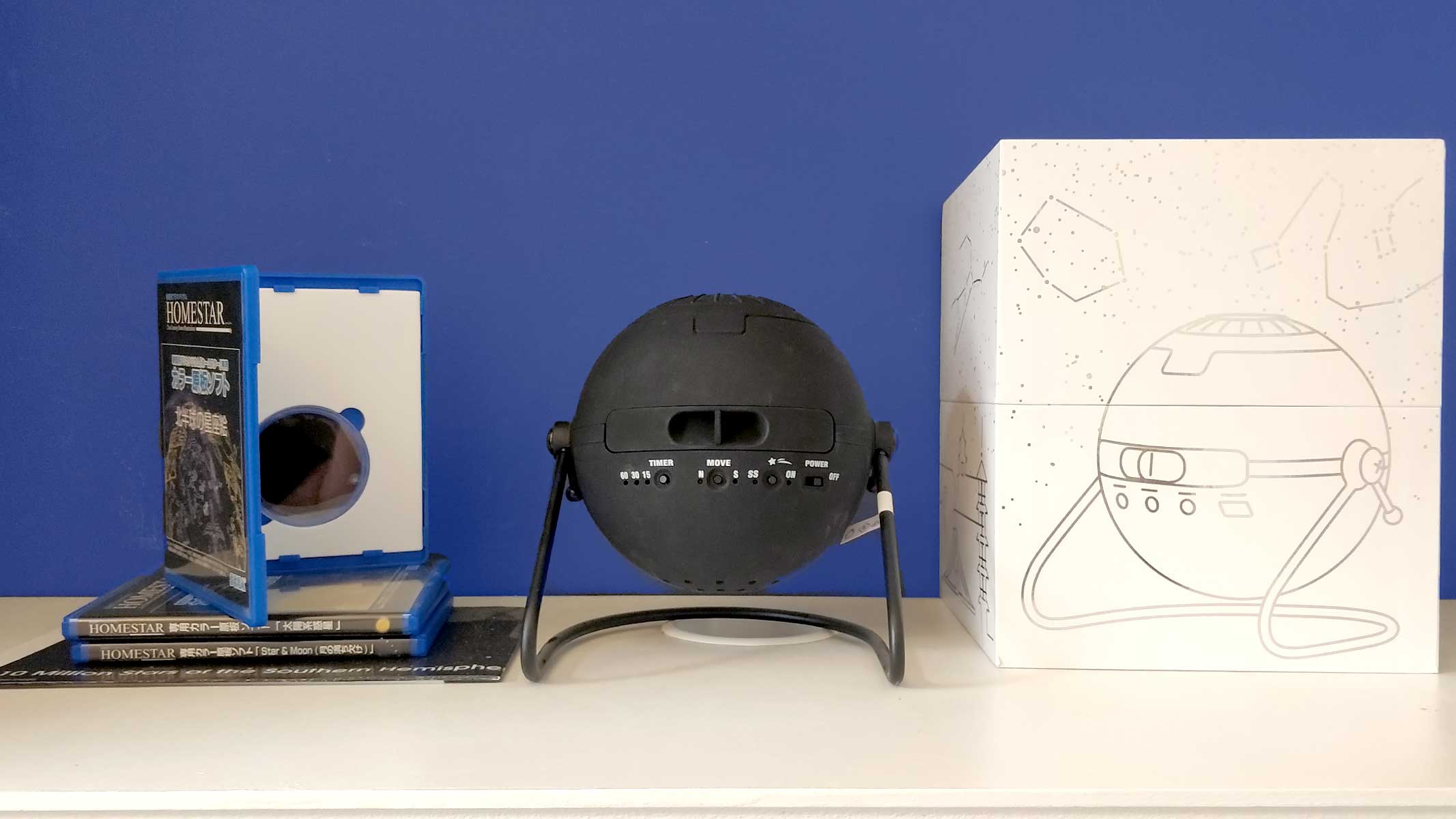
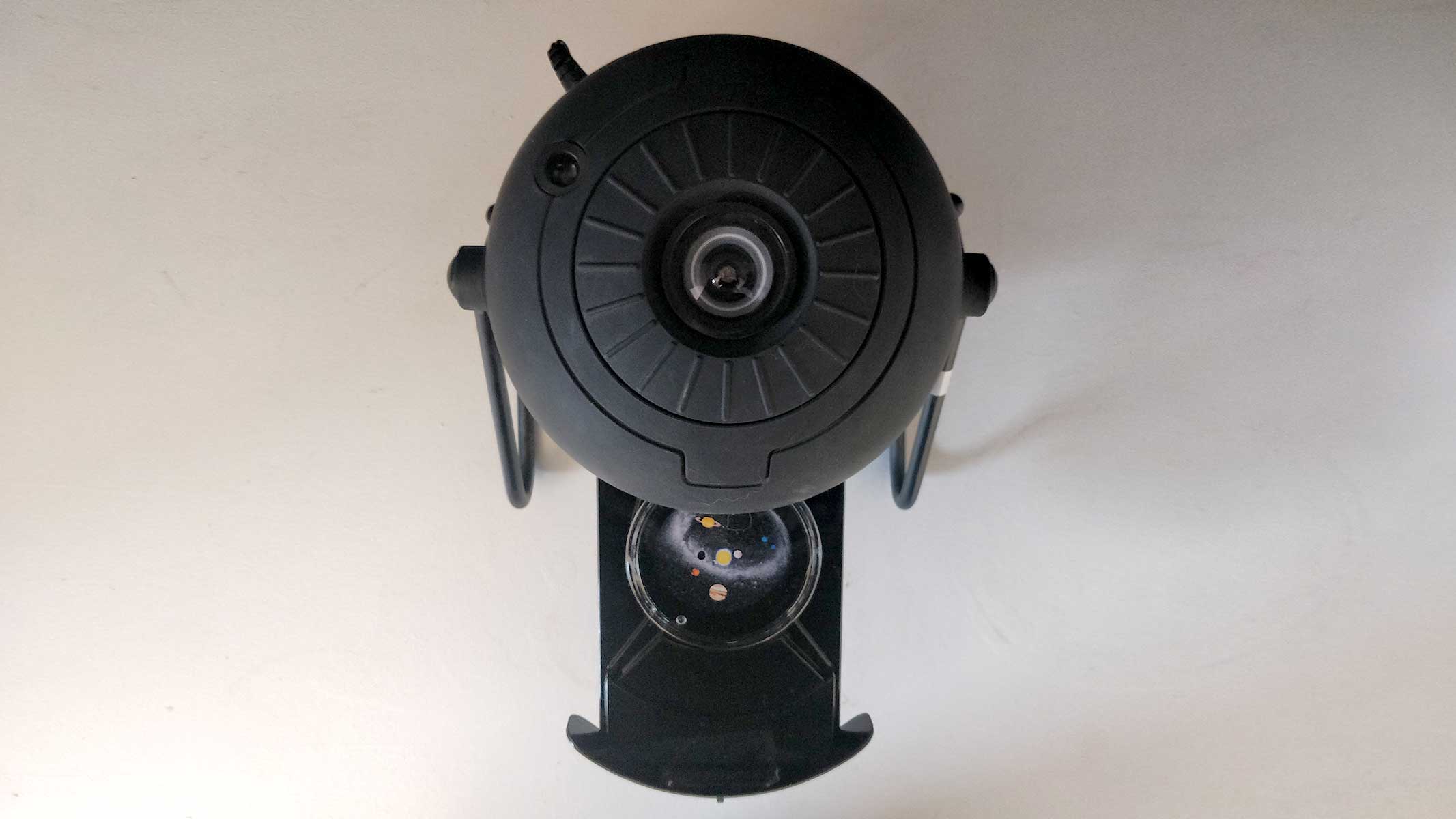
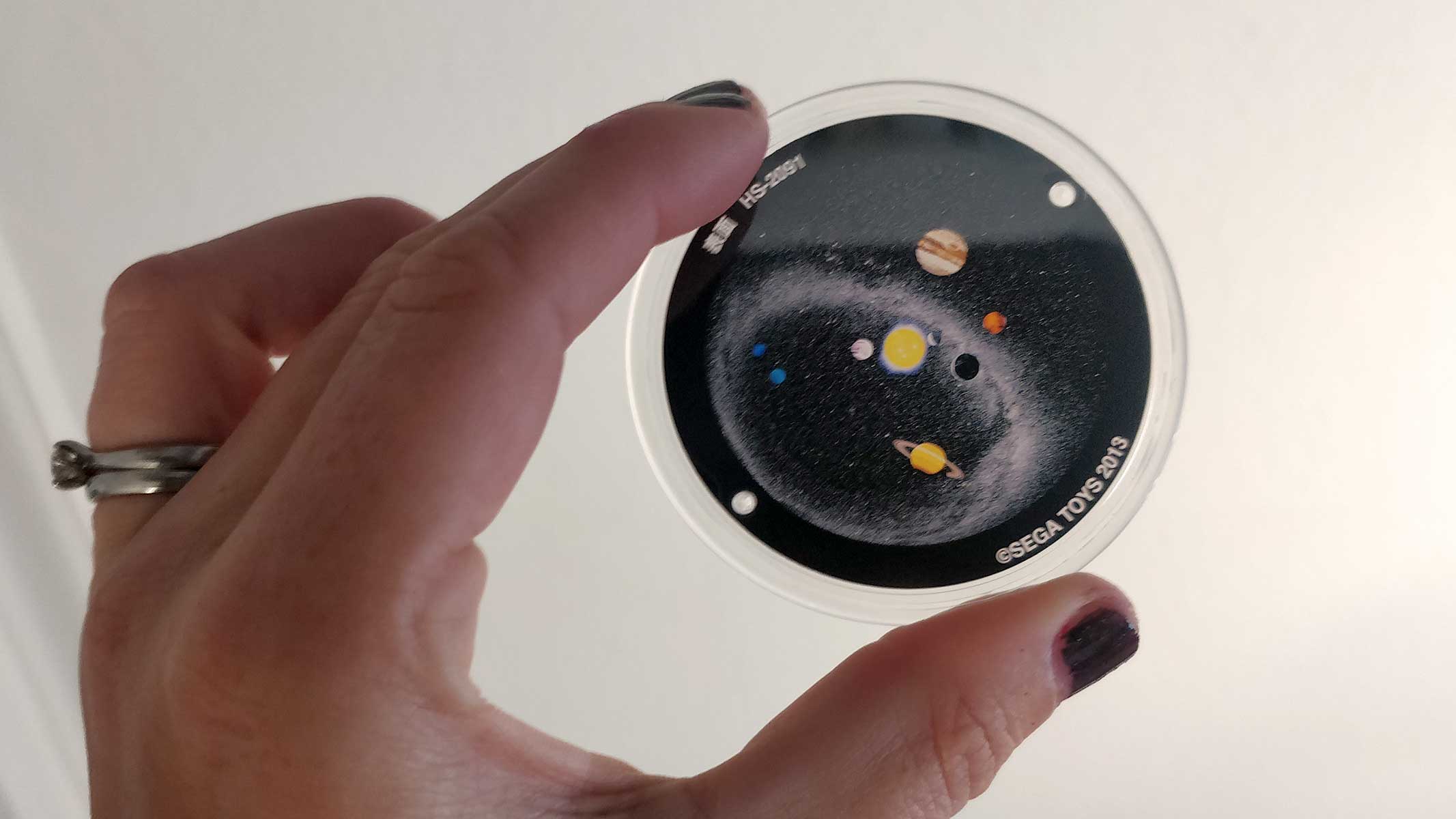
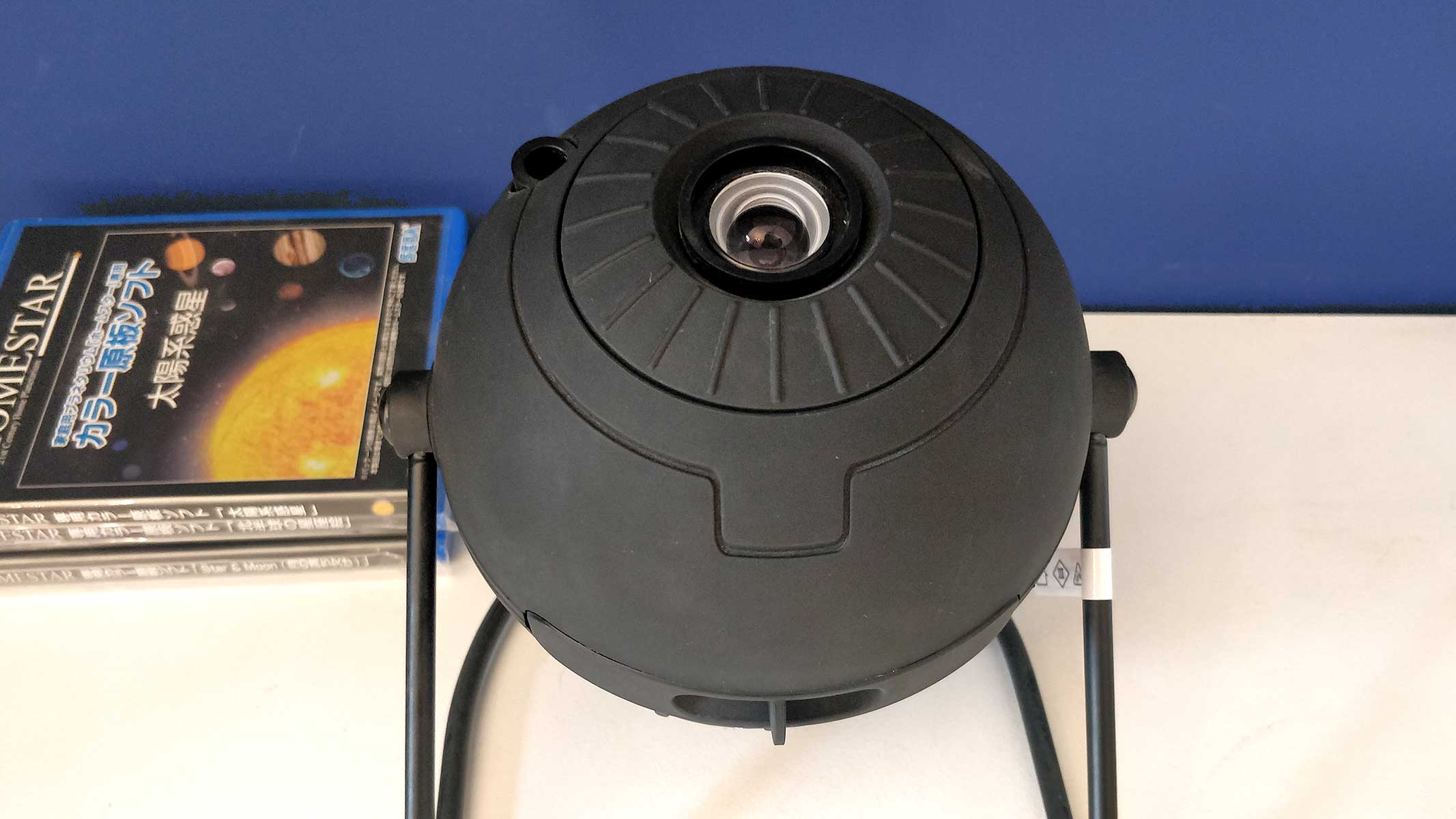
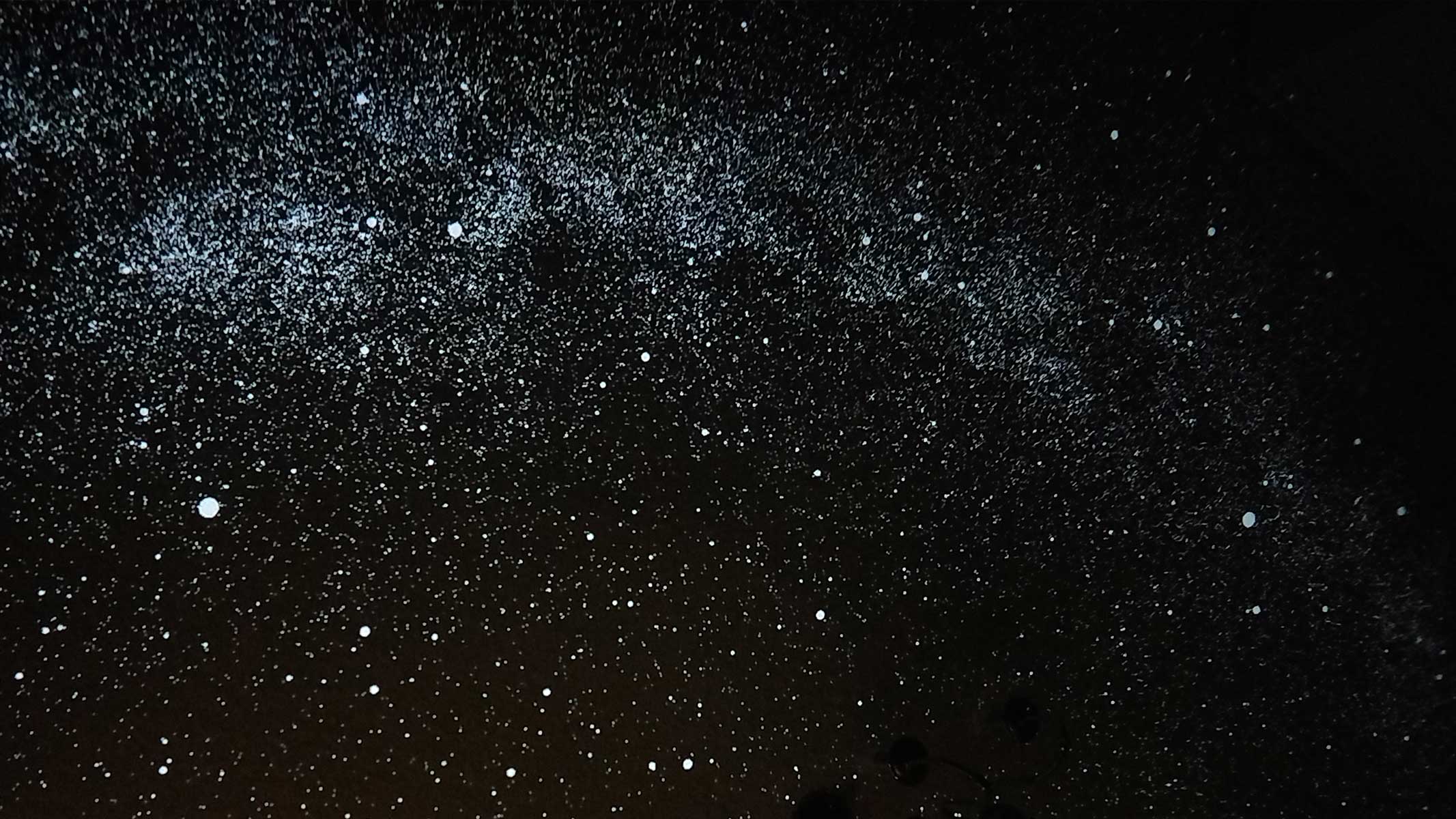
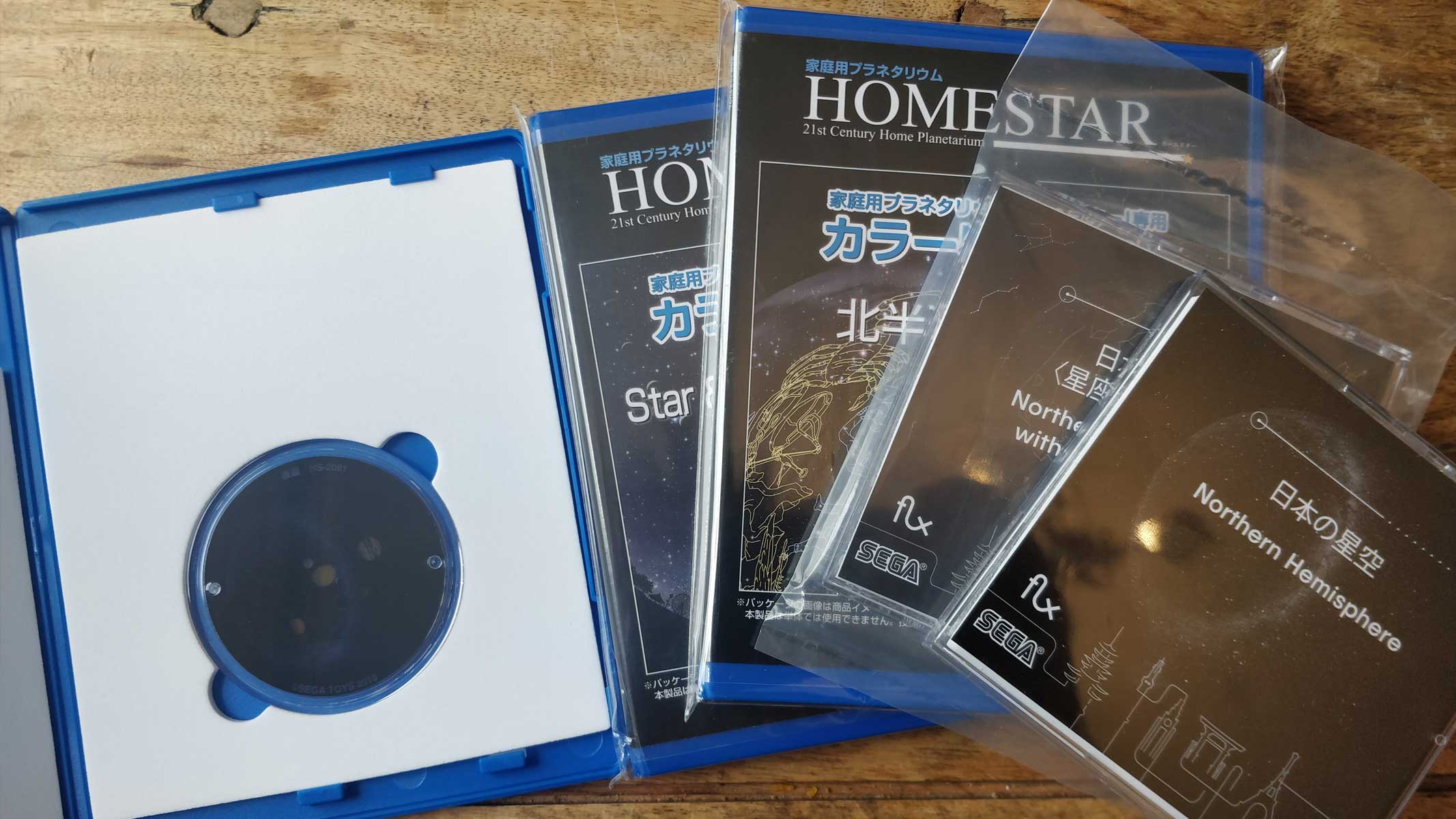
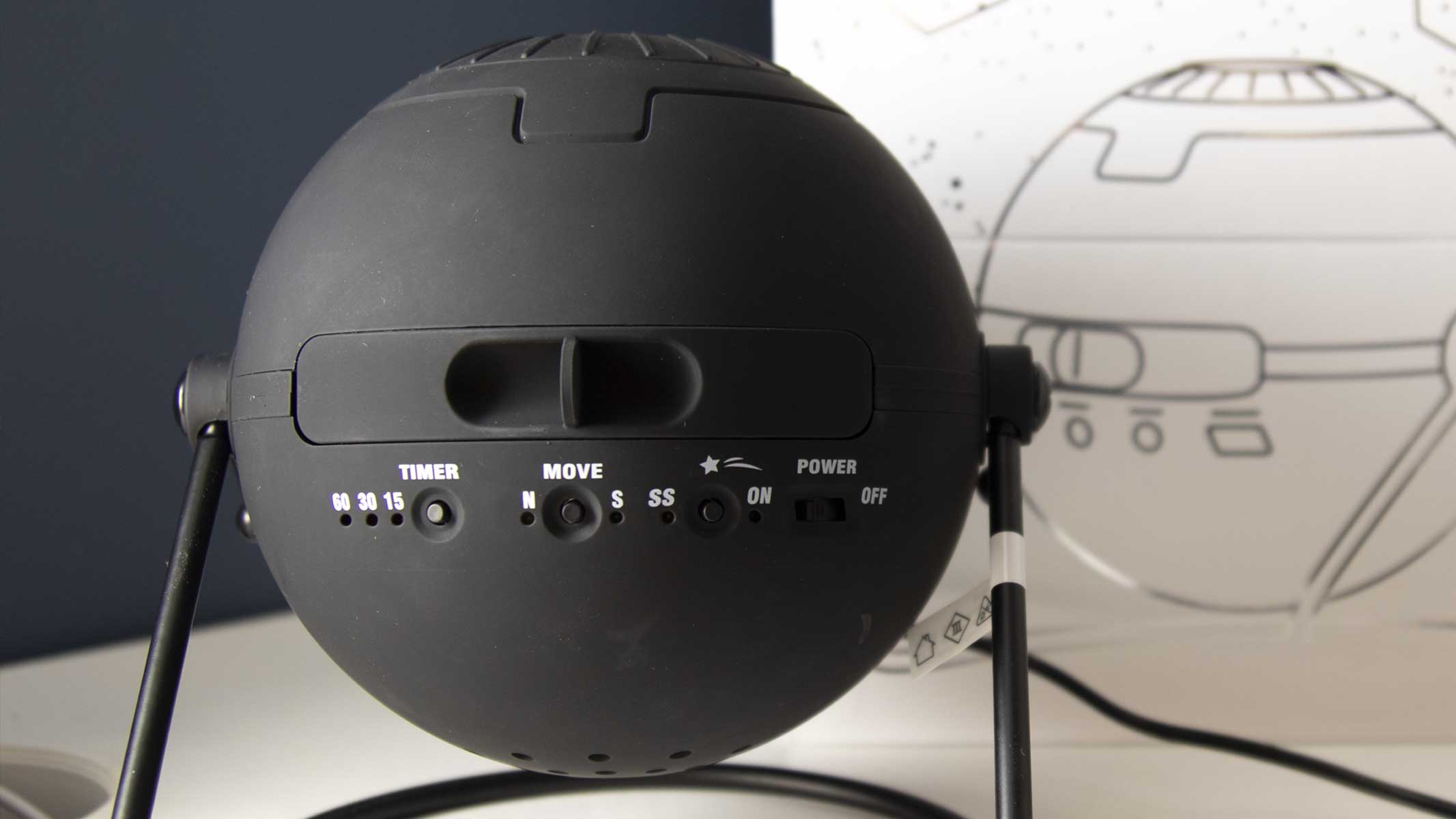
Specifications
Reasons to buy
Reasons to avoid
✅ You want to explore the skies: There are plenty of discs available for this projector, all of which are scientifically accurate. Most of them are NASA-based imagery.
❌ You're on a budget: This is the most expensive option on this list, so if you're on a budget, there are more suitable options that perform very well.
❌ You just want a pretty light: For anyone who just wants a nice mood-setting light, this will likely be overkill.
🔎 Sega Toys Homestar Flux Great for recreating a realistic-looking night sky inside. It's on the pricier end of the market, but the option to upgrade your disc collection is attractive. The night sky representation is about as realistic as it gets. ★★★★½
You might know Sega as a game company, responsible for Sonic the Hedgehog, Space Channel 5 and many others. But it's also the manufacturer of the best star projector you can currently buy, the Sega Homestar Flux. With the ability to observe over 60,000 stars at once, it truly does bring the night sky inside your home.
We've tested the Homestar Flux extensively, and we can confidently say that there are no better star projectors or home planetariums on the market. It offers scientifically accurate views of the sky with beautiful, bright projections that will wow you.
The Homestar Flux operates with a disc system which allows you to change which parts of the night sky you're viewing. Two Northern Hemisphere and Northern Hemisphere Constellations (which includes labeled constellations) discs come included with the Homestar Flux, but many more are available to purchase separately. There are 30 discs available for around $18 each when you visit Astrial, Sega Toys' official online store.
If you're finding it hard to choose, we can recommend the impressive simulations of the aurora borealis and the aurora australis. There is a disc that displays the planets of the solar system, but the ones that show galaxies, nebulas and other NASA-based imagery are the ones that really stand out. The North America nebula as taken by NASA's Spitzer Space Telescope and the seven-star system called Jabbah (officially called Nu Scorpii and IC 4592) as imaged by NASA's WISE mission are fascinating. For a sillier kind of skywatching, you can buy discs that simulate fireworks, 'night jellyfish' and a hot-air balloon festival.
Like many other star projectors, there is a 'shooting star' function, although in our Sega Homestar Flux review, we found it a bit predictable it wasn't remotely random. Instead, the star always fell in the same spot, and more variation would have made the display feel more real. However, we loved that it comes with an automatic shut-off option after 15, 30 or 60 minutes, which is handy if you're using it to fall asleep.
The main downside of this fantastic star projector is it's far more expensive than many other models, but you'll find few that offer the same user experience. It's worth noting that the Sega Toys Homestar Flux is also tough to find, so grab it while it's in stock at one of our trusted retail partners.
- Read our full Sega Toys Homestar Flux star projector review
Attributes | Notes |
|---|---|
Design | Premium finish and build quality. |
Performance | Excellent brightness, sharp imagery. |
Functionality | Variety of stargazing discs, no novelty lights or lasers. |
Best Viral
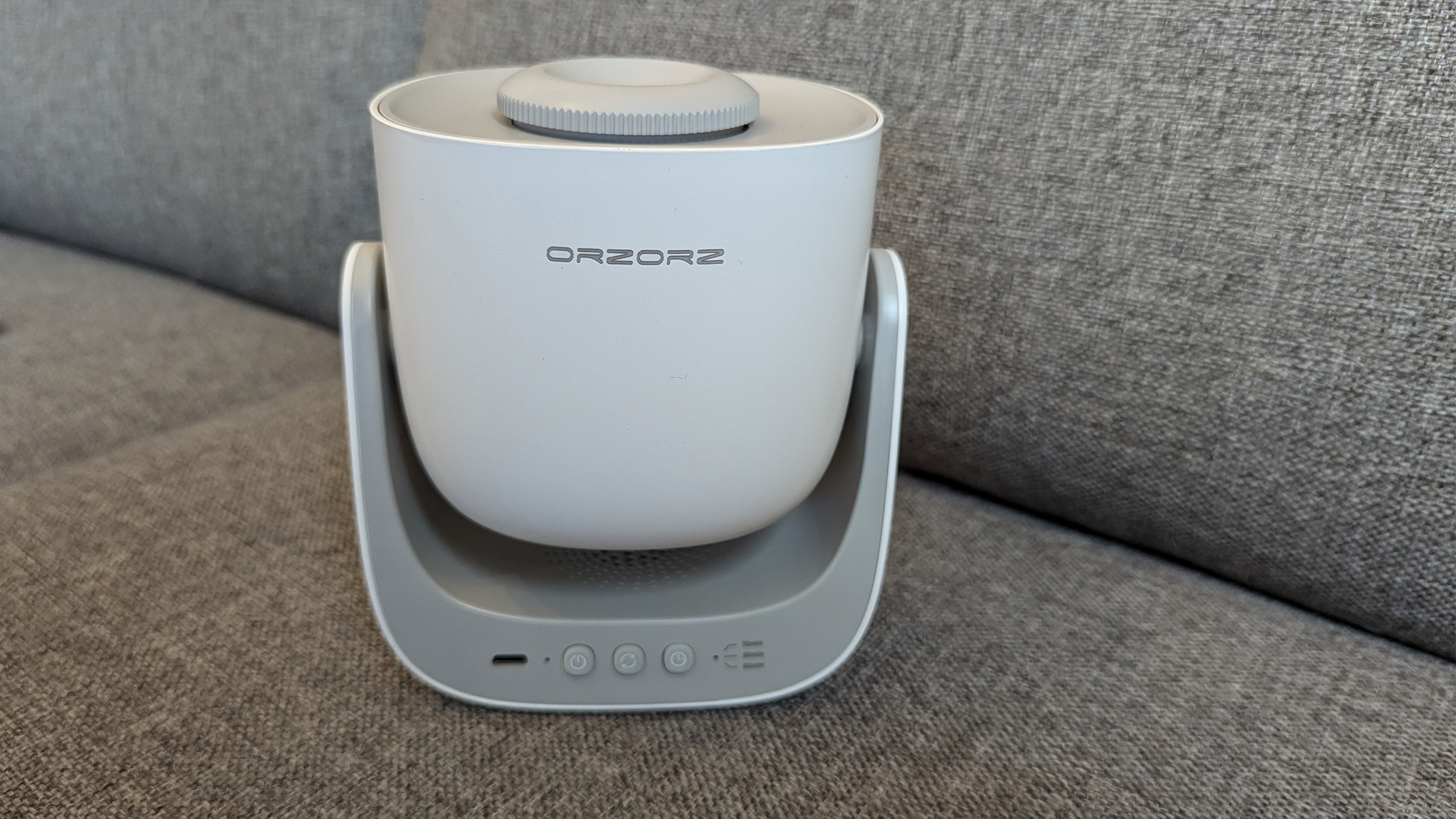
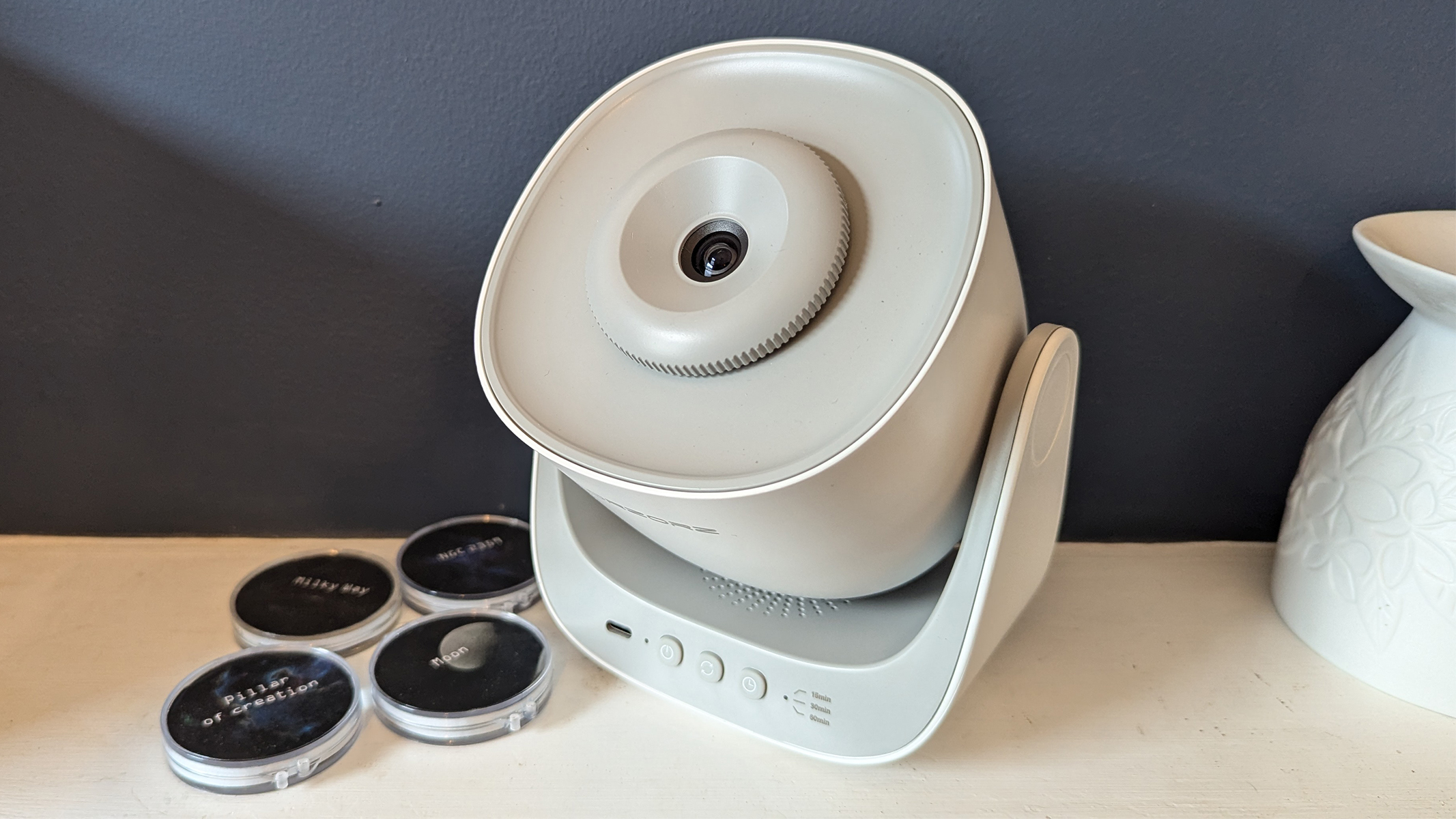
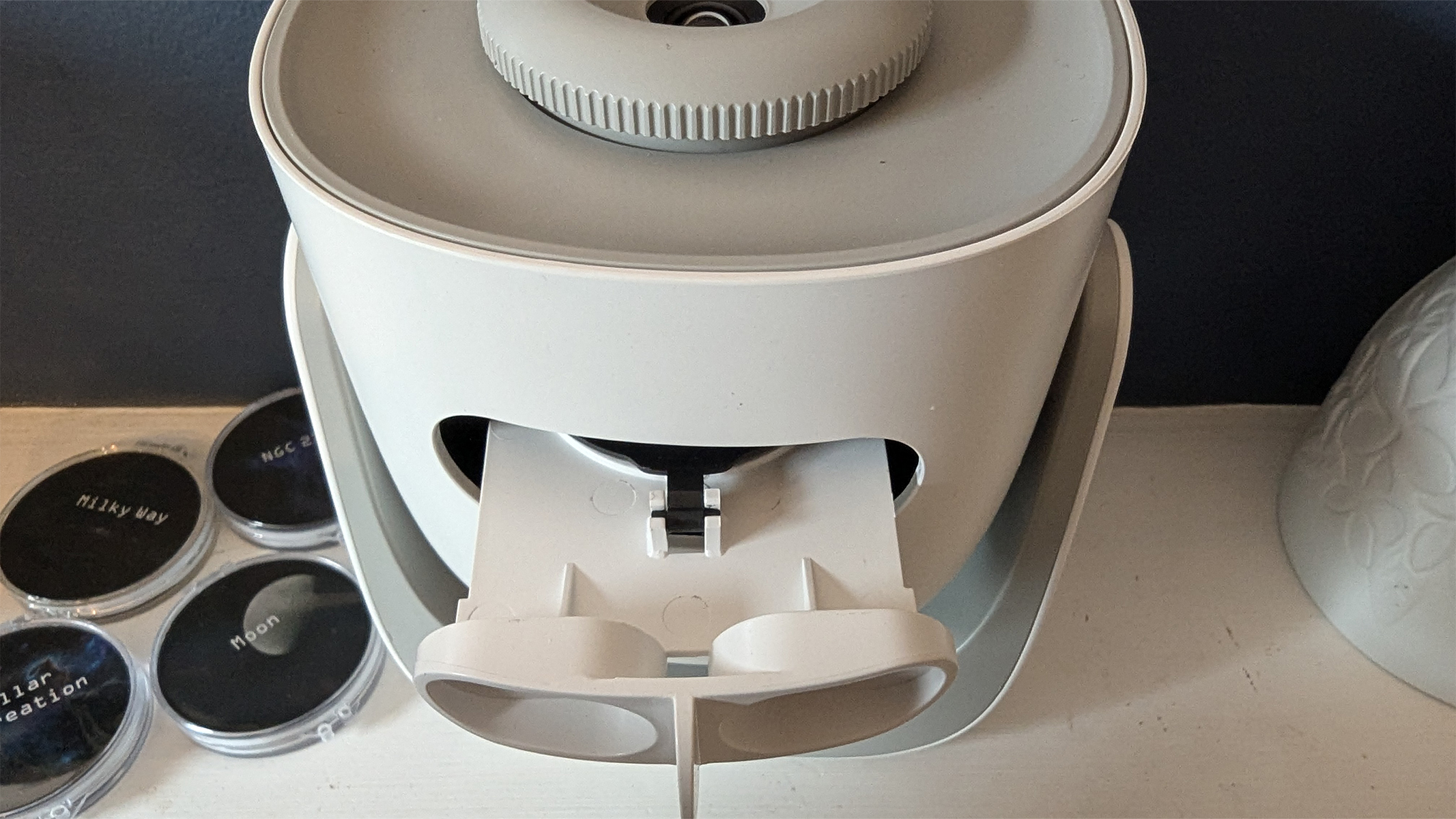
Specifications
Reasons to buy
Reasons to avoid
✅You want quality at a mid-range price: The Orzorz Galaxy Lite star projector rivals the premium models in this guide but costs considerably less.
❌You either want a novelty or premium set: This model isn't a novelty projector and isn't priced like one, but it also isn't the best of the best available.
🔎Orzorz Galaxy Lite star projector: A star projector of genuine quality that rivals some of the premium models in this guide but costs considerably less.
The Orzorz Galaxy Lite star projector is a very easy-to-use and high-quality star projector. There's no app or controller for this projector, just buttons that are self-explanatory and can set the sleeper timer and rotation. The timer can be set for 15, 30 and 60 minutes.
It features a wide base, which provides stability and it's positioned vertically within the base, so it can rotate 180 degrees with a click in each position to hold the projector securely. When it comes to charging the projector, it has a port for USB-C to charge its battery. This means it can be used while plugged into the mains but also used on the go and the the rechargeable battery gives it a portable element, which is a positive feature that others in this guide don't have.
We also like the fact that this projector, despite coming from a relatively unknown manufacturer, comes in professional-looking packaging and doesn't feature any garish colors (only white and grey) with subtle branding. It's quiet in operation, easy to use and has a disc tray and it doesn't feature any lasers or special enhancing features, just a display of the image on the disk and a focus wheel to sharpen the image.
Design | White and Gray, vertically positioned, professional-looking packaging |
Performance | Vivid imagery, 4m projection |
Functionality | rechargeable battery, buttons control timers and rotation |
Best for space-themed parties
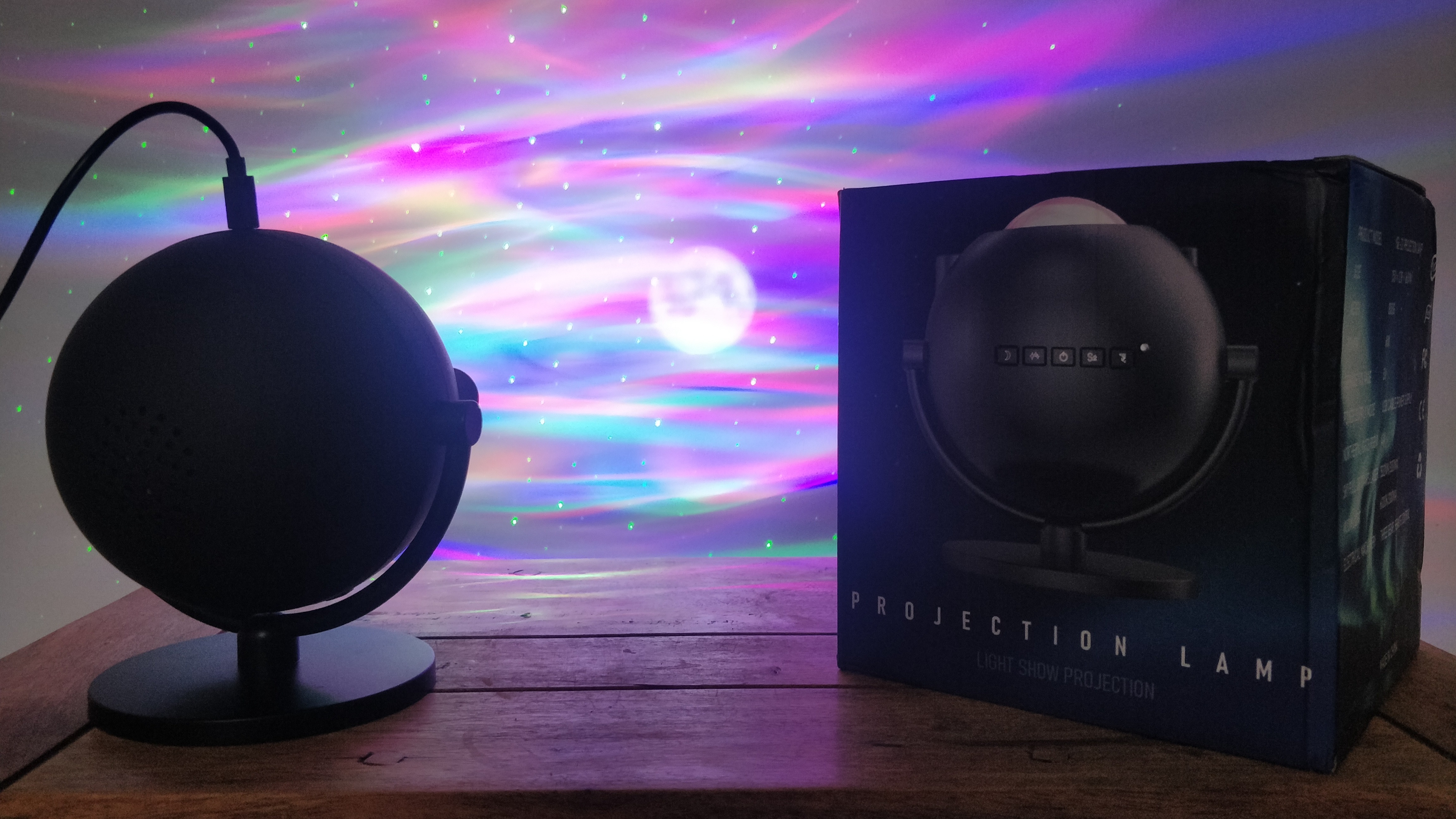
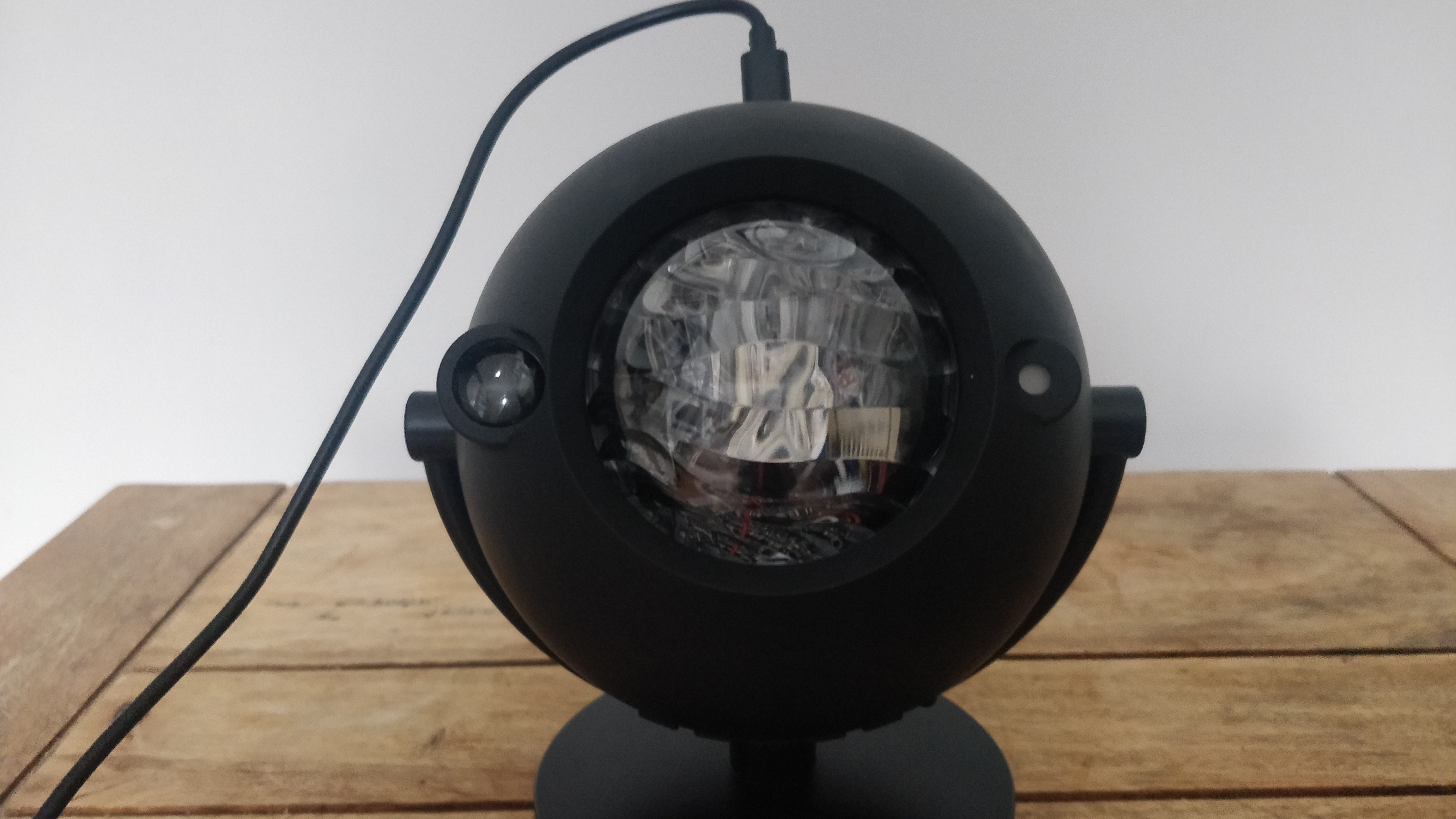
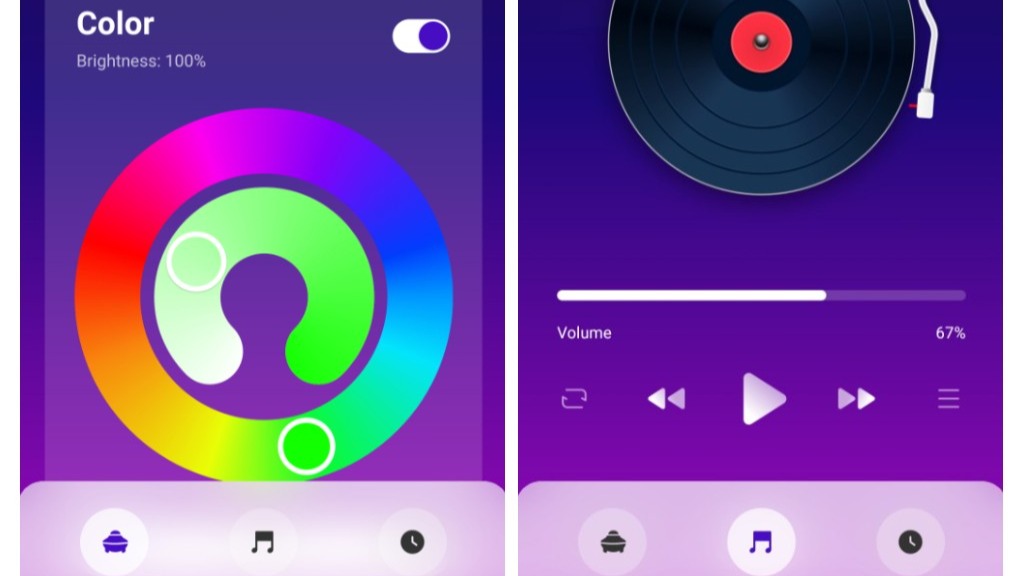
Specifications
Reasons to buy
Reasons to avoid
✅ You want to pair it with music: We were impressed with the musical rhythm mode, where the lights flash and dance along to the beat of the music.
❌ You want scientific accuracy: It's not a scientifically accurate projection, although that said, it's the most realistic-looking non-scientific projector we've tested.
🔎 Aurora Borealis Northern Lights Star Projector It's highly customizable, the patterns are realistic and the music rhythm mode is impressive. One of our favourite projectors. ★★★★½
While it's not a scientifically accurate star projector, the Aurora Borealis Northern Lights Star Projector is packed full of great features.
This star projector is very customizable: you can choose to display a full moon, change the colors of the Aurora Borealis, make the stars more or less visible, or adjust the LED lights and green lasers to your preferred brightness. There are 16.7 million to choose from (in theory at least; we weren't able to test this as the human eye can't see that many), so you're bound to find one to your taste. We also love that you can control the projector with the remote control it comes with, or through the accompanying app on your smartphone.
The Aurora Borealis Northern Lights Star Projector comes with a high-quality built-in Bluetooth speaker which syncs the lighting display to music thanks to its "rhythm mode". This is a great feature if you want to create some party ambience.
In our Aurora Borealis Northern Lights Star Projector review, we highlighted it as one of our favorites of all the star projectors we've reviewed. It's just a shame that it comes in unbranded packaging, and we found the so-called official website to feel ingenuine. It didn't give us much trust in what we were buying, but thankfully the final product delivered.
Attributes | Notes |
|---|---|
Design | Matte black finish. |
Performance | Realistic looking aurora. |
Functionality | App or remote (supplied) controlled. |
Best for voice control
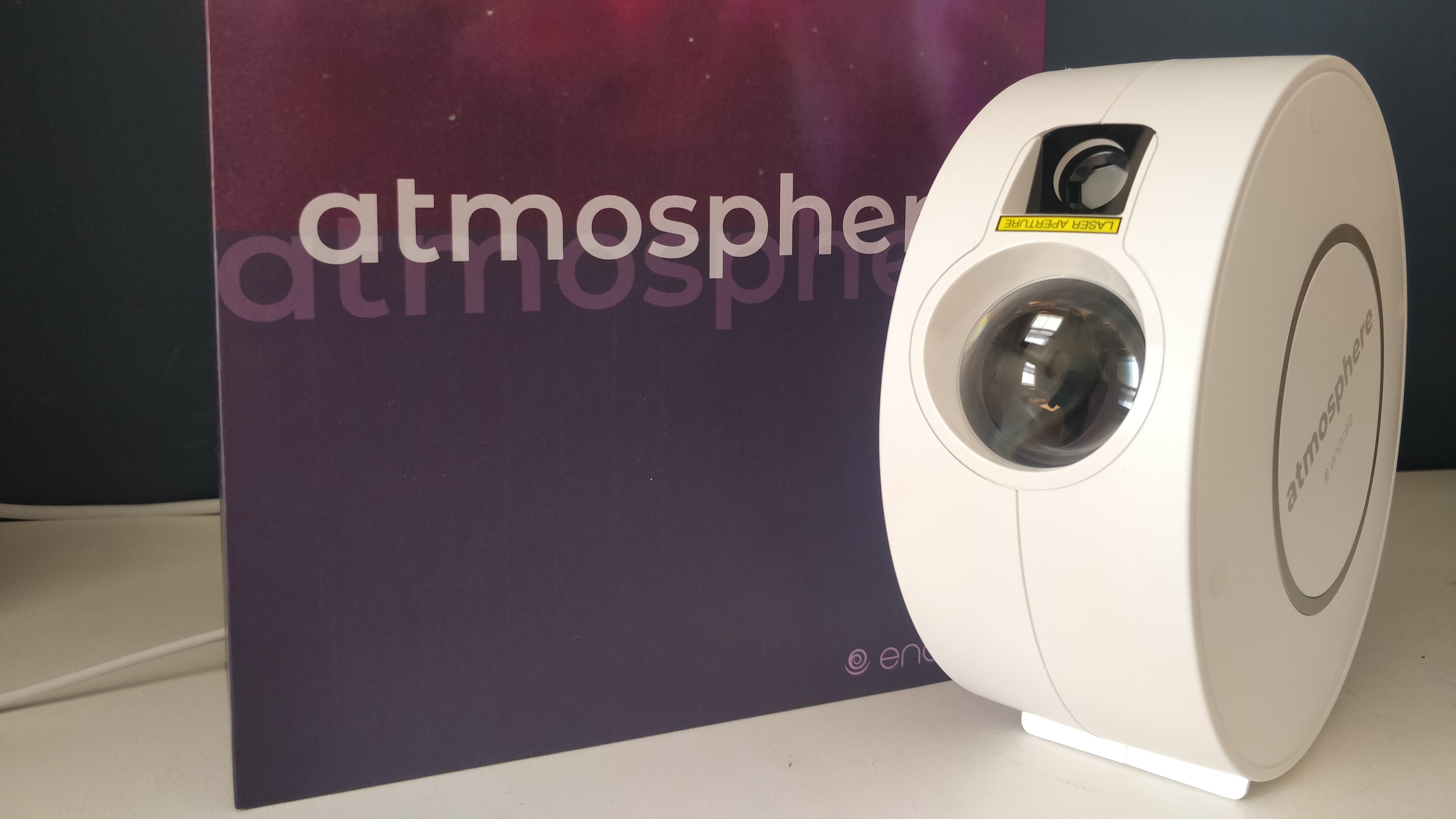
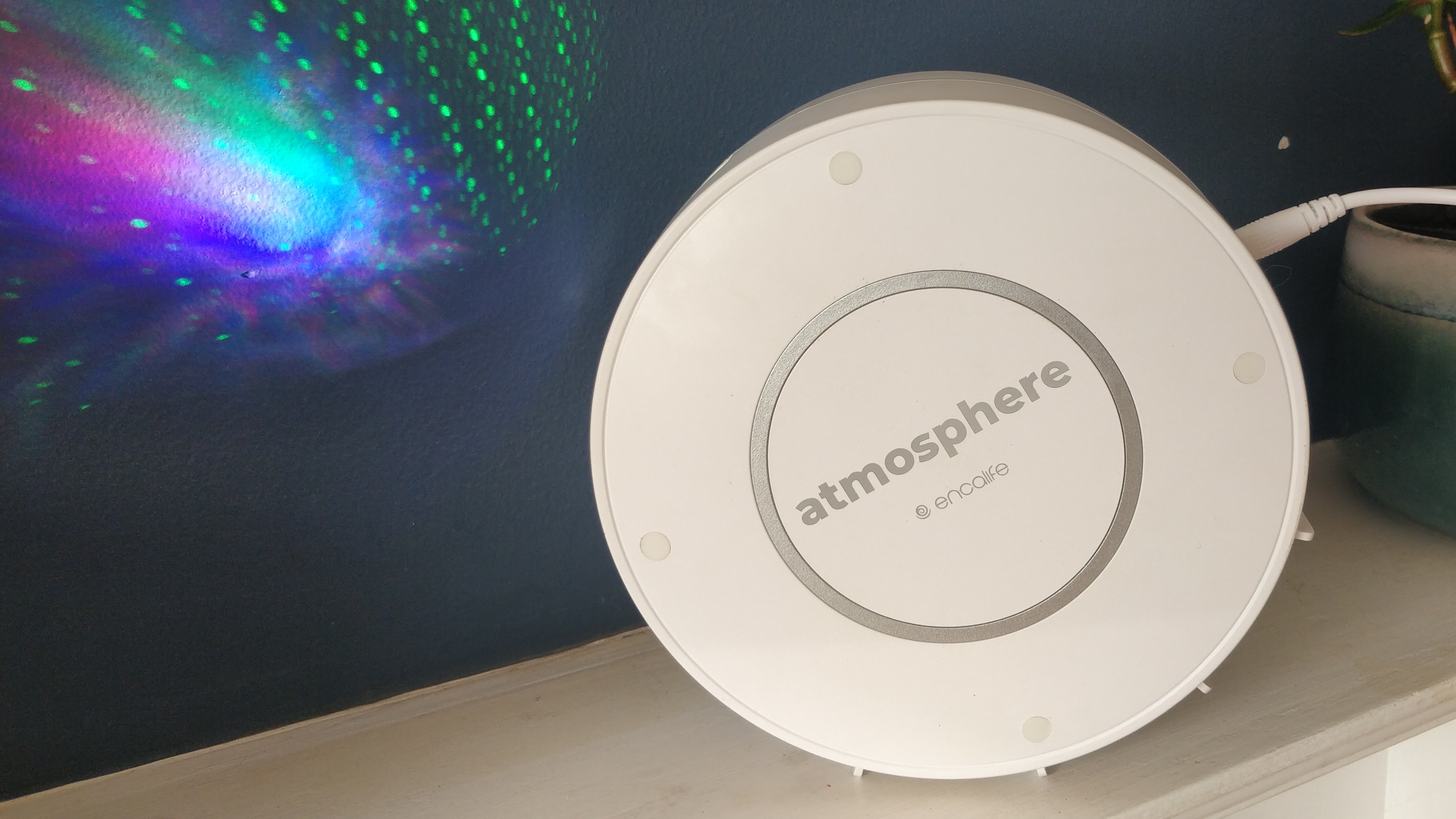
Specifications
Reasons to buy
Reasons to avoid
✅ You want a voice activated projector: You can control this projector using your smart home devices (Alexa, Google Home, etc), meaning you don't have to fiddle with buttons to set the mood.
❌ You want it to be scientifically accurate: It doesn't show any constellations or any type of scientific night sky projections.
🔎 Encalife Atmosphere Smart Galaxy Star Projector: Although it is called a Galaxy Star Projector, like most others, this is a pleasant mood-setting light, showing colors and patterns that reflect galaxies and nebulas rather than an accurate starry sky. ★★★★
We love this projector's modern design; unlike most of its competitors, it can blend in among your furniture and looks great in most rooms. It also comes in an attractive packaging, so it would make a lovely gift.
In our Encalife Atmosphere Smart Galaxy Projector review, we noted how simple it is to use and set up. But this projector's standout feature is no doubt the voice control: You can use the companion app on your smartphone (available for iOS and Android), or your Amazon Alexa/Google Assistant to voice control your projector. This means you can adjust the brightness, control the rotation speed or change the colors without having to get up from your sofa.
The Atmosphere Smart Galaxy Projector boasts 16.7 million colors to choose from; while this sounds impressive, since the human eye can't actually see that many colors with the naked eye, it's a bit of a wasted claim. However, we're pleased to say the colours you can see are beautiful, and the projector offers up a fantastic light show experience.
It's worth noting that, breathtaking as it can be, the Atmosphere projector doesn't offer scientifically accurate representations of the stars. So if you're after an educational tool, this won't be the one for you. But if you're simply looking for beautiful ambient light shows, you won't be disappointed with what's on offer here. We love that you can fully tailor the experience to your tastes by adjusting the brightness and projection speed.
The Atmosphere Smart Galaxy Projector is USB rechargeable. It can also be adjusted to four angles, so it's flexible enough to project onto both the walls or ceilings.
- Read our full Encalife Atmosphere Smart Galaxy Star Projector review
Attributes | Notes |
|---|---|
Design | Compact design and shape, premium feel. |
Performance | Bright & vivid colors, responsive controls. |
Functionality | Highly customizable. |
Best budget star projector
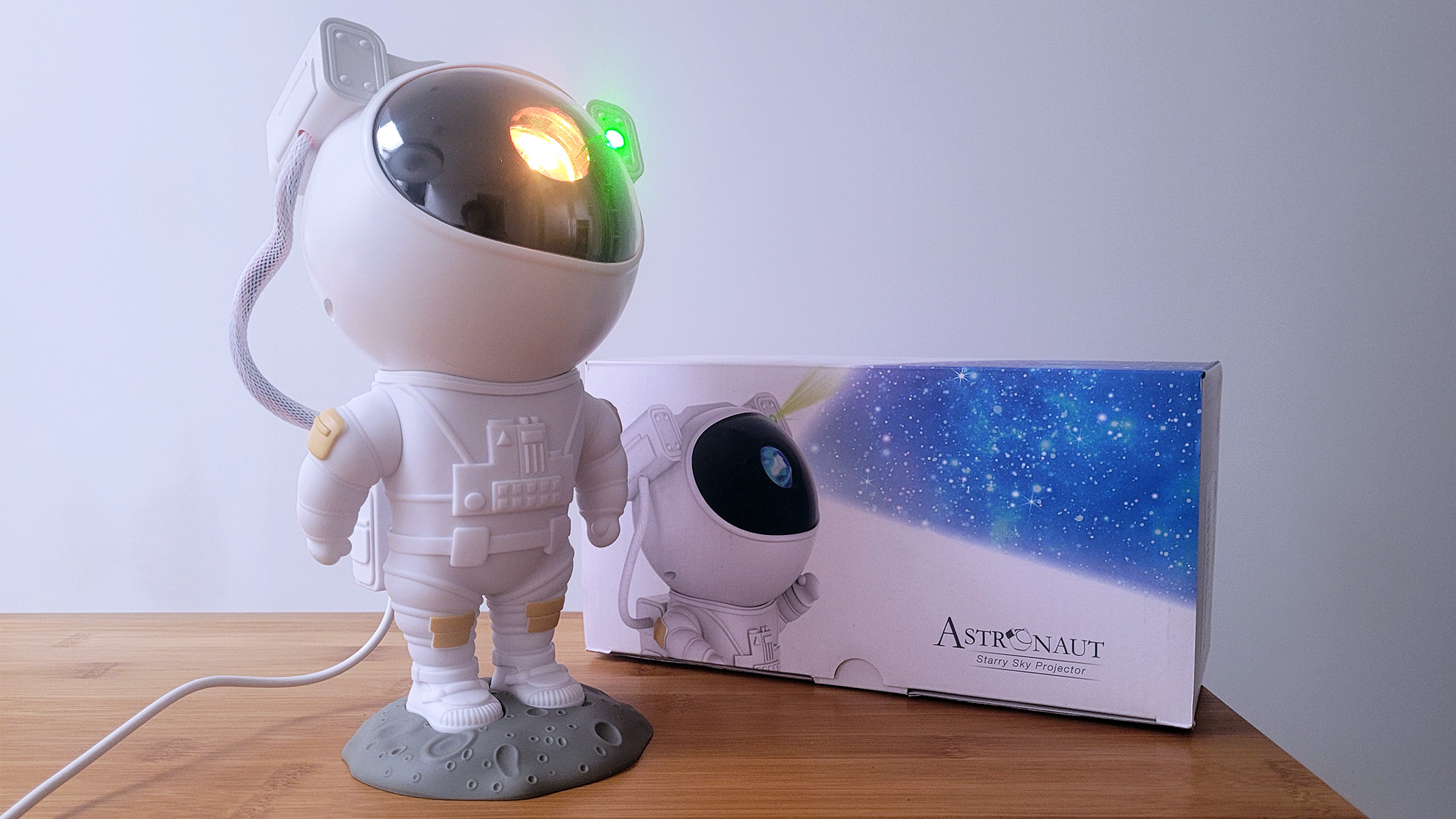
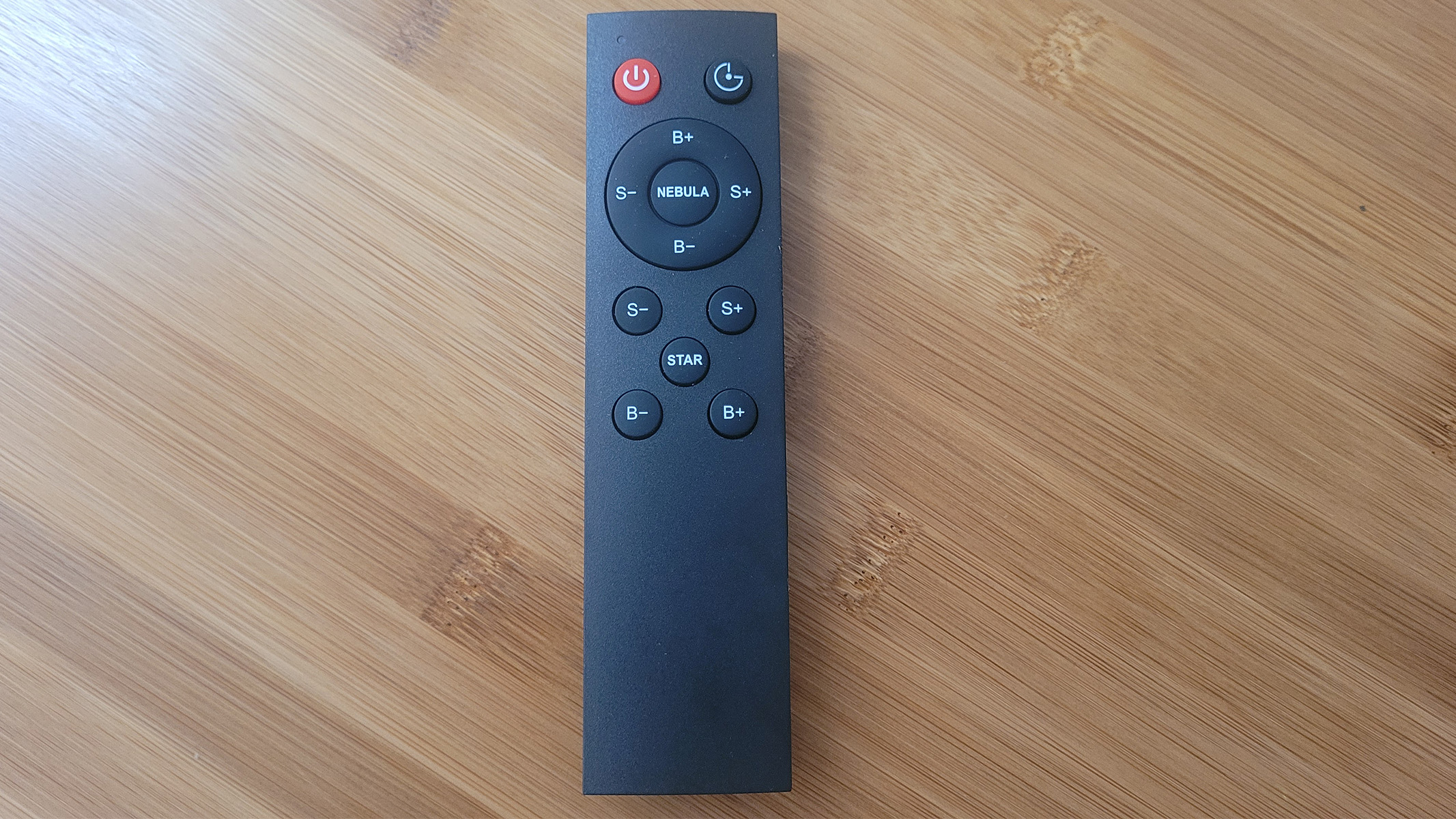
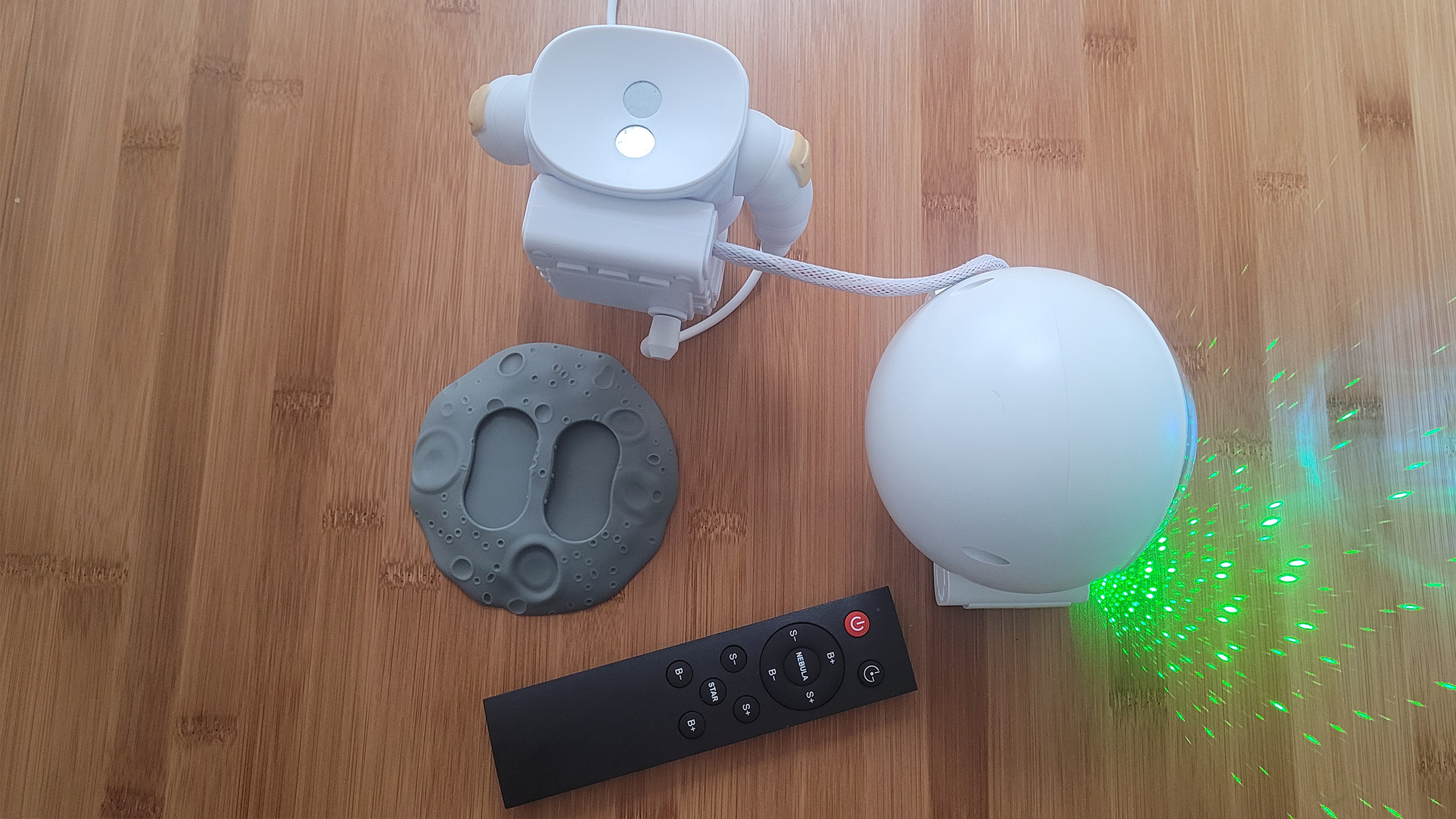
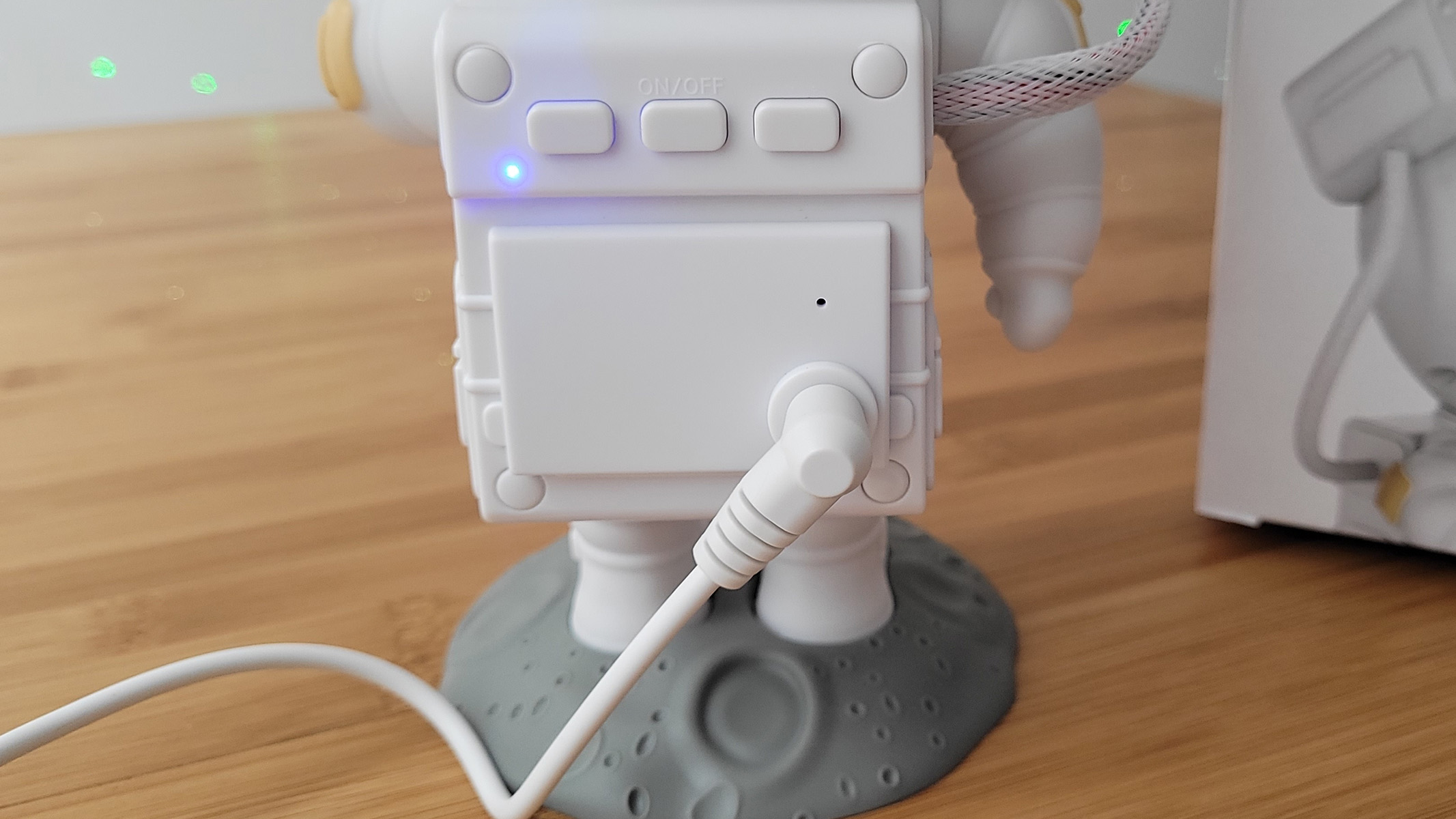
Specifications
Reasons to buy
Reasons to avoid
✅ You want a gift for a child: It features a novelty astronaut design that's primarily aimed at children, though in our experience, adults love it too!
❌ The price is too high: This is another star projector where the price fluctuates wildly — we've seen it priced anywhere from $10 to $100. We'd be happy paying anything under $35 for it.
🔎 Astronaut Starry Sky Star Projector: A well-made novelty star projector that every kid, or space fan, will love to have in their bedroom. It isn't quite on par with other star projectors performance-wise, but it does everything we'd expect of it, given its reasonable price. ★★★★
While it's tempting to dismiss low-cost objects that go viral on TikTok, the Astronaut Starry Sky Star Projector proved us wrong. In our Astronaut Starry Sky Star Projector review, we were pleasantly surprised by how well made it was. It shattered our skepticism, ticking all the boxes a fun, novelty star projector should.
As you can probably assume from its price point, the Astronaut Starry Sky Star Projector is not a scientifically accurate projector. What it is, however, is a fun light show in an appealing novelty package. It might not provide an introduction to real-world nebulas and star systems, it does produce a fantastic display of light and colour, one that we think makes a great gift for any age.
Don't be put off by its underwhelming packaging. In operation, the Astronaut Starry Sky Star Projector is really impressive. As we mentioned in our review, the lighting module seems to be the same — if just a tiny bit less impressive — as other star projectors we have reviewed, including the BlissLights Sky Lite 2.0 and the Encalife Atmosphere Smart Galaxy Star Projector. It isn't based on science, unfortunately, so you won't be able to use this as an educational tool. But as long as you're happy to simply enjoy a pretty visual representation of the night sky, you'll get a lot of joy out of this. It helps that it's very quiet in use, too.
Since this is a non-branded product, you'll find many replicas of the Astronaut Starry Sky Star Projector available online. It can be hard to ensure you're buying the proper thing, but you should definitely be cautious of sellers advertising the projector for as little as $10, as you might end up disappointed with a low-quality product.
If we're being picky, we didn't love the fact that it's powered by a USB-A to DC cable instead of a USB-C, which would have been a lot more convenient nowadays. Other than that, it's a fantastic gift for any space enthusiast.
Attributes | Notes |
|---|---|
Design | Novelty design more suited to children, but surprisingly good quality. |
Performance | Bright lights and lasers, pretty patterns. |
Functionality | Customizable settings, sleep timer. |
Best affordable known brand star projector
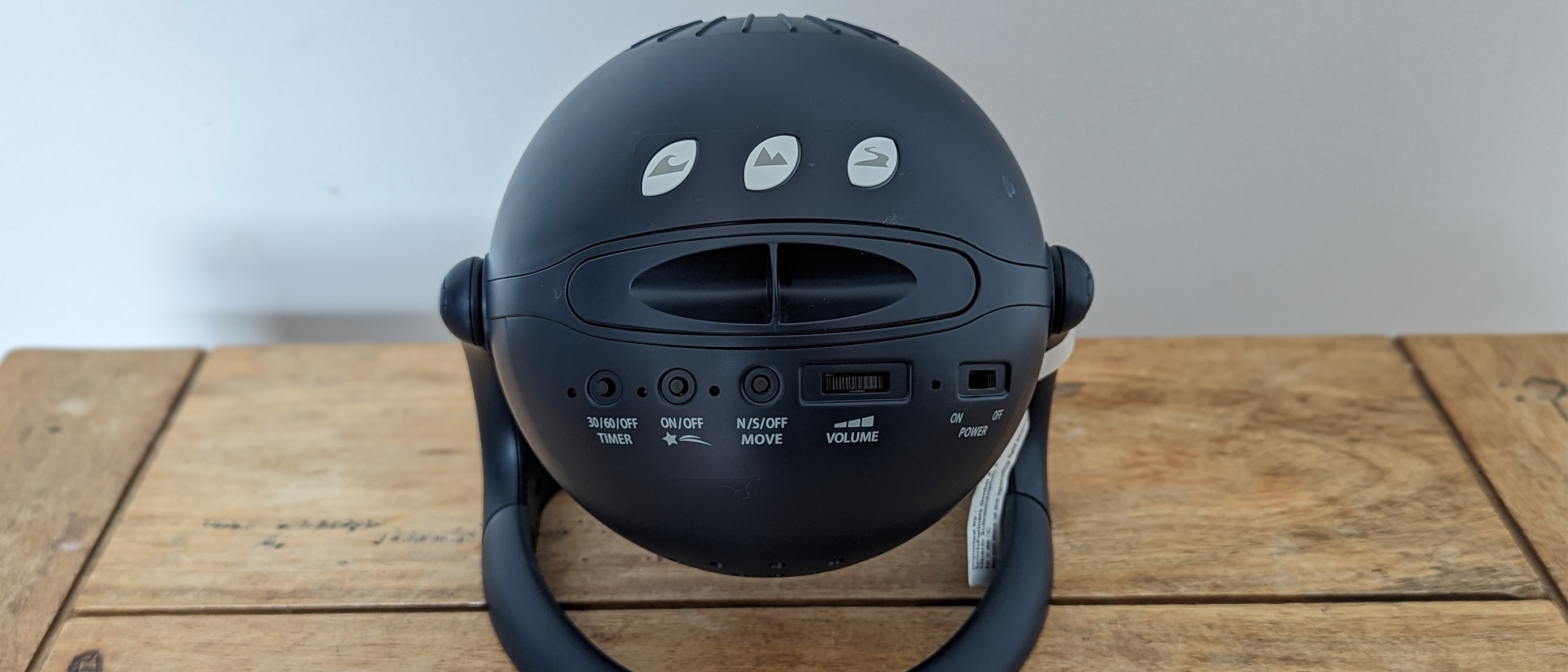
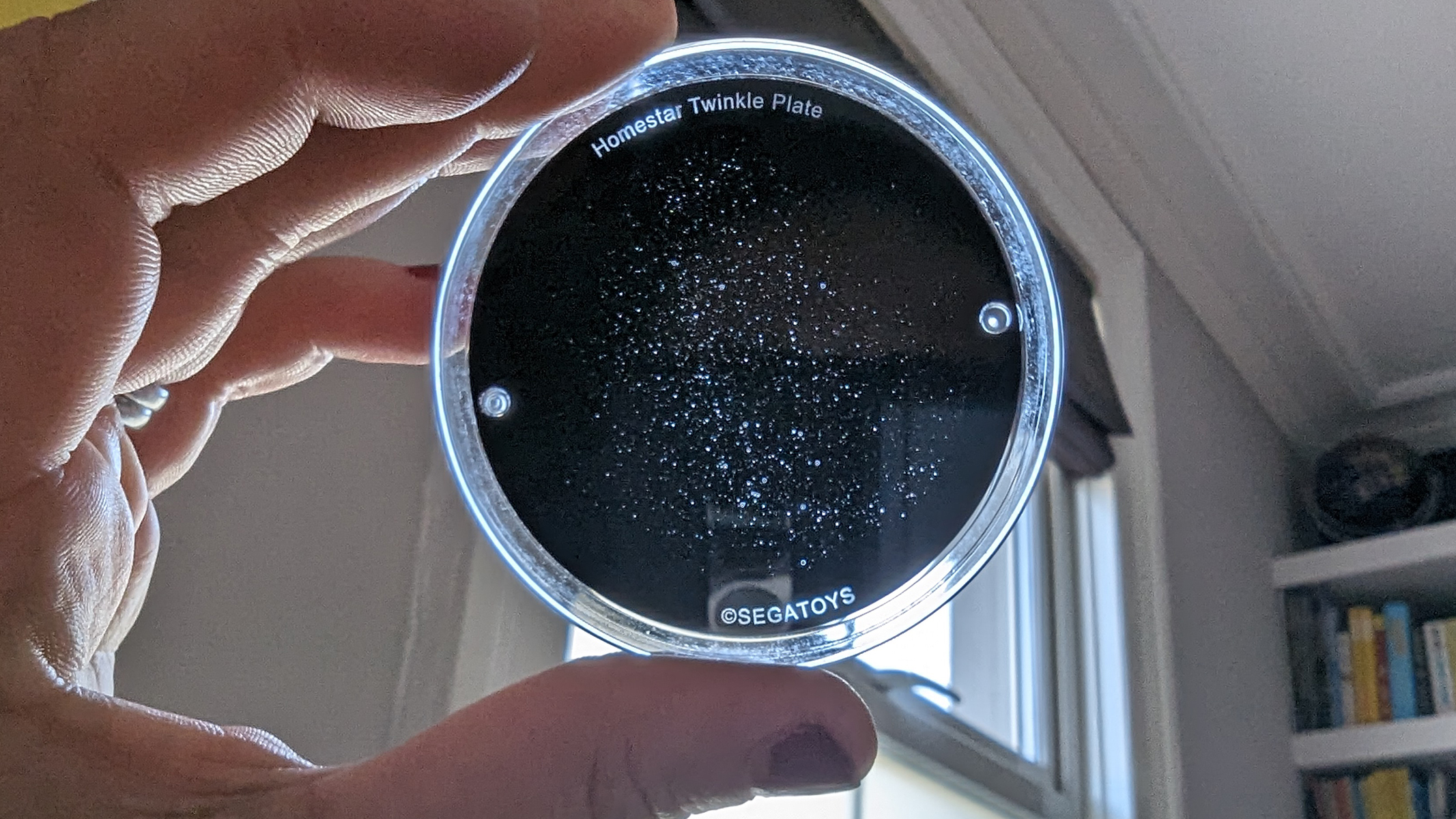
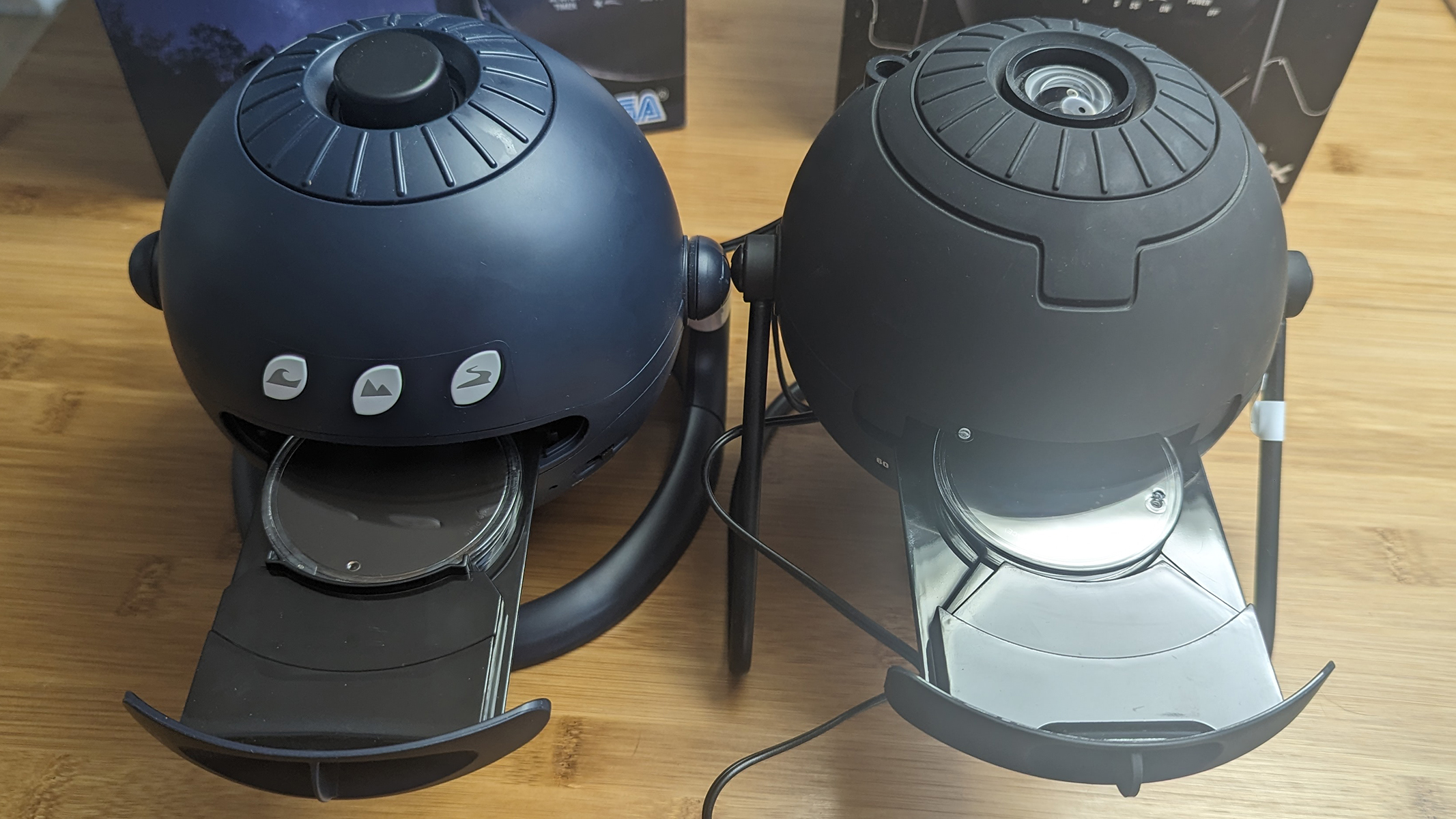
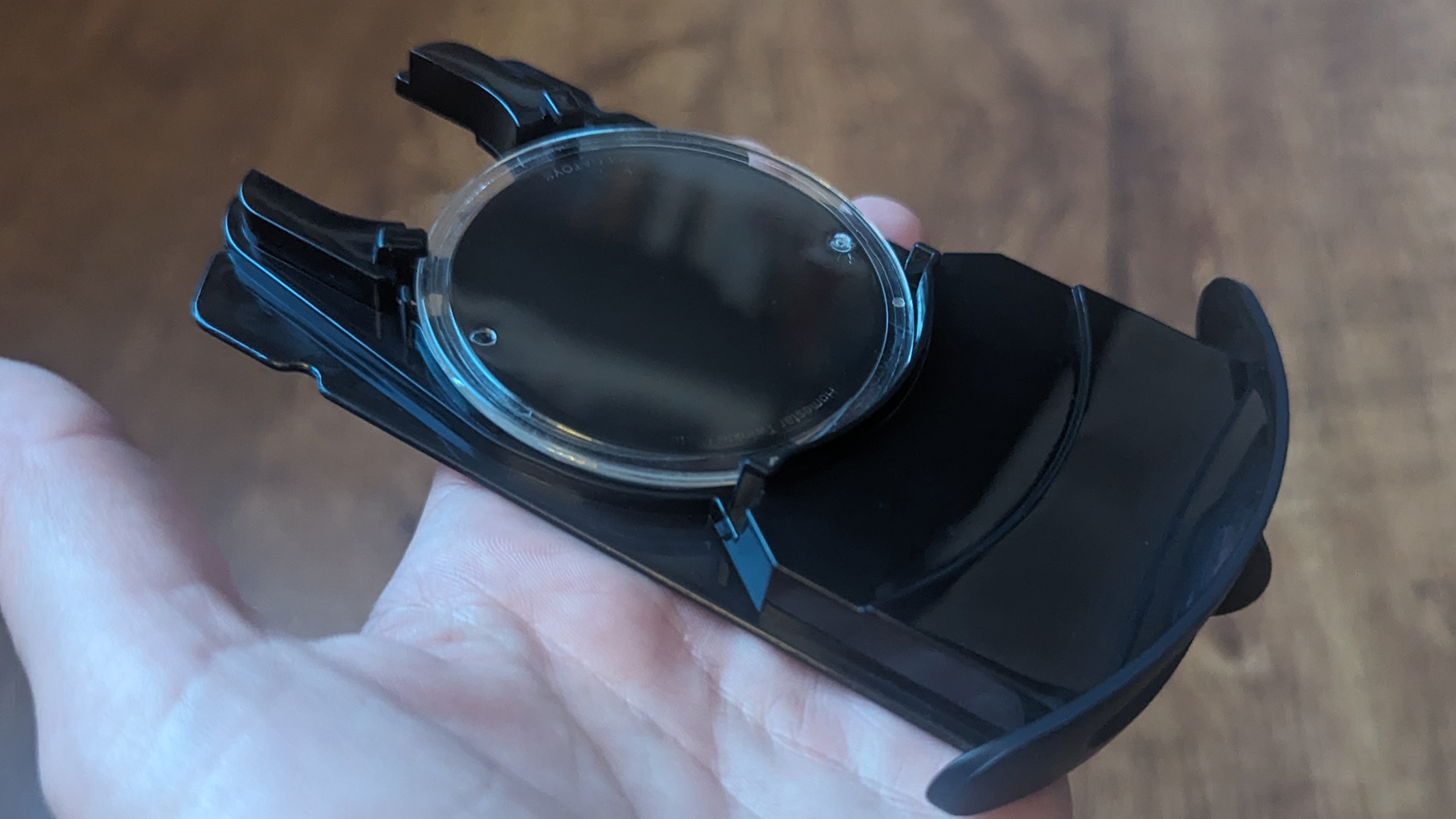
Specifications
Reasons to buy
Reasons to avoid
✅ You want all the bells and whistles: The Homestar Matataki has got new features that the Homestar Flux didn't have, from twinkling stars to inbuilt sounds.
✅ You already have discs from a Homestar Original or Flux: The Matataki is compatible with discs from previous models, which will save you money.
❌ You want a simple ambient light: This star projector is scientifically accurate and feature-rich, but it comes with a high price tag.
❌ You want a projection to fill the room: The projection circle is relatively small compared with other models that flood the whole room with color.
🔎 The Sega Toys Homestar Matataki is a more 'high-tech' version of its predecessor, introducing the magical twinkling star effect and adding sounds to its light displays. It's a great premium option if your budget extends to it. ★★★★½
If you want a star projector that can sing and dance, the Sega Toys Homestar Matataki is the one for you. This is the newest projector from Sega Toys, expanding on its excellent Homestar Flux (which you'll find at the top of this list). Rather than replace the Flux, however, the Matataki sits alongside it, adding a range of new features.
Perhaps the most striking new feature is the addition of a 'twinkle plate' which gives the illusion of twinkling stars and adds a lot of depth to the visual experience. The star projector also comes with sounds included, which is a nice added bonus but by no means a necessity considering the amount of free sleep sounds you can source from streaming platforms.
During our Homestar Matataki review, we appreciated how silently it runs and the brightness of the displays. That said, we found the Homestar Flux offers higher-contrast images and sharper stars, which is why it remains at the top of our list. In terms of price and availability, however, the Matataki clearly takes the win against its predecessor. We did appreciate that the discs for the Flux and the Homestar Original are compatible with the Matataki, potentially reducing your investment if you own one of these models.
While we love all the extra functionality and the beautiful imagery the Matataki comes with, we just wish Sega Toys had made the projector powered by USB-C or A rather than mains-powered. While this might seem like a trivial issue, it does greatly limit where you can position the projector, and considering this one has a relatively small projection circle, it could be a dealbreaker.
Attributes | Notes |
|---|---|
Design | Intuitive interface and similar design to other projectors. |
Performance | Bright images and twinkling stars. |
Functionality | In-built sounds and premium features. |
Best for pastel shades
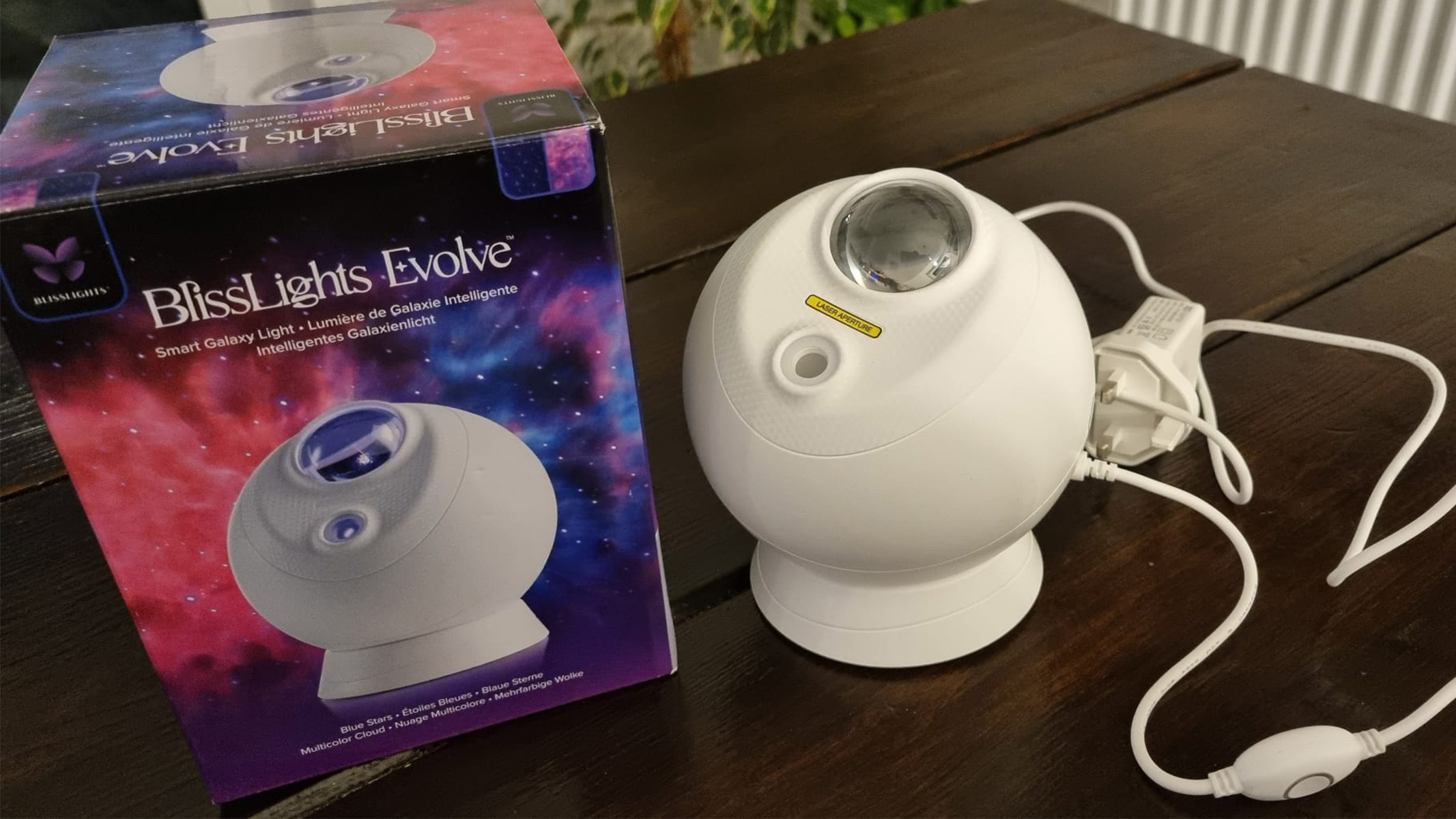
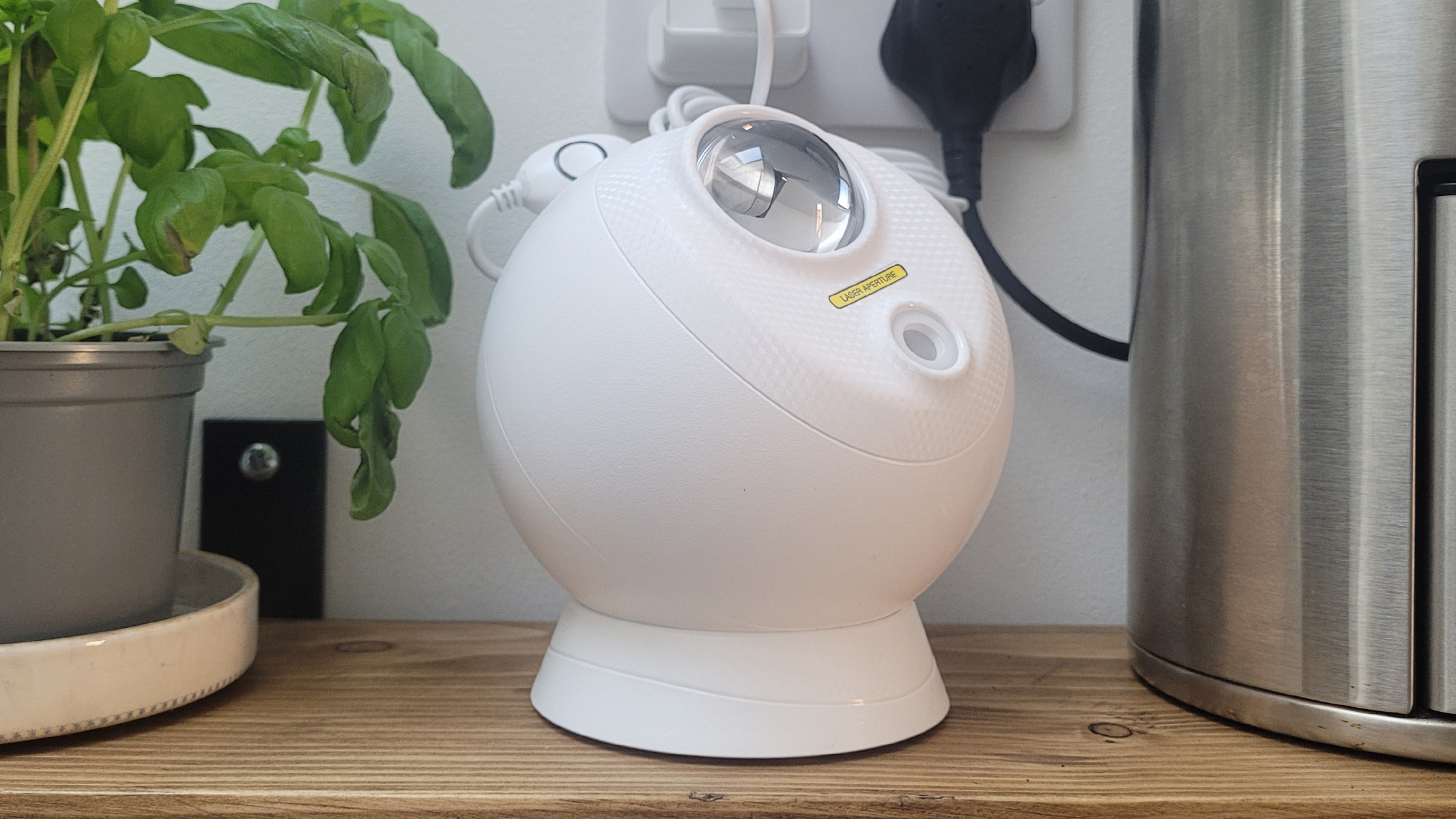
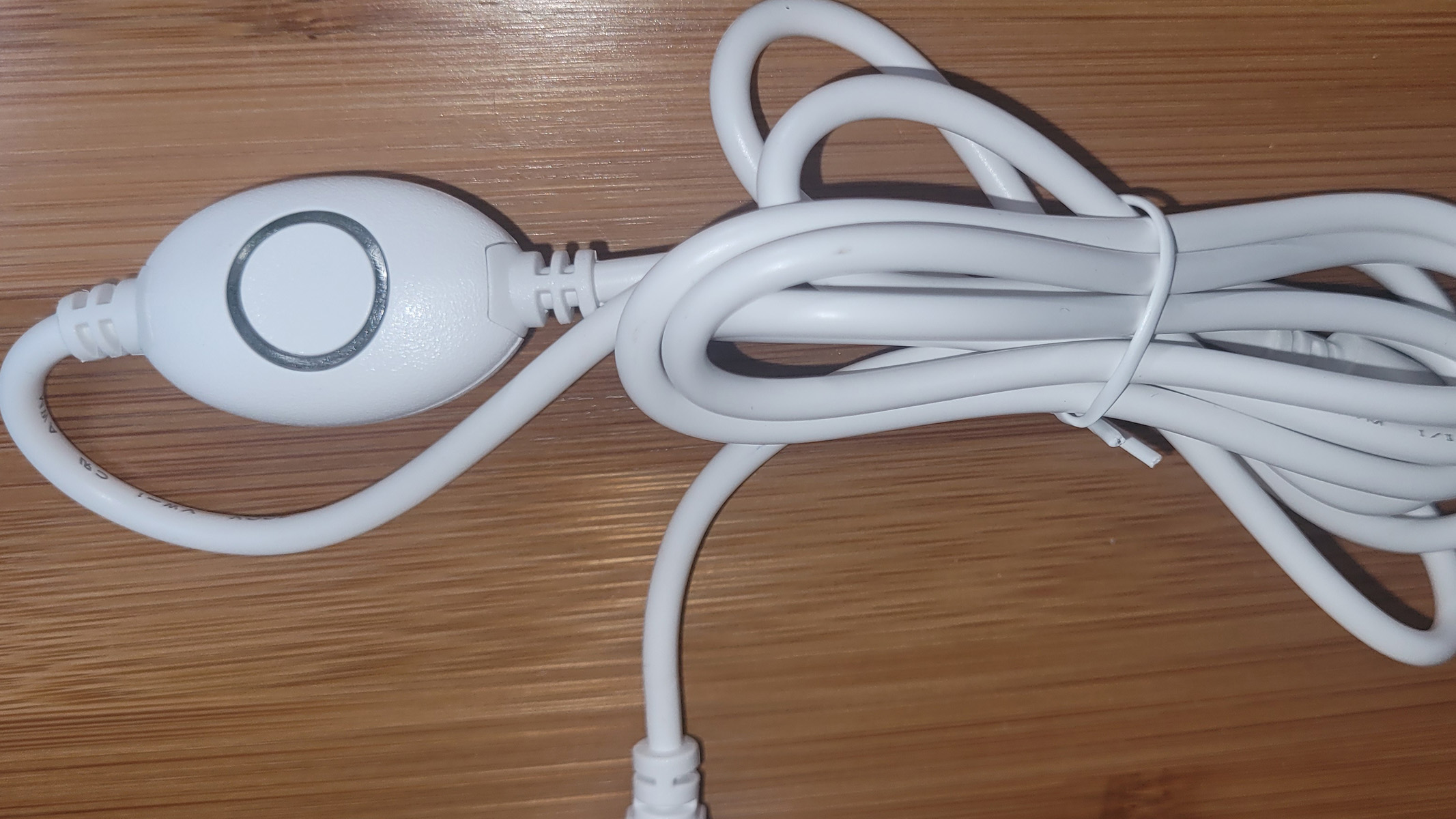
Specifications
Reasons to buy
Reasons to avoid
✅ You want a lot of customization: Although the laser 'stars' can only appear as blue or green (depending on which model you get), you can customize the clouds through the app.
✅ You want a smart home compatible projector: It can work with both a Google and Alexa home device, so you can turn it on and off and give other commands with your voice.
❌ You want it to be scientifically accurate: This projector is for adding atmosphere and projecting pretty colors rather than providing any kind of scientific accuracy.
🔎 BlissLights Sky Lite Evolve The nebulas are bright and endearing, complimented perfectly by the hue of the blue/green lasers. This is a great option for anyone shopping for an aesthetic star projector rather than a scientific one. ★★★½
The BlissLights Sky Lite Evolve has a near 360-degree angling thanks to its spherical design. Few other star projectors offer so much coverage, and the 1.5m cable its comes with means you should be able to position it in the most optimal location in any room.
This star projector's smart features are what really stood out in our BlissLights Sky Lite Evolve review. You can use this so-called 'galaxy light' in conjunction with several smart home systems, from Google Assistant to Amazon Alexa, which enables you to change its colours or turn it on or off at the sound of your voice.
Perhaps one of the best things about the BlissLights Sky Lite Evolve is how silently it operates, making the experience a truly relaxing one and allowing you to focus on the stars. It also makes use of a patented color-blending technology, which means instead of using solid color blocks, its four LED lamps are capable of providing a broader range of colour options. This results in softer blended colors and a beautiful, almost pastel-like palette, contributing to the calming atmosphere.
You can choose between three models — blue, green or no lasers — and we think it's a great pick for lighting up parties, adding ambience to your movie night or gaming tool, or as a a relaxing ambient light to help you fall asleep.
- Read our full BlissLights Sky Lite Evolve review
Attributes | Notes |
|---|---|
Design | Small and discrete, spherical design. |
Performance | Bright stars and nebulas. |
Functionality | Highly customizable. |
Best value rechargeable star projector
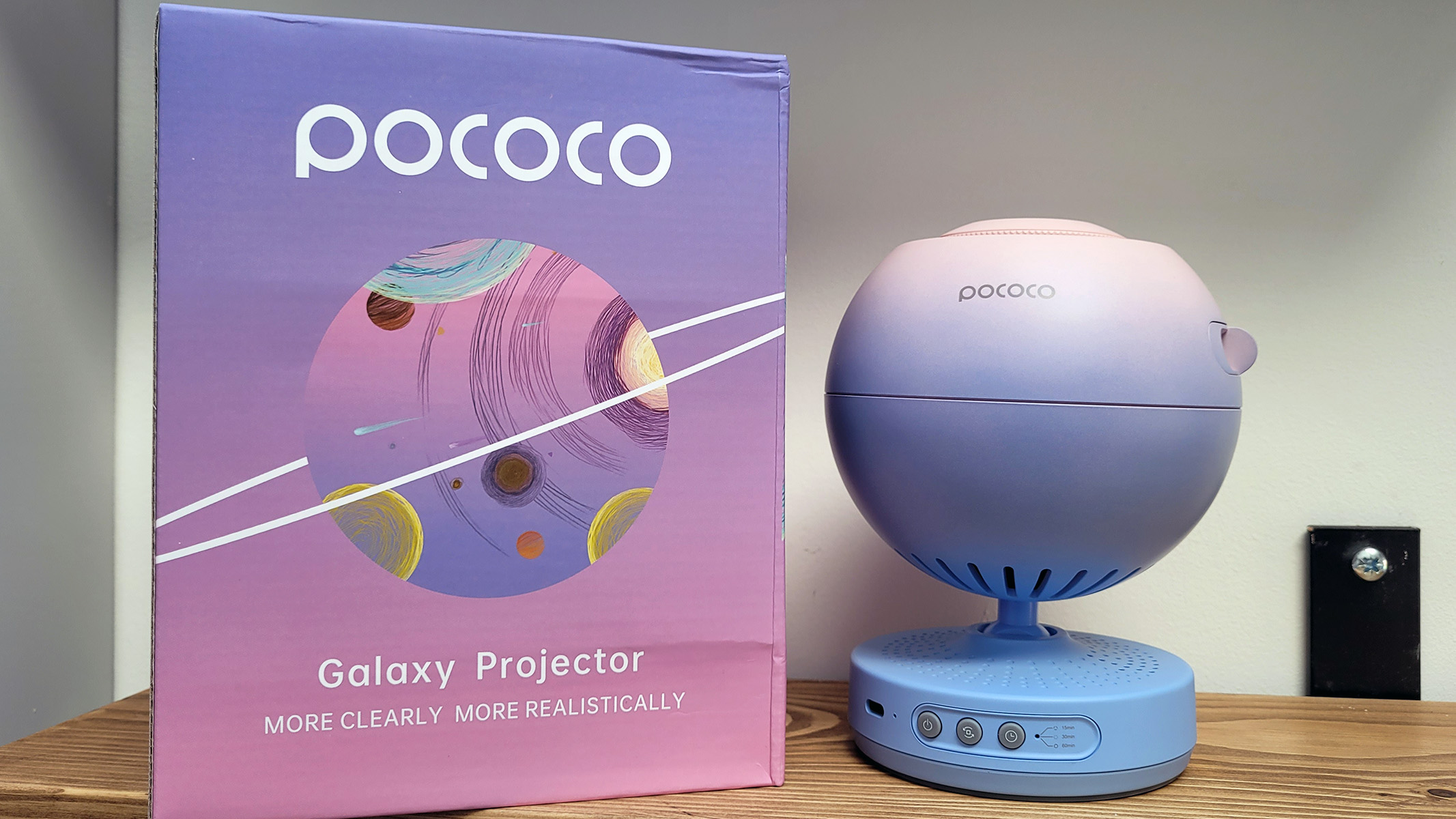
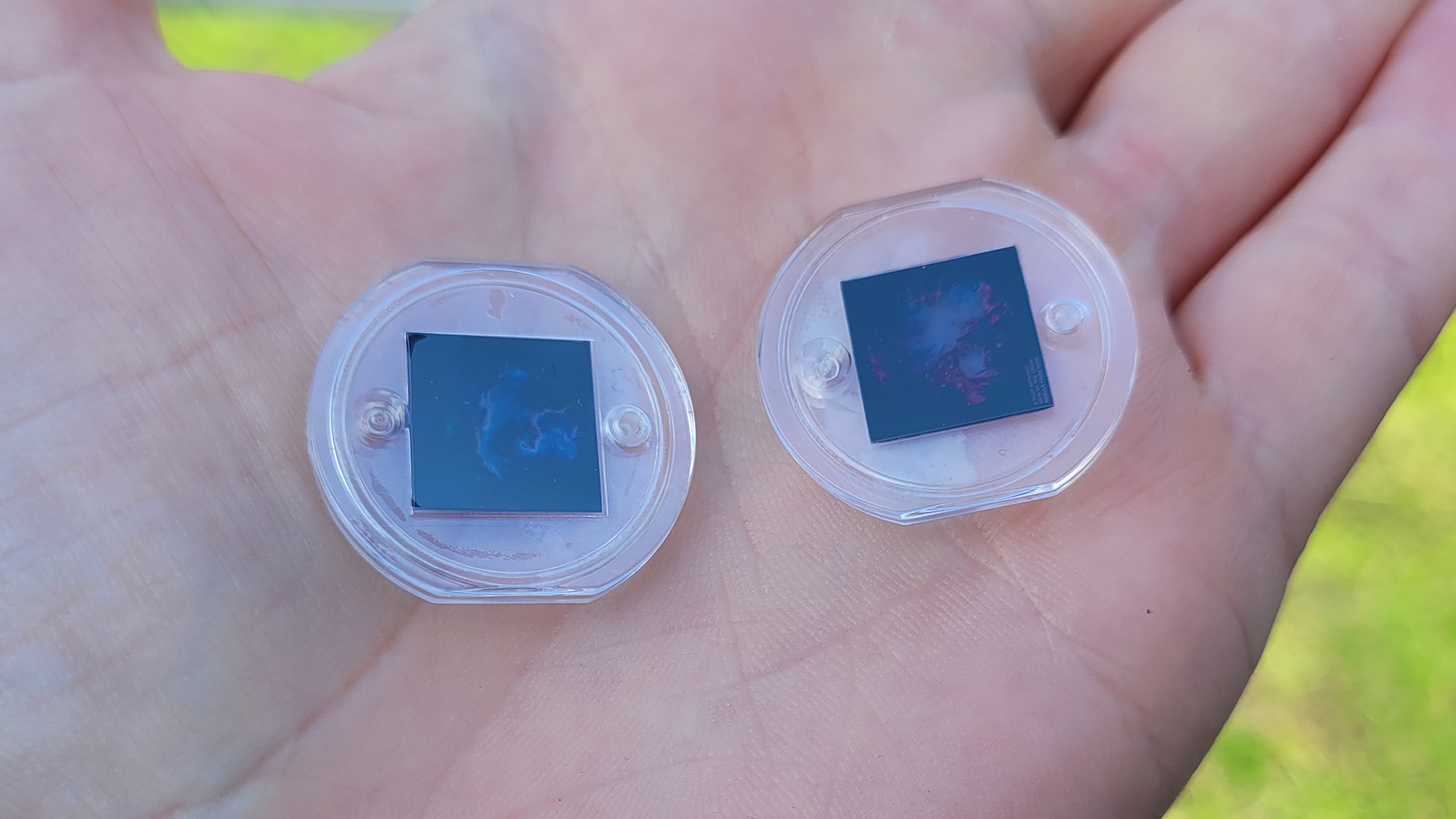
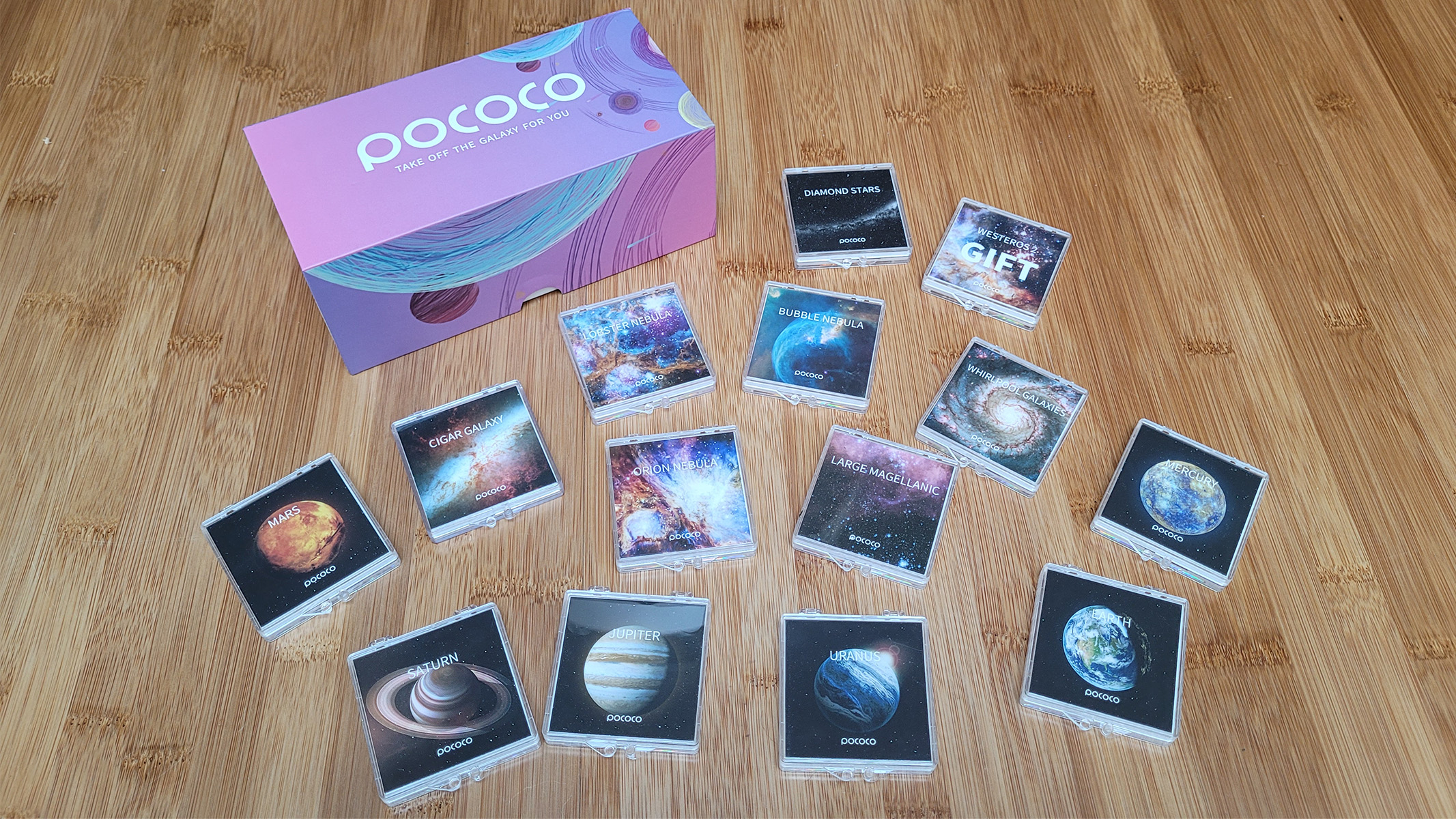
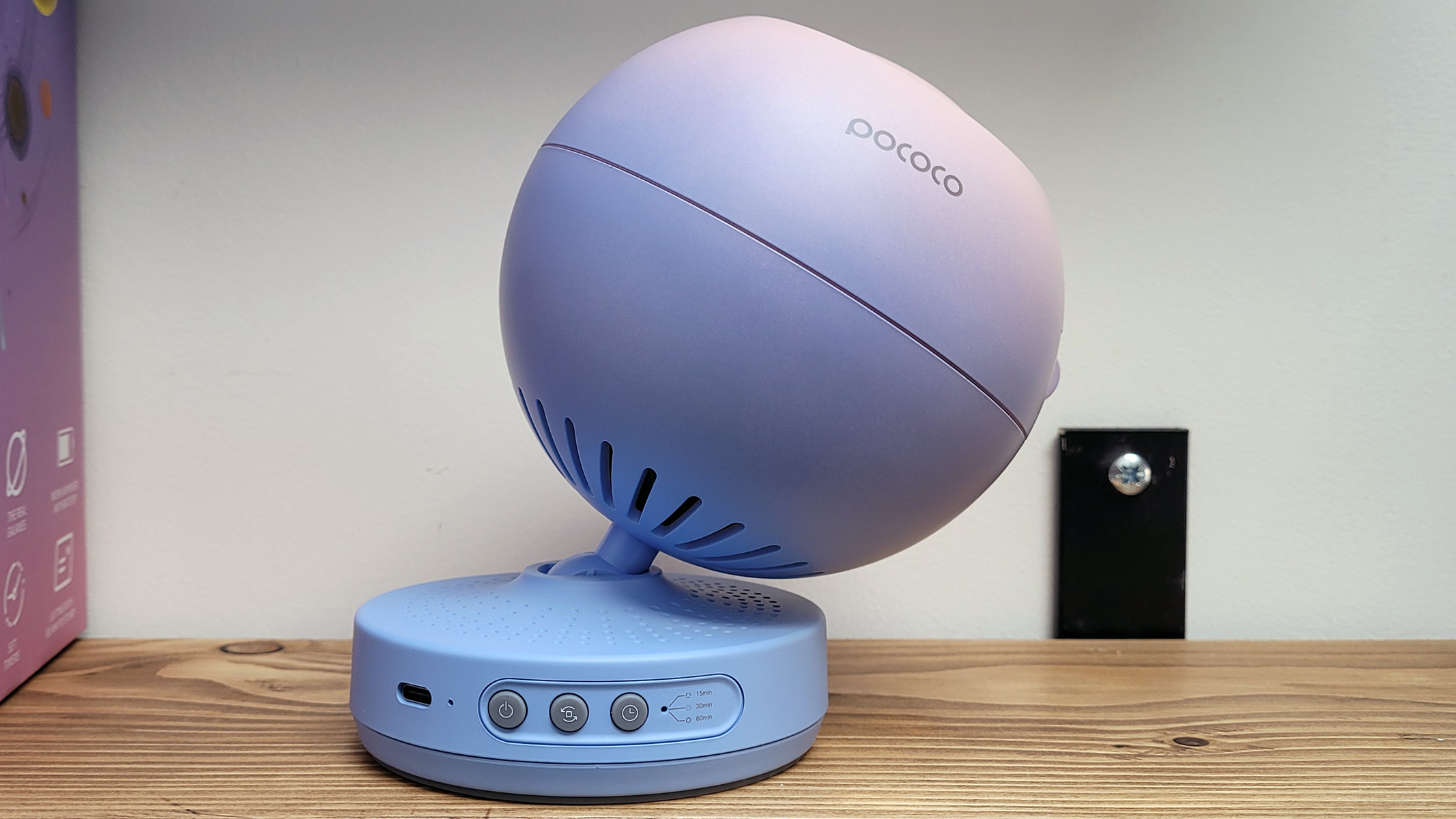
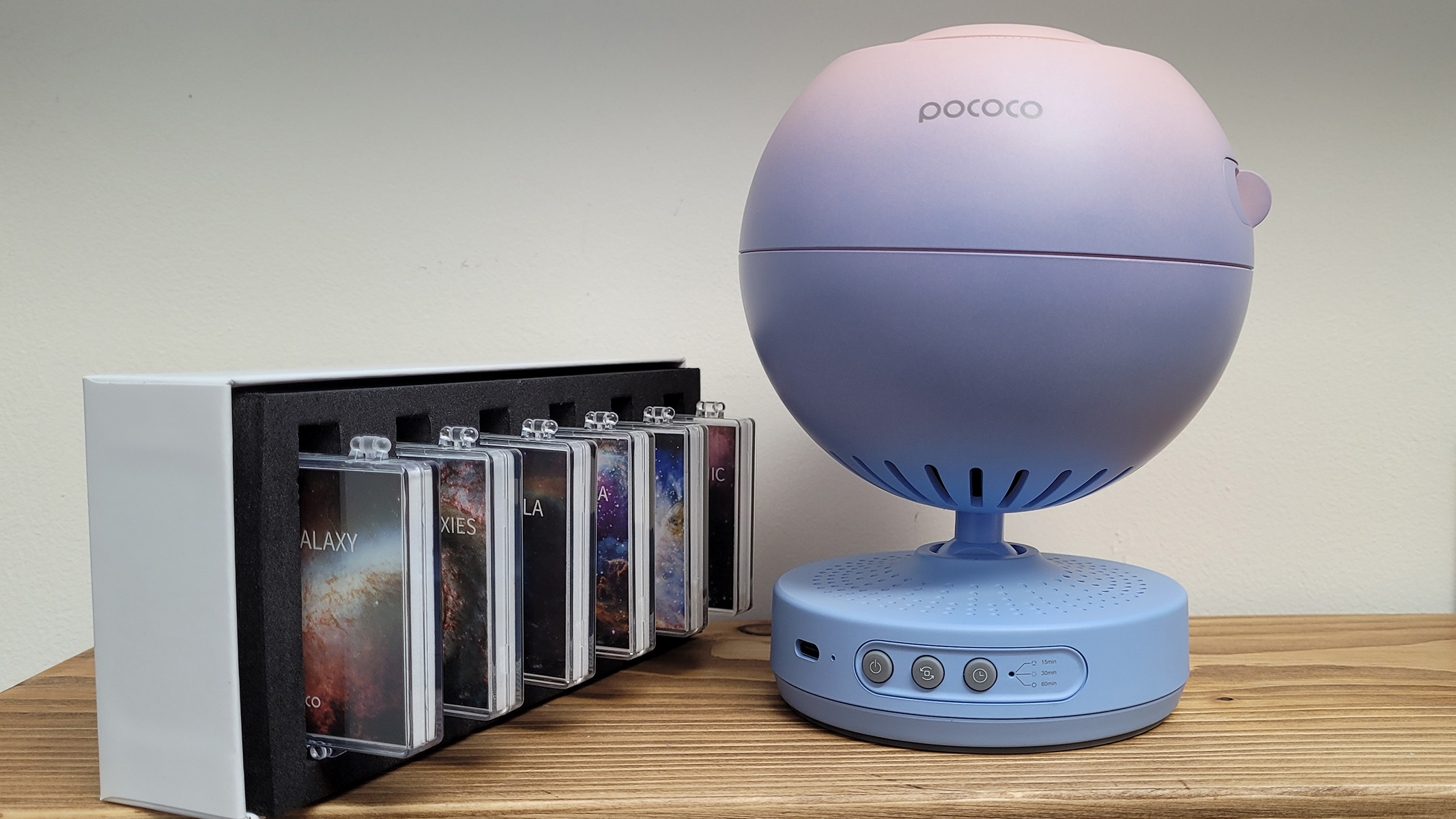
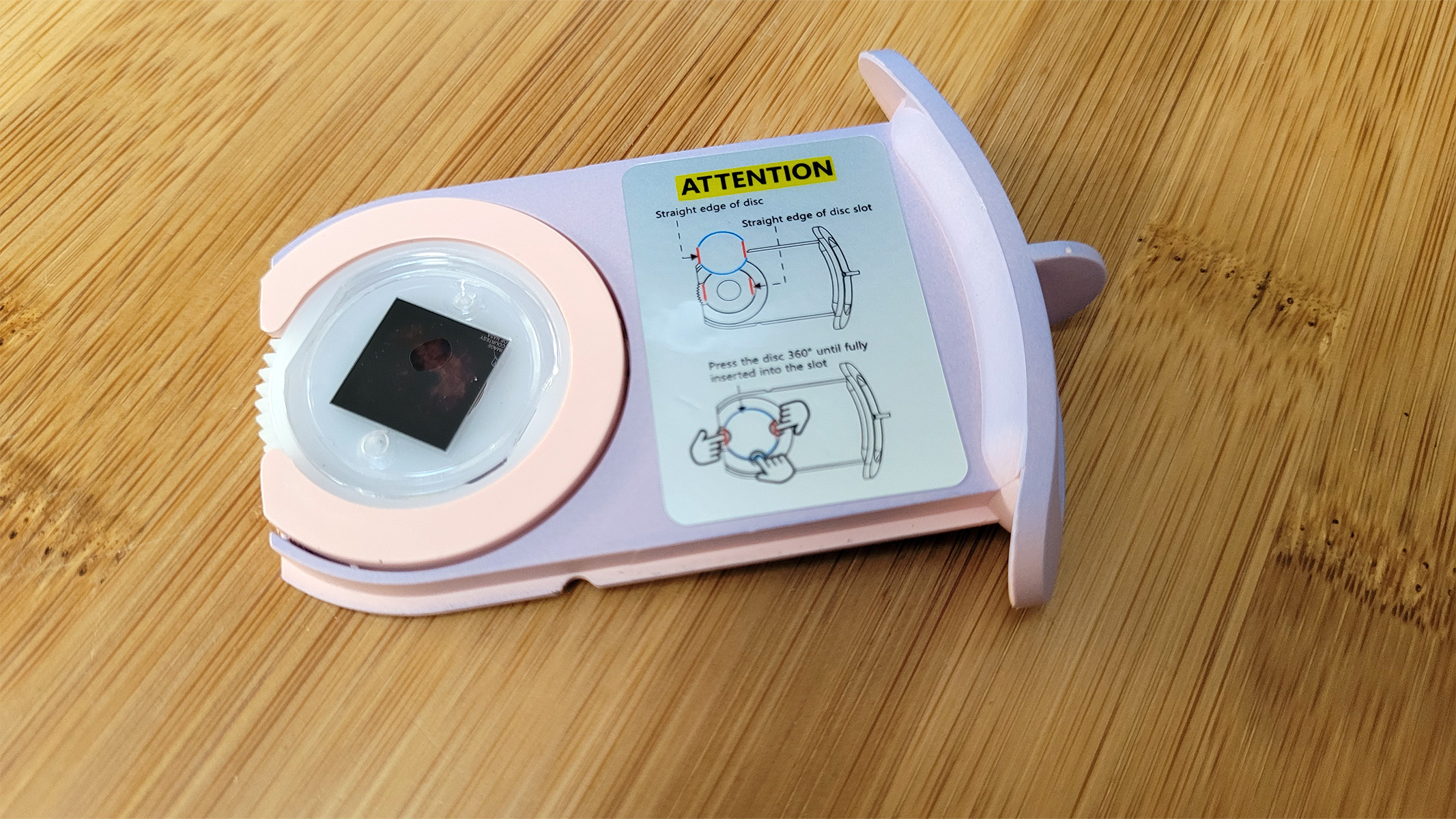
Specifications
Reasons to buy
Reasons to avoid
✅ You want realistic imagery: The projections from this projector are incredibly bright, sharp and high resolution, almost indistinguishable from the 'big players'.
❌ You just want something cheap to set the mood: This certainly isn't the most expensive model on this list, but if all you're looking for is a projector with nice lights to create a relaxing atmosphere, there are cheaper options that will do the job.
🔎The Pococo Galaxy Star Projector does what it's supposed to do — it projects high-quality imagery onto any surface to immerse you in the wonders of what the universe has to offer, maintaining a static picture or slowly rotating the image. ★★★★
The Pococo Galaxy Star Projector definitely provides incredible value. For the price, it's solidly-built and in our Pococo Galaxy Star Projector review, we were really impressed with the realistic images it displays.
Like the Sega Toys Homestar models, the Pococo Galaxy Star Projector uses discs that display different views of the night sky. They're all scientifically accurate and, aside from the two supplied with the device, more can be picked up separately for around $50 for six.
This projector is very easy to control thanks to the three buttons on its body: Power, rotation and sleep timer. It's set apart from other star projectors on the market by its rechargeable battery. It can be charged with a USB-C cable and, since you don't have to have it plugged in when in use, it's great for using in different locations. It's also made of recycled materials, another thing that should please environmentally-conscious buyers.
This projector will appeal to both kids and adults. It's available in a stylish color gradient or a matte white finish. Adjusting the clarity of the projection only requires using the focus wheel, which is handy if you want to move it between different surfaces or rooms.
The downside of the Pococo's design is you only have 30 degrees of movement to shine the lights, which is considerably less than some of its competitors, but not a deal breaker if you only intent to shine it at the ceiling.
- Read our full Pococo Galaxy star projector review
Attributes | Notes |
|---|---|
Design | Simple, attractive design. |
Performance | Bright, high-resolution projections. |
Functionality | Simple operation, no apps needed, rechargeable. |
Best for education
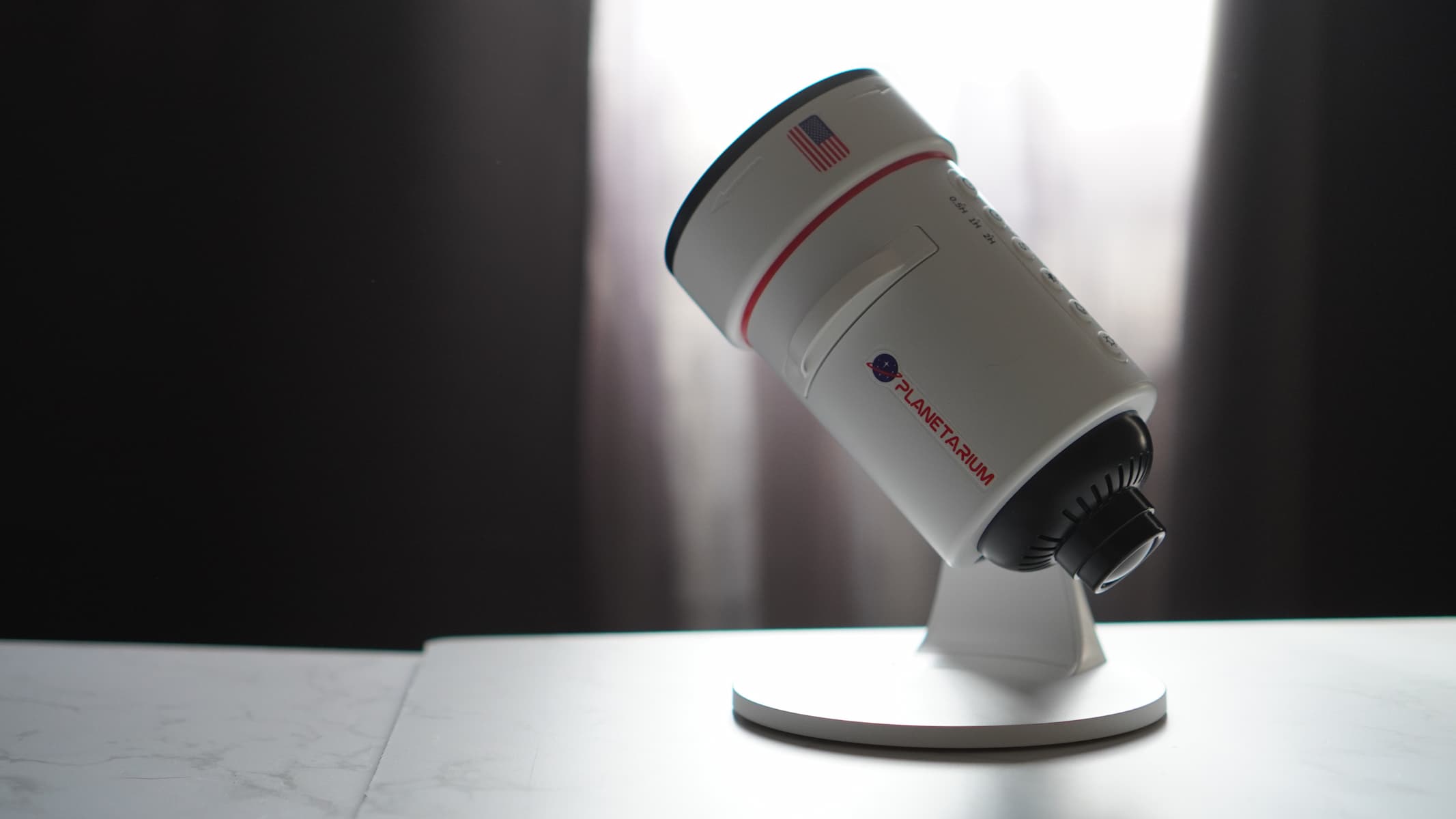
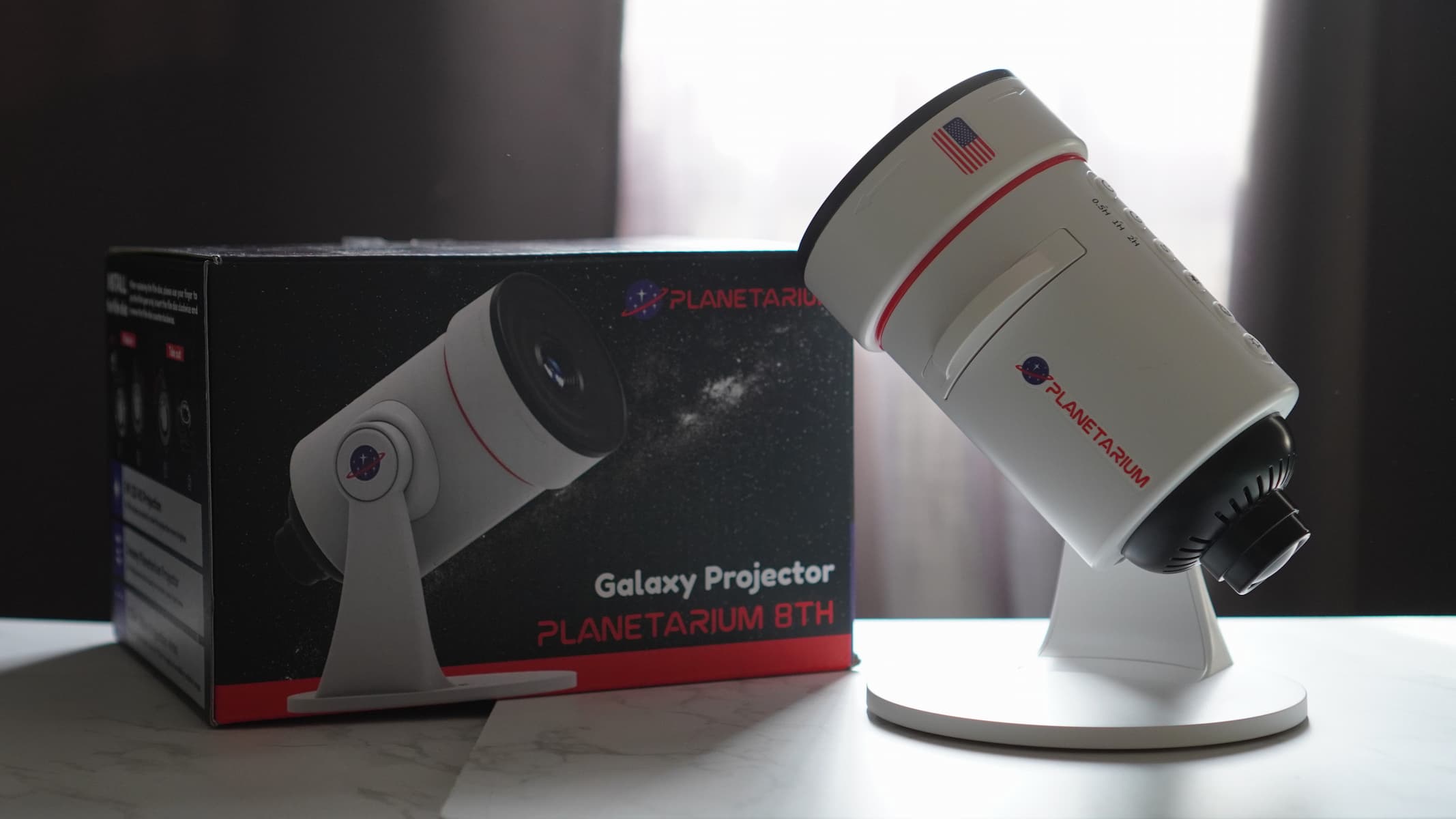
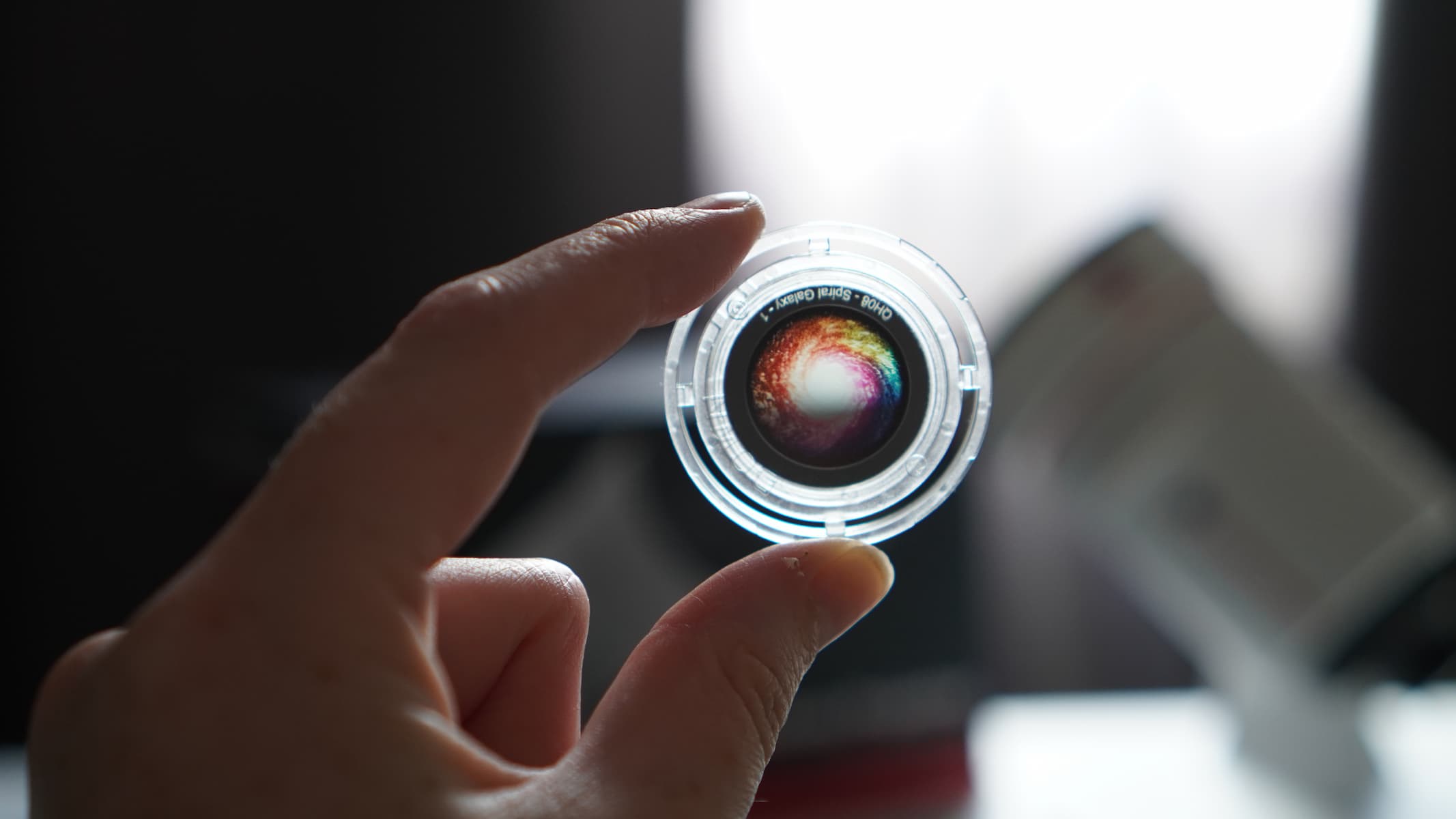
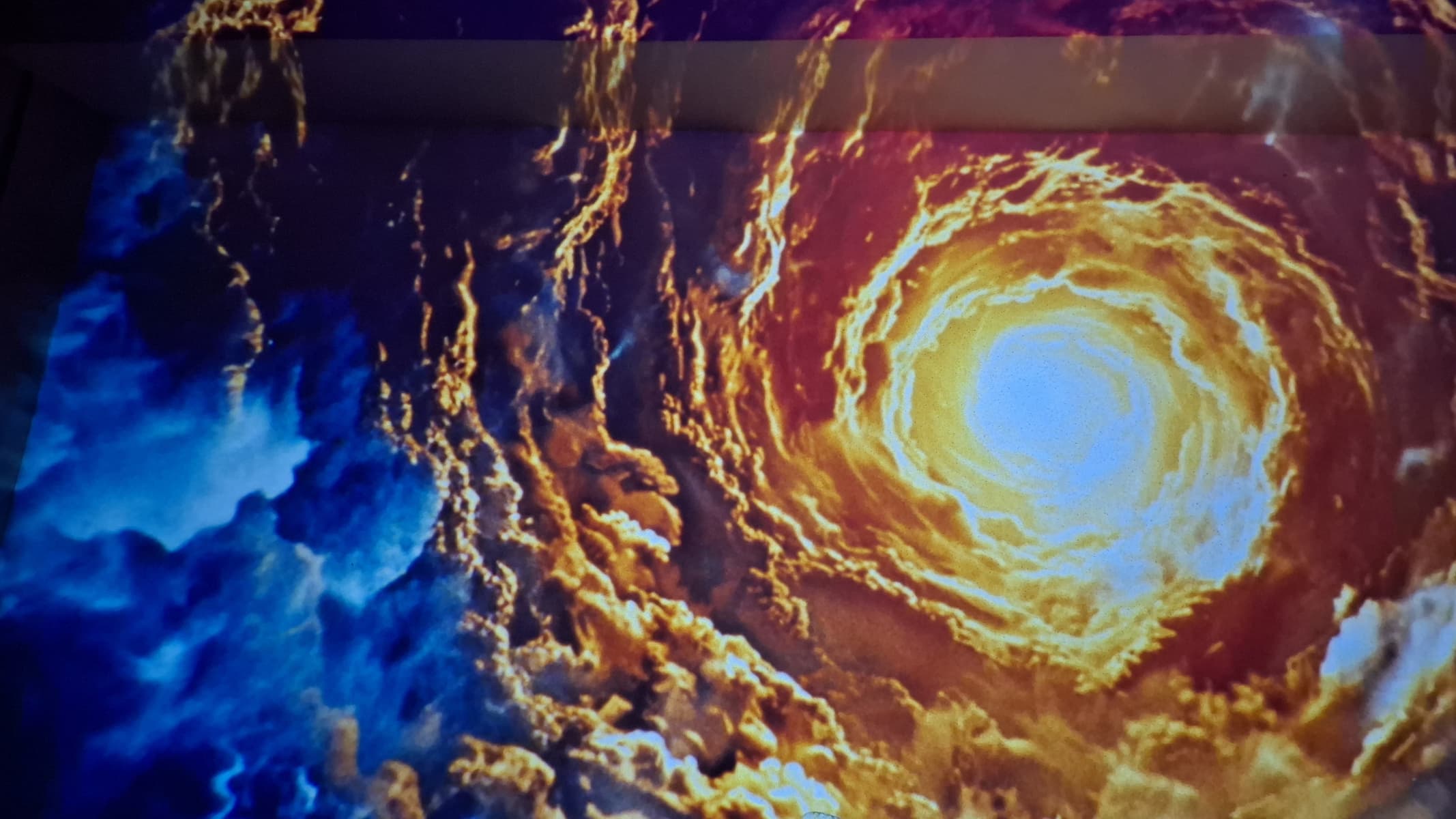
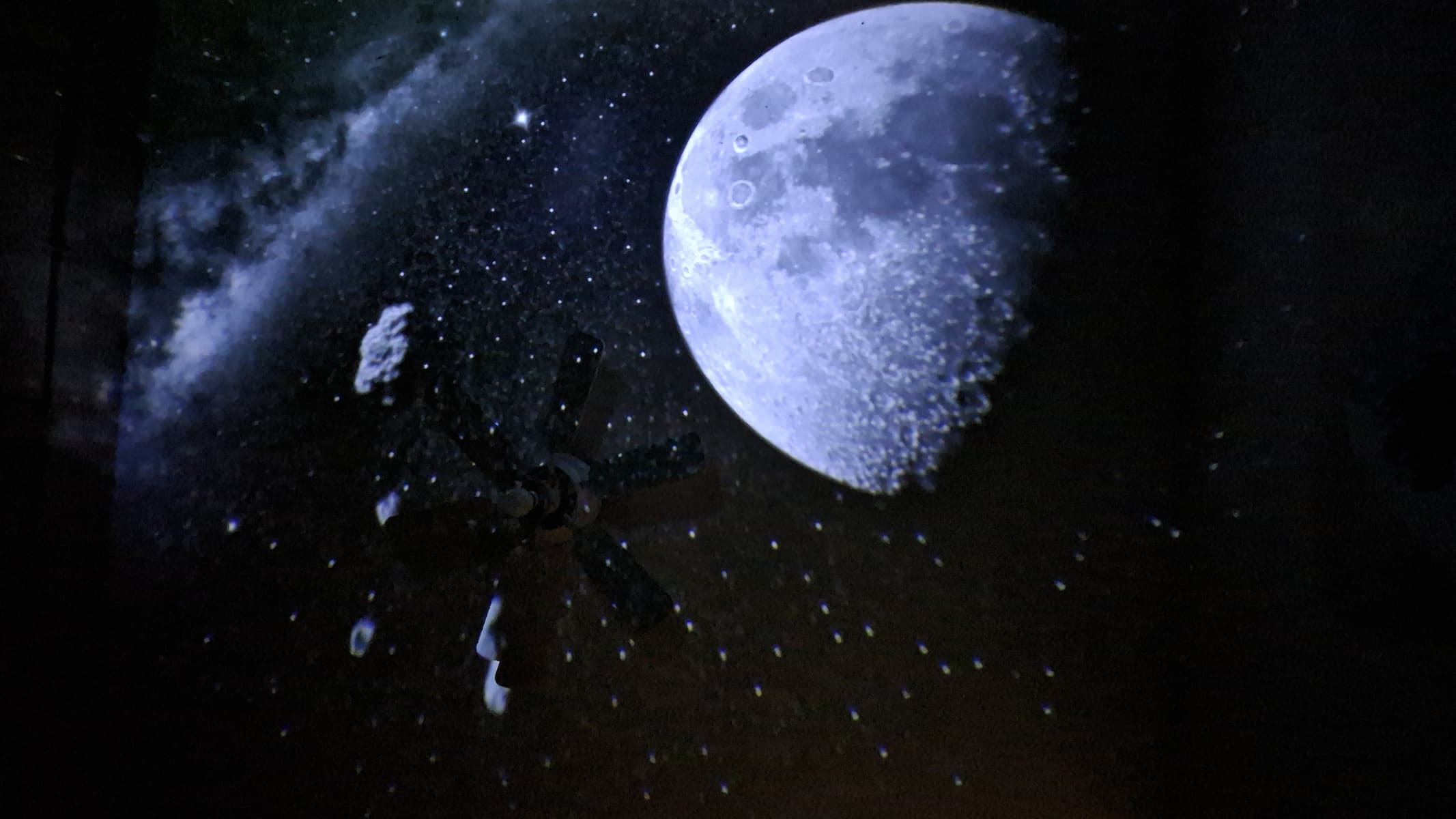
Specifications
Reasons to buy
Reasons to avoid
✅ You want scientifically accurate images: The projections are exceptional quality and scientifically accurate giving you, and your children, a chance to learn more about space without a cloudy night getting in the way.
❌ You want a remote control: This projector doesn't come with a remote control which may be bothersome if you're hoping to relax while watching the projections.
🔎 Hommkiety Galaxy Projector For a bargain price, you get amazing and accurate images of space that are great for educational purposes ★★★★★
This is a solid and well-built projector that looks more like a scientific instrument than a toy. There is a premium feel to this projector and, once you start viewing the disks, you'll also be blown away. In our full review of the Hommkiety Galaxy Projector, our reviewer said, "Only one word came out of our mouth when we first turned on the Hommkiety Galaxy Projector: 'Wow!'" The image quality is truly astounding, especially when compared to other projectors at more than twice its price. Not only are the images impressive, they are also scientifically accurate which makes this the perfect projector for education.
The projector can be positioned to face any wall or ceiling as long as it's on a 180-degree scale. The design makes this projector look more like a telescope than a projector which is quite interesting. To focus it, you simply use the focus wheel on the outside of the projector light — focusing took seconds to accomplish resulting in pin-sharp images. Sadly though, there is no remote control. However, we didn't find this too much of an issue as the controls on the side of the projector are easy to use.
The Hommkiety Galaxy Projector comes with ten disks ranging from the Moon, to the Spiral Galaxy, the solar system and even to jellyfish. Every image was vivid and accurate. And a nice addition is the built-in sleep timer, meaning you can view these beautiful images before bed, knowing the projector will eventually turn itself off.
Attributes | Notes |
|---|---|
Design | Looks like a scientific tool rather than a toy. |
Performance | Image quality is outstanding for the price. |
Functionality | USB powered, no remote control but easy to use controls on the projector itself. |
Best multi-functional scientific star projector
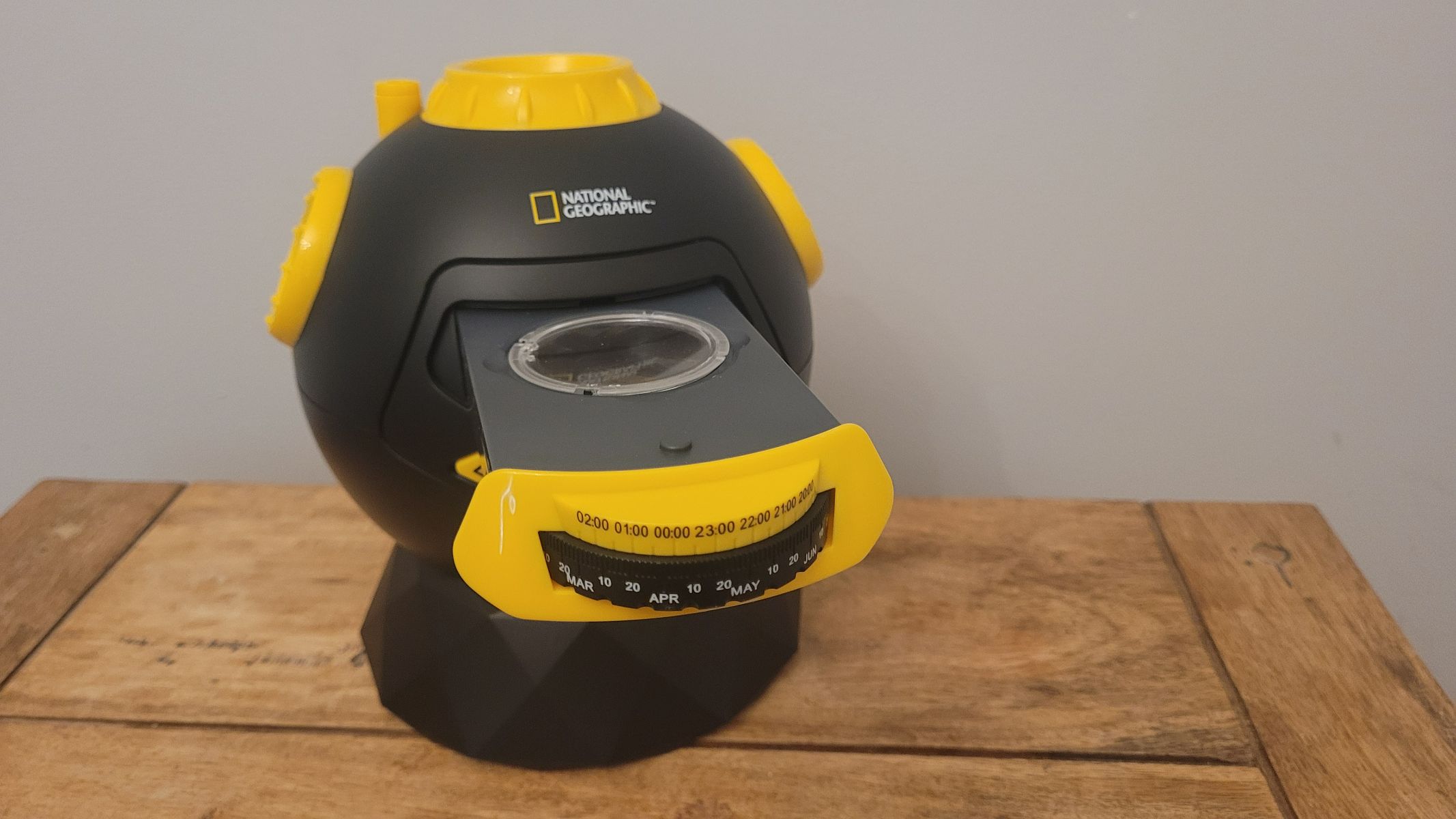
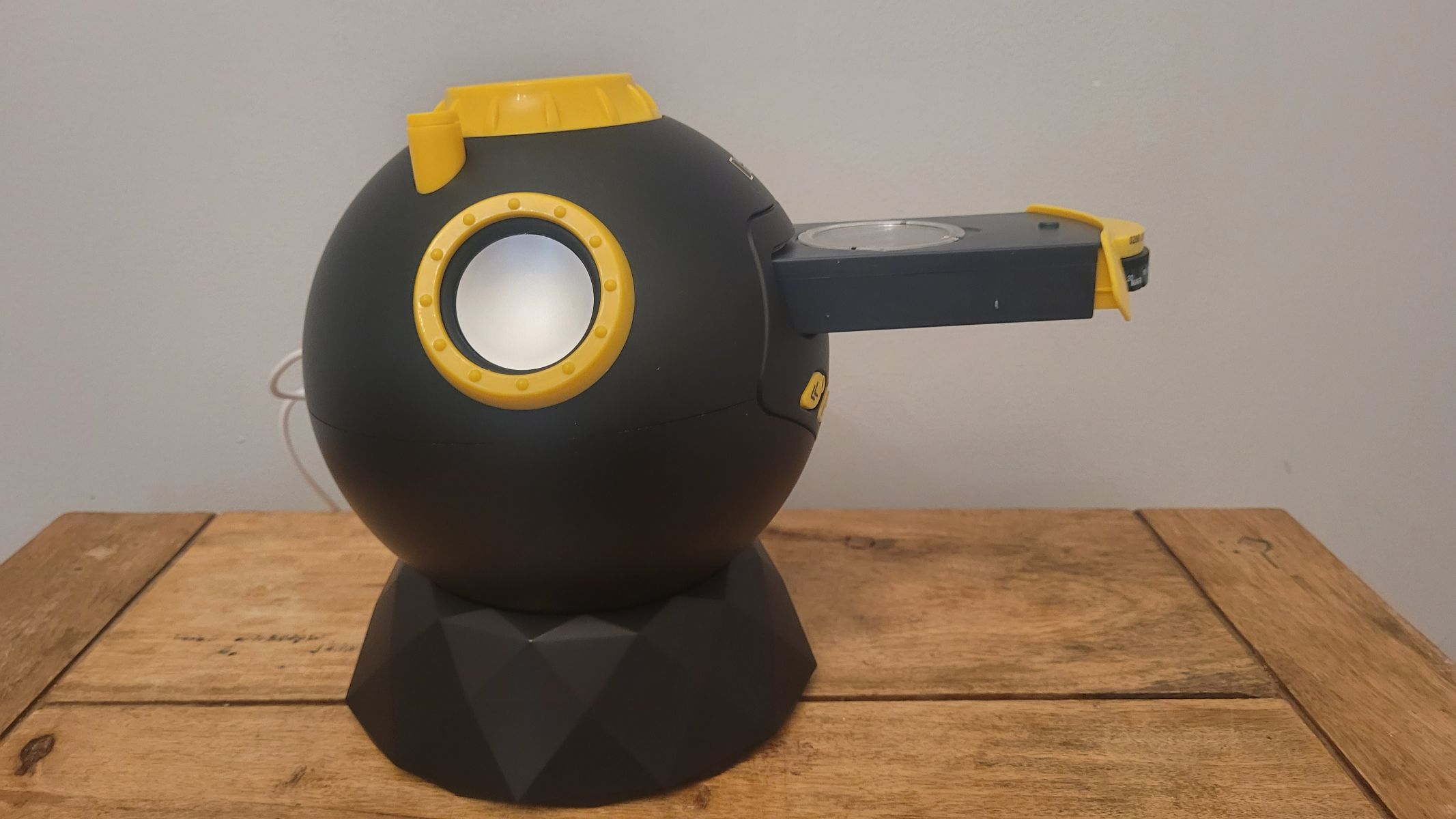
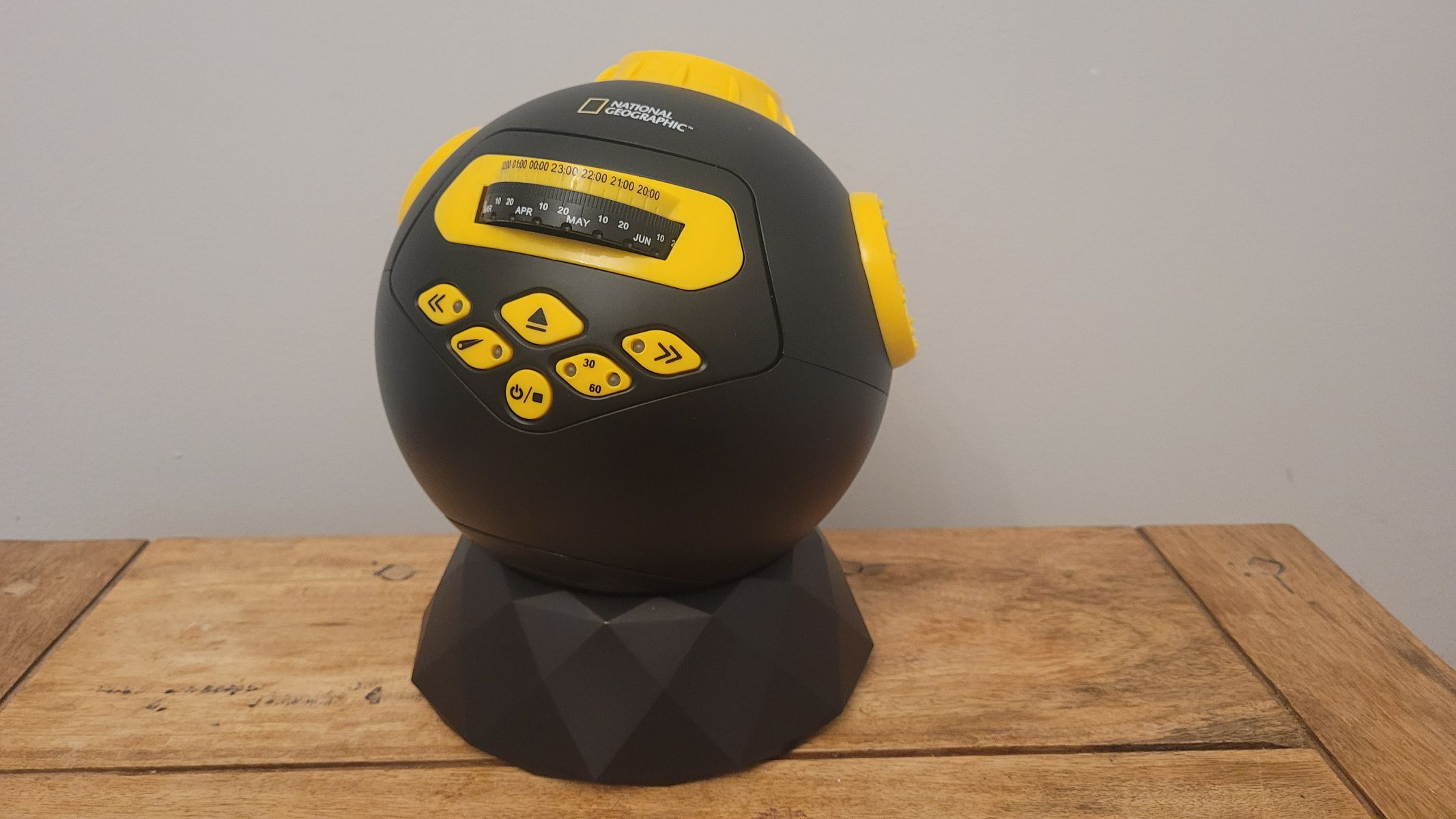
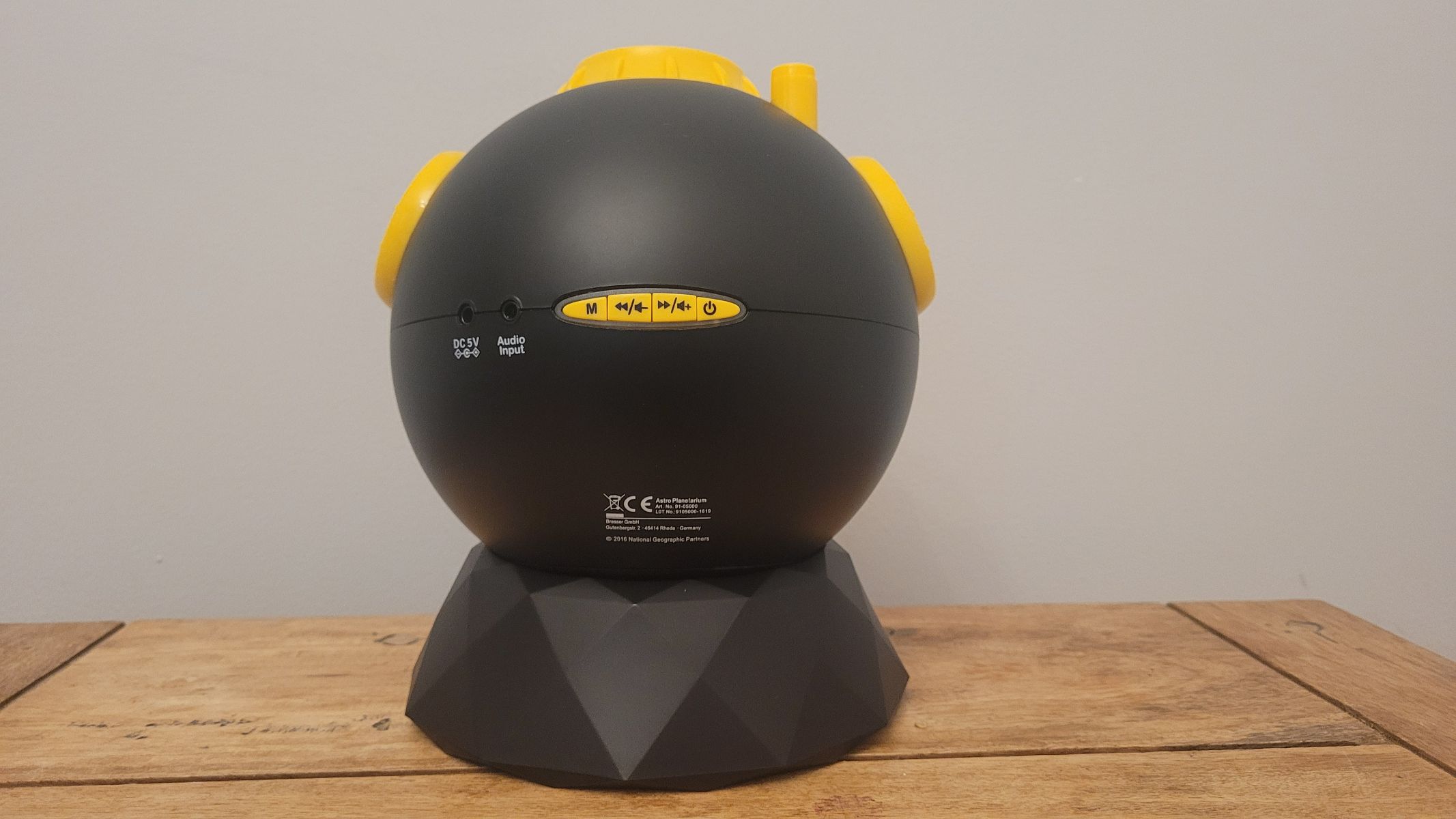
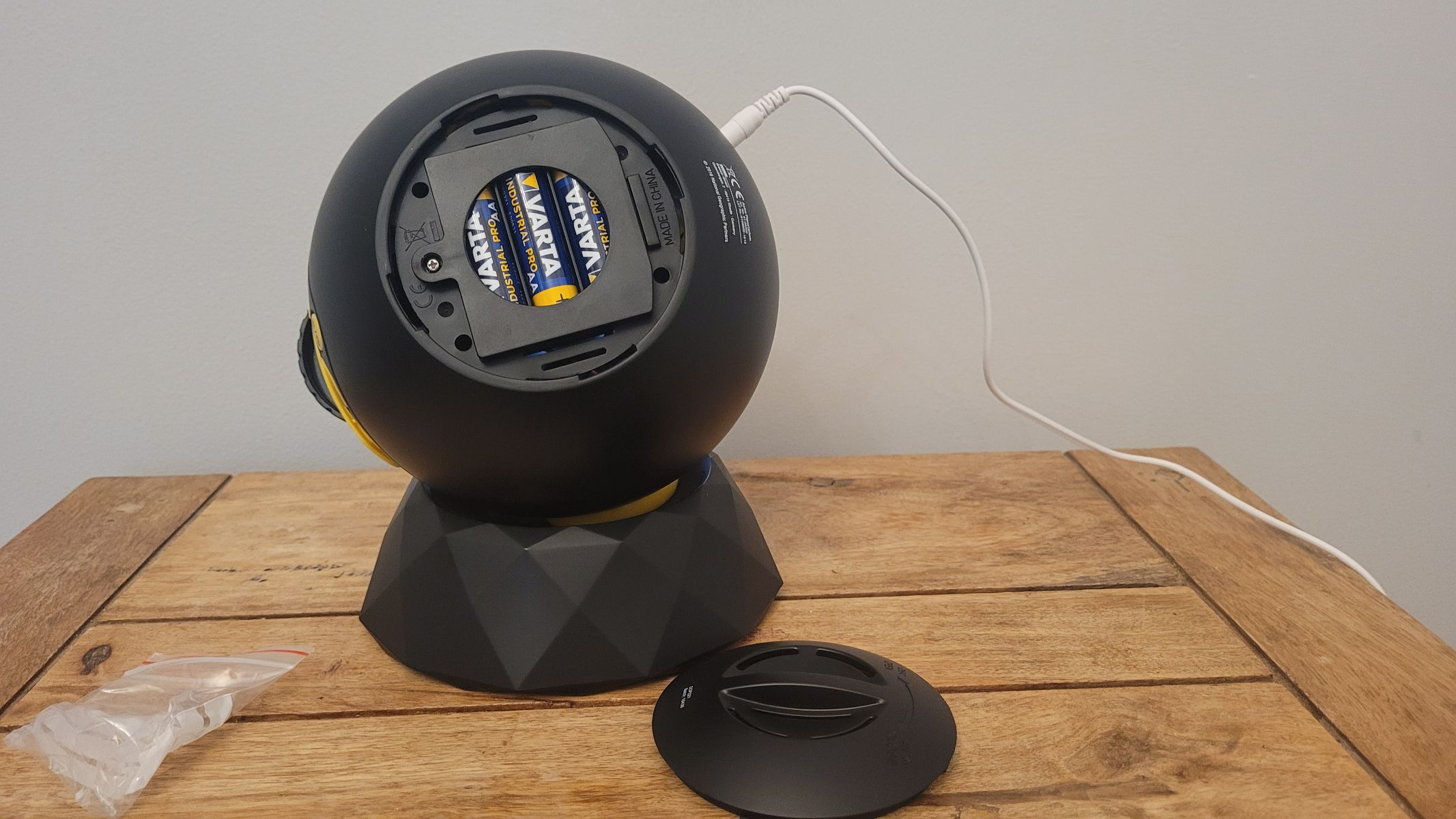
Specifications
Reasons to buy
Reasons to avoid
✅ You want accurate projections: The projections are true to the date and time that you 'program' it to (if you're in the Northern Hemisphere)
✅ You're buying for your child: While it's not a toy, we think it's aimed at a younger audience with a keen interest in astronomy.
❌ You just want something to project nice lights: If you just want an affordable little projector to create ambience, you'd be better off choosing one of the cheaper options on this list.
🔎 The National Geographic Astro Planetarium would make a nice gift for a budding astronomer. It has great functionality, with a time and date selector and a built-in speaker. ★★★★½
In our National Geographic Astro Planetarium review, we found this high-quality indoor planetarium offers true-to-life projections of the starry night sky at great price.
This projector is less expensive than the more premium options by Sega Toys, but it still comes with two projection discs: one showing 8,000 stars and another featuring guidelines for major constellations. You also get an accurate view of what you'll see for the time of day you're using it, which adds to the authenticity and its educational qualities.
The National Geographic Astro Planetarium is pleasantly easy to use: Simply rotate the image and use the big focus wheel to get the clearest projection. We've found the optics in this star projector to be rather impressive: They come from Bresser, a German brand known for making high-quality binoculars, telescopes and microscopes.
This projector is battery-powered, so you don't need it connected to the mains in order to use it. It makes it easier to place it in an optimal place around the room. There's also a 3.5mm jack cable provided in the box which allows you to connect an audio device to it, allowing you to play music or the radio while enjoying the stars.
The National Geographic Astro Planetarium has a novel 'falling star' mode. It projects a flashing meteor every 40 seconds, although we think it's a shame the falling star is always in the same place. A level of randomization would make it a bit more enjoyable and unpredictable.
- Read our full National Geographic Astro Planetarium review
Attributes | Notes |
|---|---|
Design | Yellow accents not particularly inconspicuous. |
Performance | Projection is bright and easy to focus. |
Functionality | Integrated radio/speaker. |
Best for generalist projection
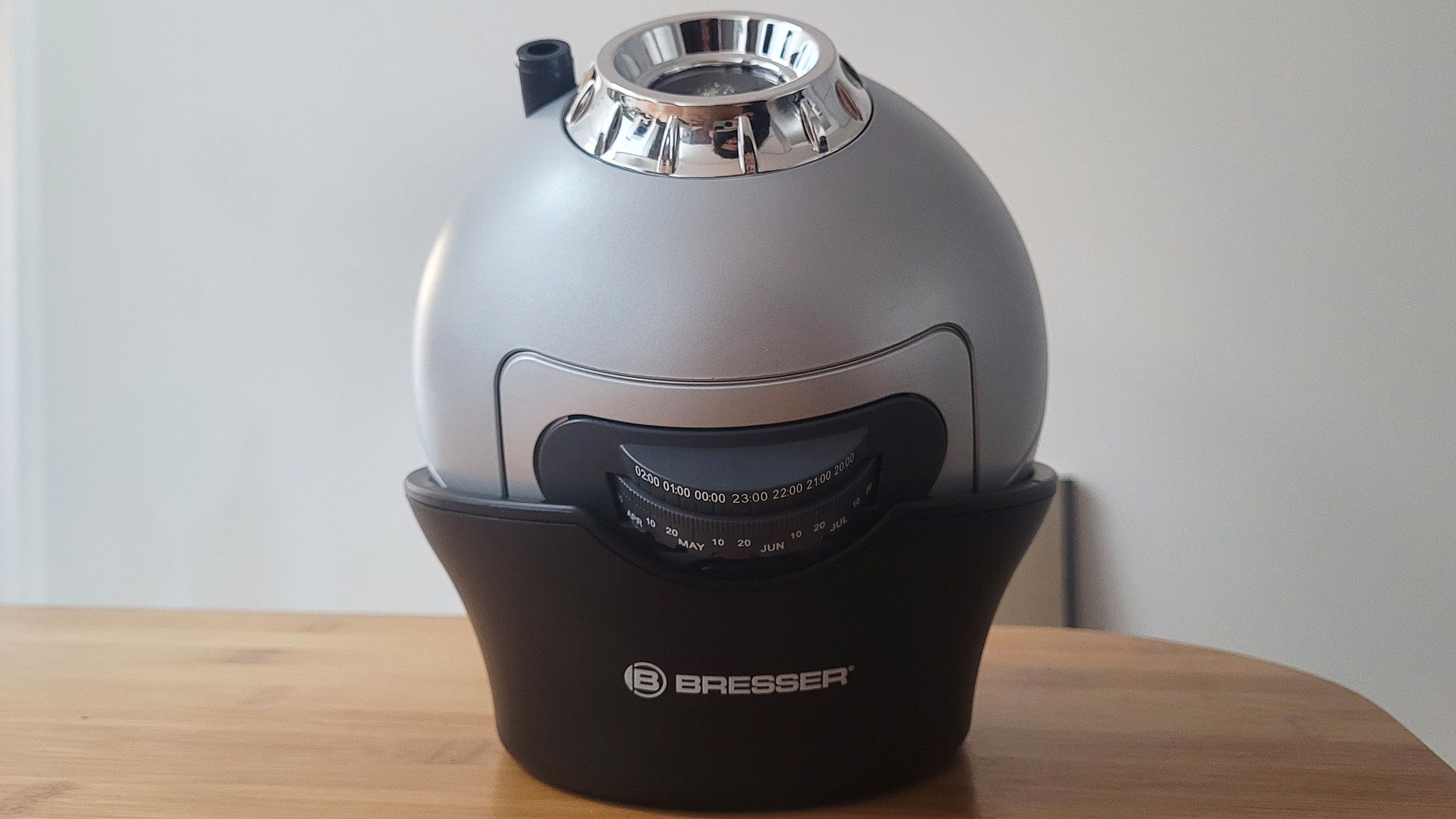
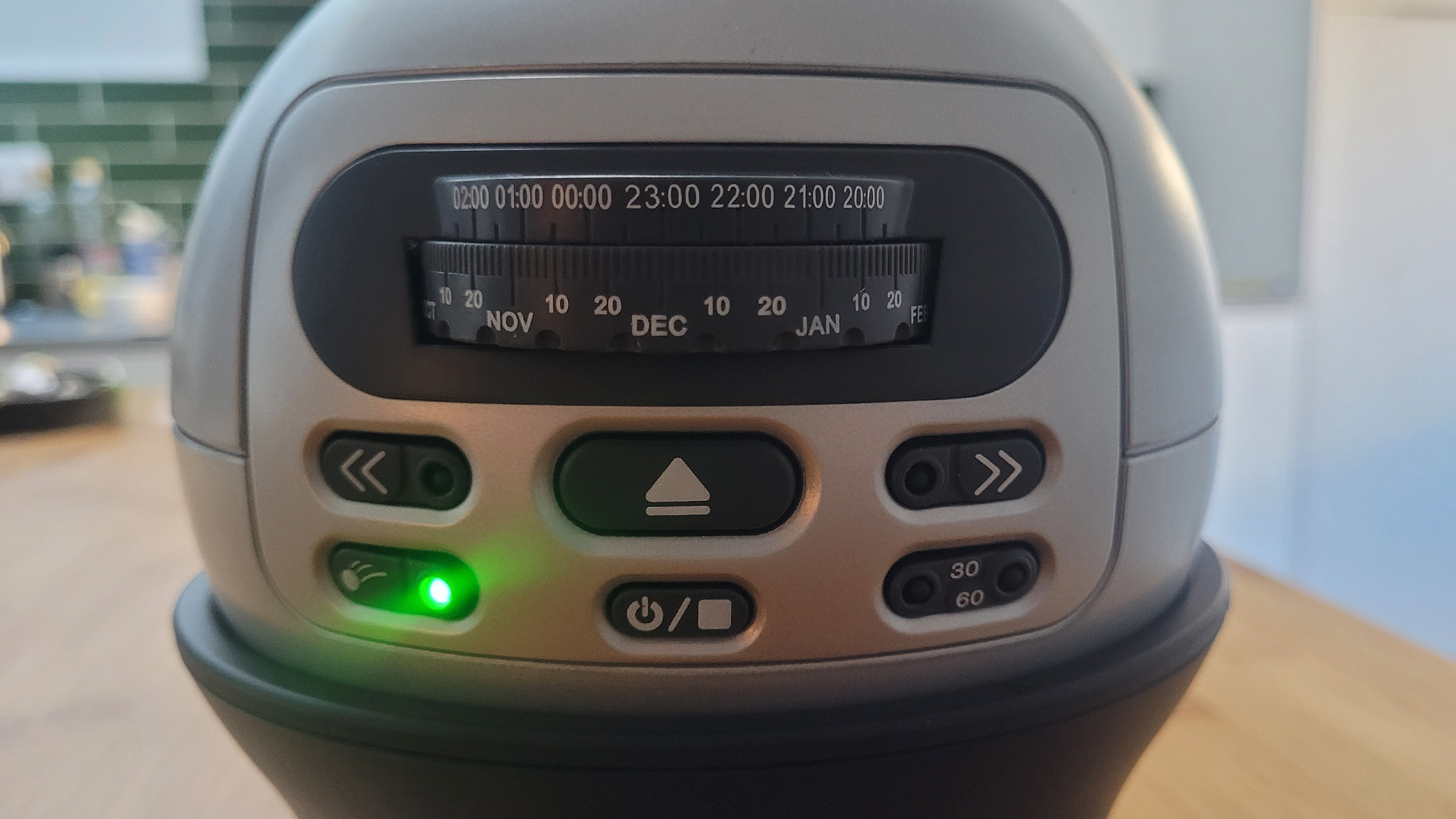
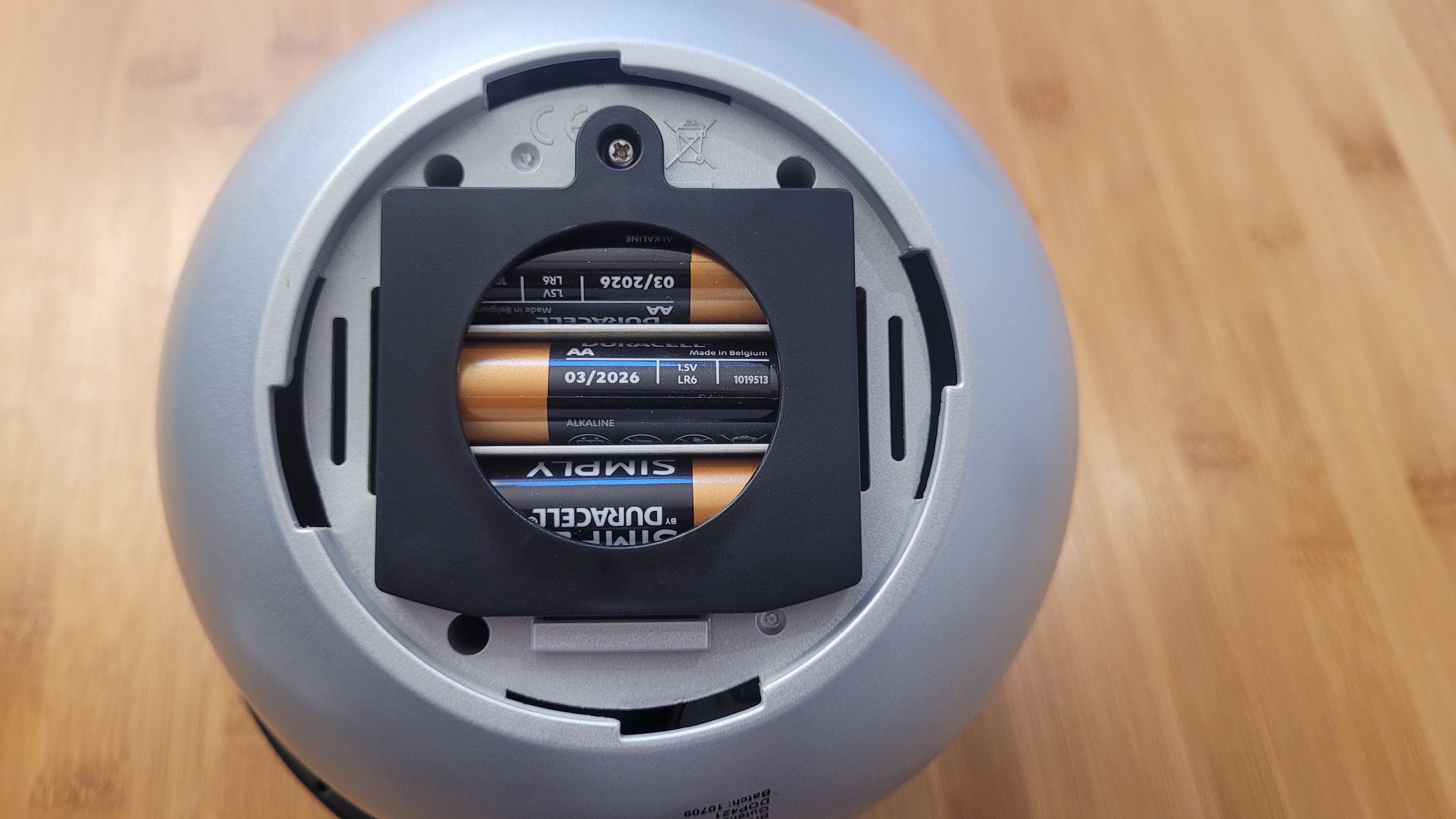
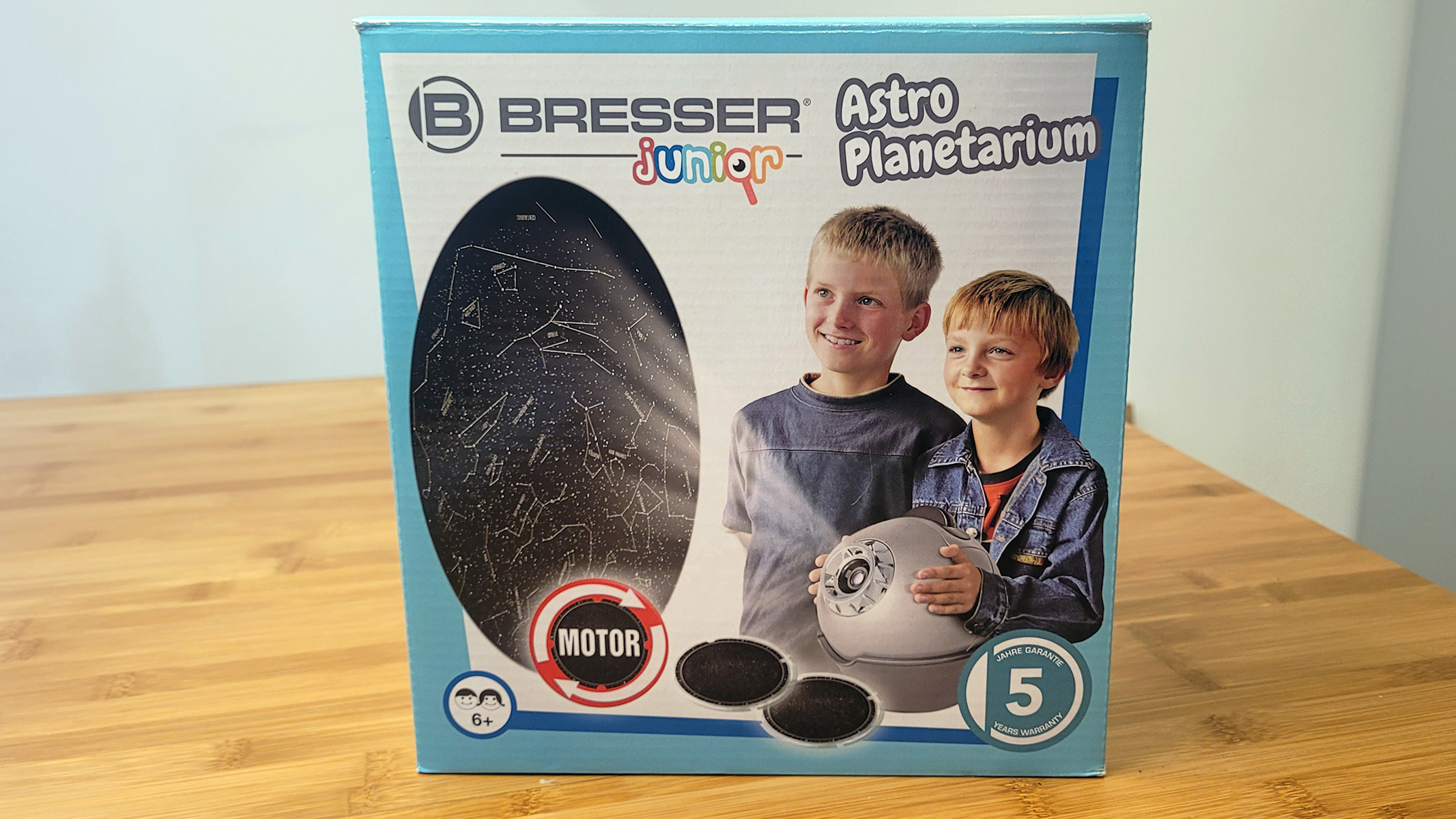
Specifications
Reasons to buy
Reasons to avoid
✅ You want a realistic night sky: It comes with two disks — one featuring a starry night sky and the other featuring overlays of constellations — both of which are correct to the time and date you're using it.
❌ You want it to have a speaker: If you want a star projector that features a speaker, you'll have to look at other options.
🔎 Bresser Junior Astro-Planetarium Deluxe This Bresser planetarium star projector, designed for kids, has true-to-life projections, a five-year warranty and is simple to operate. It has a time and date selector, a shooting star function and a sleep timer, and it ships with two disks. ★★★½
The Bresser Junior Astro-Planetarium Deluxe is very similar to the National Geographic Astro Planetarium. The two share a design, in fact, and so operate almost identically. There are key differences, however: for starters, this one doesn't have a speaker or built-in radio.
The different color scheme does at least make the Bresser Junior Astro-Planetarium look more grown-up and of a better quality. It's swapped out the bright yellows of the National Geographic planetarium for a more premium-looking silver, which is much less conspicuous-looking, particularly if you're using this as an adult.
In our Bresser Junior Astro-Planetarium Deluxe review, we found that the same Astro Planetarium discs can be used in both the Bresser and the National Geographic devices, and two are included in the box: one features a starry night sky, and the other has constellation overlays. You can set a day and time on the device, making the projections accurate for that time — a very nifty feature to help with skywatching.
You can rotate the image in its stand, and it's fully mobile with built-in motors allowing for 360-degree movement. We found that it works best when the images are projected from about two meters away. Bresser designed the lens with a focusing wheel for easy image adjustment. Like many star projectors, it has automatic shutdown options after 30, 60 or 120 minutes, making it suitable for kids who want to fall asleep under a starry sky in their bedroom. Additionally, it includes a shooting star mode, projecting a 'meteor' every 40 seconds.
There are minimal differences between this and the National Geographic Astro Planetarium, but this one is a little cheaper. If you don't want music compatibility and you're happy for it to be battery-powered, it's probably worth considering over the other.
Attributes | Notes |
|---|---|
Design | Silver & black design, but dated packaging. |
Performance | Date & time feature works well. |
Functionality | Battery powered (no mains option). |
Best for portability
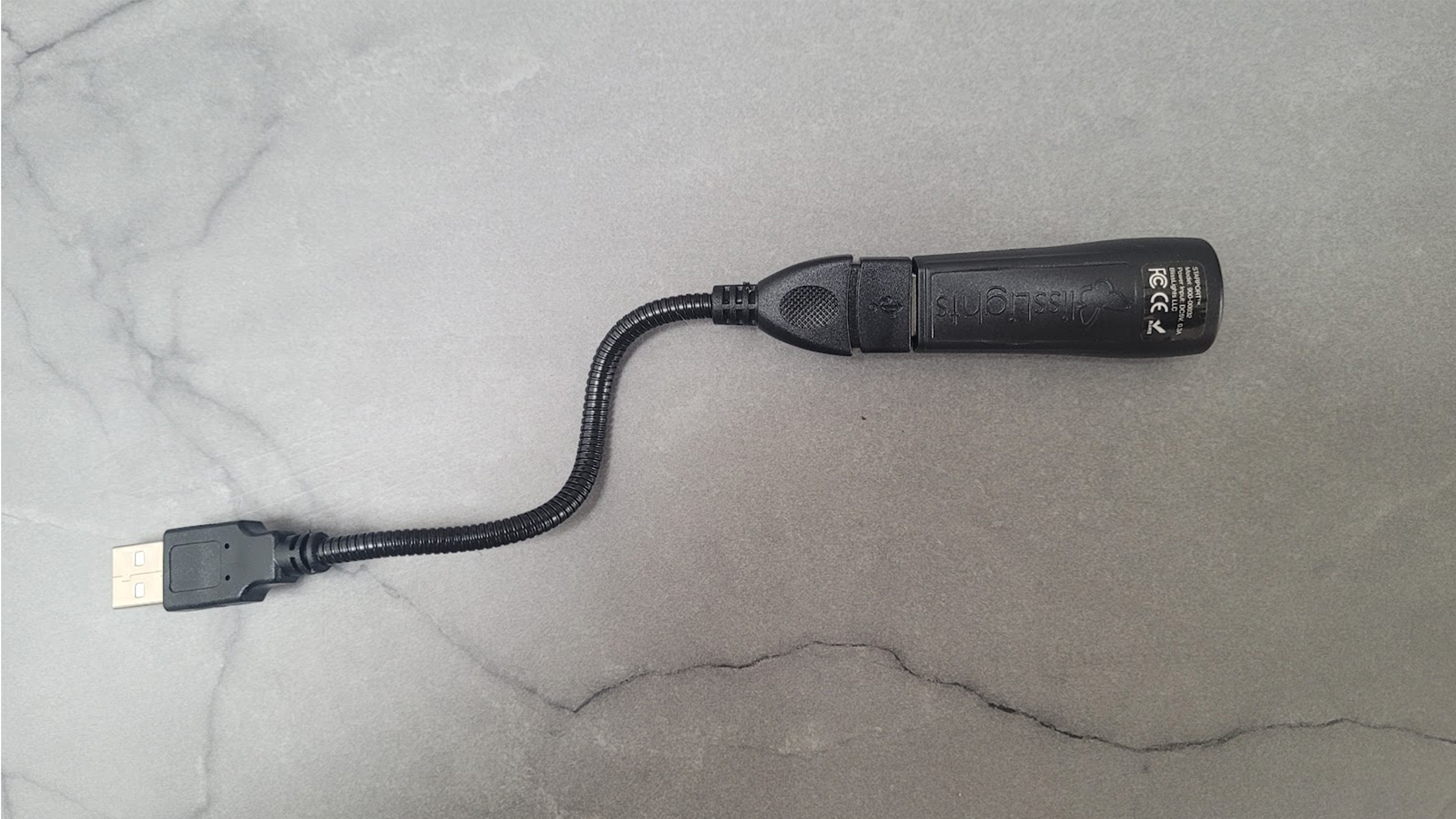
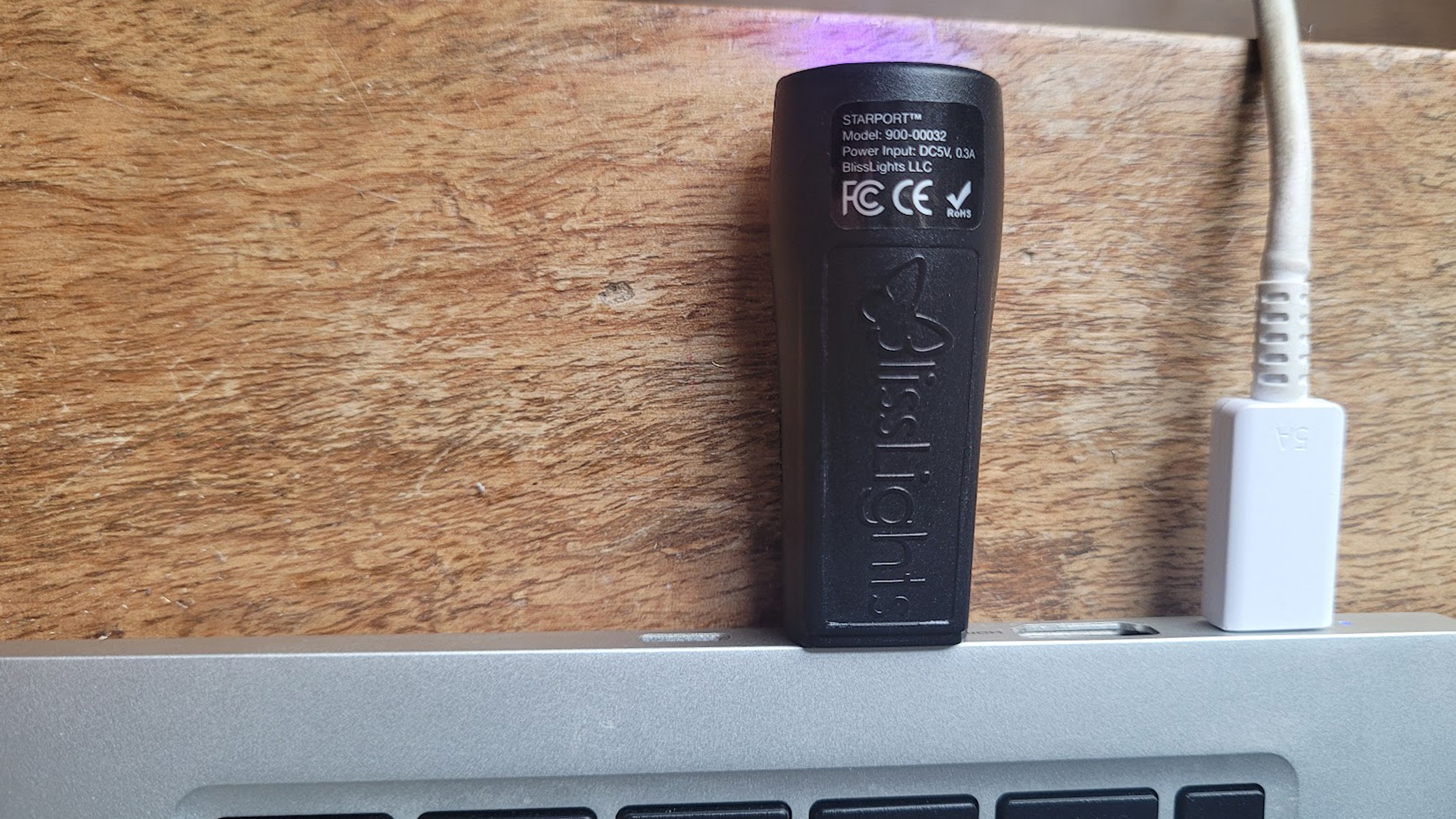
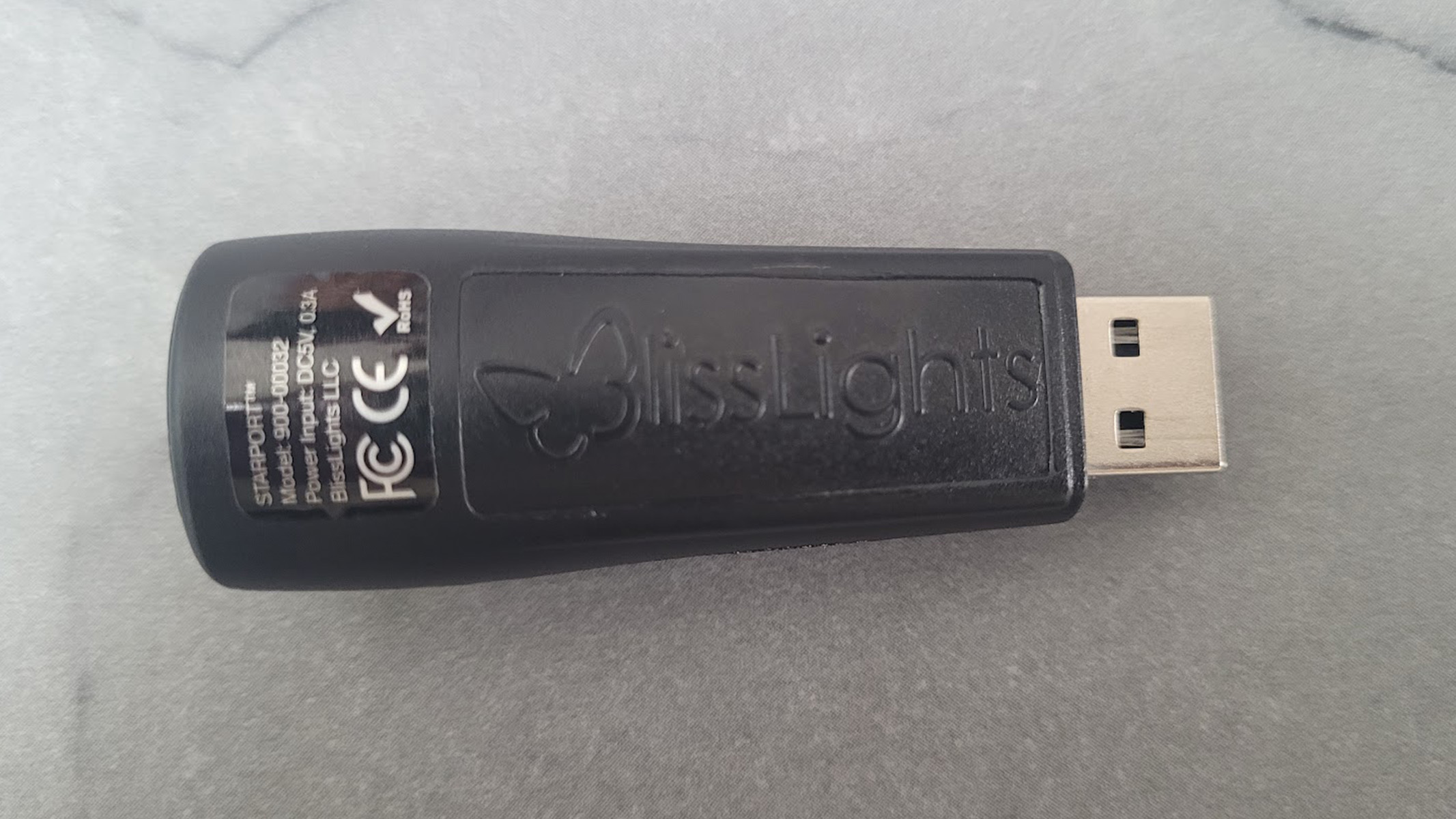
Specifications
Reasons to buy
Reasons to avoid
✅ You want something portable: This star projector is so small it could be mistaken for a flash drive, so it's perfect to take on the go.
❌ You want customization: If you want to change the colors, brightness or add rotation to the lasers, then you'll want to go for a different model.
🔎 BlissLights Starport USB star projector A pocketable device for adding instant ambiance to parties, gaming rooms, music studios or spas, this could very loosely be considered a star projector. ★★★½
The BlissLights Starport USB star projector is unlike any other in our guide, given that it relies on a USB connection and is far more of a compact package. This is a hassle-free device and also one of the most budget-friendly, but it can still transform the atmosphere around you with stunning projections. We'd use the term 'star projector' sparingly, however, as it isn't entirely scientifically accurate.
To operate the BlissLights Starport, simply plug it into to a USB power source, and sit back and enjoy the show. It fills the room with hundreds of laser stars which look absolutely beautiful. Unlike other devices on this list, however, there are no customization options and, unsurprisingly, it's not scientifically accurate.
If you're looking for a simple night sky light show to add ambience to any room, we think the BlissLIghts Starport USB star projector is a great choice. It's inexpensive and takes up almost no space. If you travel a lot, it could be a perfect way to see the stars in your hotel room, for example.
If you want more advanced features or something more scientifically accurate, however, this isn't the right product for you.
- Read our full BlissLights Starport USB star projector review
Attributes | Notes |
|---|---|
Design | Tiny device, looks like a flash drive. |
Performance | Lasers are very bright and fill a large area. |
Functionality | Does what it's meant to and nothing more. |
Best for multi-media ambiance
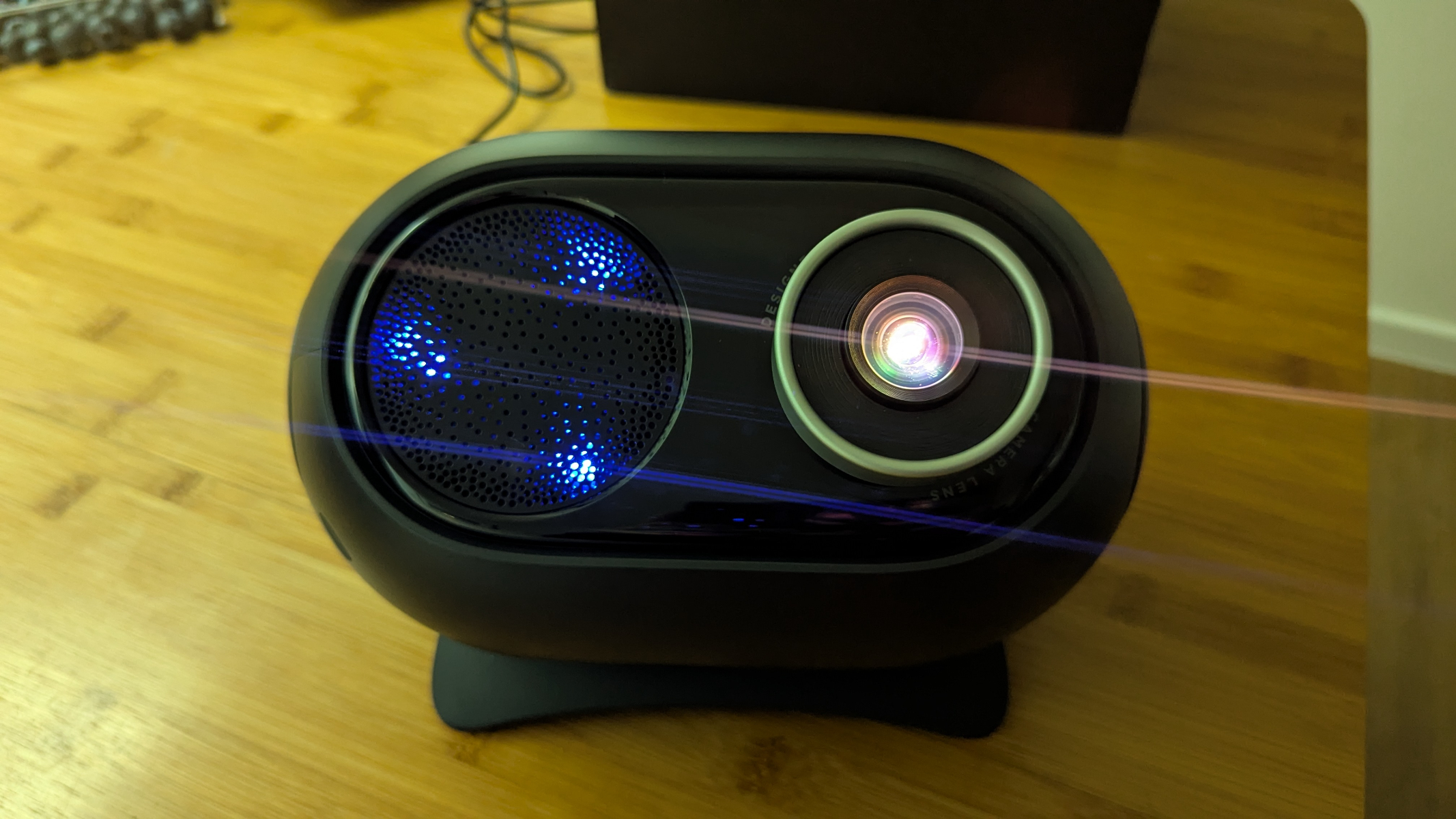

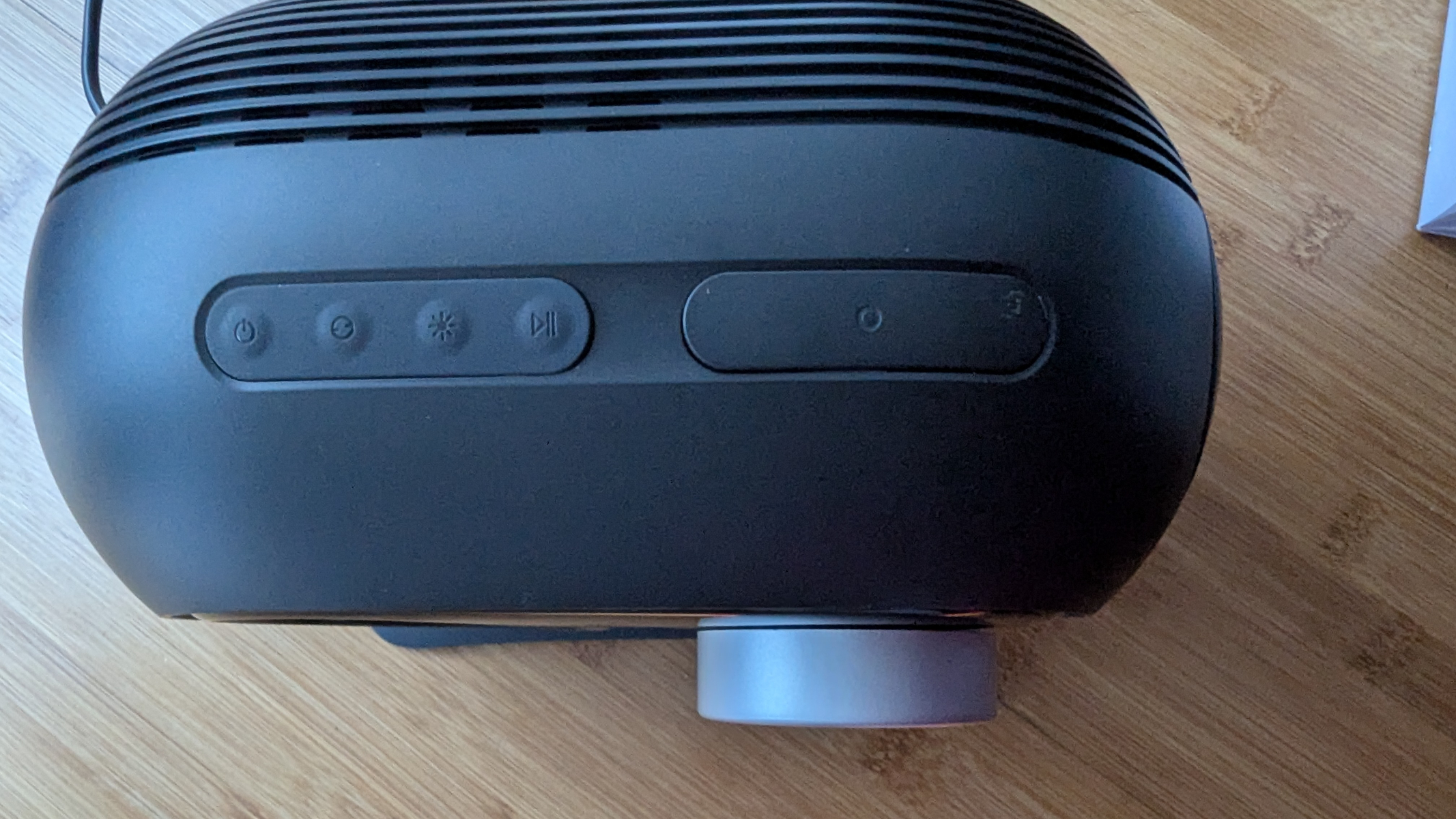

Govee Galaxy Light Projector 2 Pro
Our expert review:
Specifications
Reasons to buy
Reasons to avoid
✅ You want a projector & speaker combo: There is a good-quality Bluetooth speaker in this projector that can help with ambiance.
❌ You don't want to rely on disks: This projector is disk-only.
🔎 Encalife Ambience Galaxy & Star Projector: A projector that offers plenty to 'set the scene' and has a built-in speaker. It's disk-only but offers great projections. ★★★★½
The Star Light Projector 2 Pro is the latest addition to the market from Govee and we like it a lot. It offers a good-quality built-in Bluetooth speaker, Smart controls, it can be controlled via an app too and it offers a sizable projection surface, even if it is disk-only.
It's a star projector that's larger than most and it comes with a separate rubber stand. Its design is capsule/tablet-like and has the projector on the side with the disk tray and four control buttons on the top. It comes with eight disks, which are square-shaped, and come in their own booklet, which is helpful for storage.
The projections, which are the most important part, are powerful enough to cover a sizable part of a room and the lasers are up there with the best we've seen. They don't just rotate, but this projector can activate some while turning others off and brighten some while dimming others. Some imagery is realistic, but you'll need prior knowledge of space imagery, as no context is provided.
If you're looking for features, then the two stand-outs are the Bluetooth speaker, which is built in and of good quality. The other is the ability to connect this to your Google account and set it up with Alexa. You can control the projector through the Govee app, which will allow for some, but not a lot, customization.
Overall, it's a pretty great option; our only gripes with it are a high starting price, as others on the market can do a very similar job for less money, and the motor. The motor's noise increases when the fan kicks in, it's not a distraction if you have this on in the background, but it is noticeable.
- We have reviewed the Govee Star Light Projector 2 Pro and will link it when the review goes live.
Attributes | Notes |
|---|---|
Design | Nicely packaged, looks quality, large |
Performance | Good speaker, good coverage, great lasers |
Functionality | Some customization, noisy motor, can be app controlled |
Best classic star projector
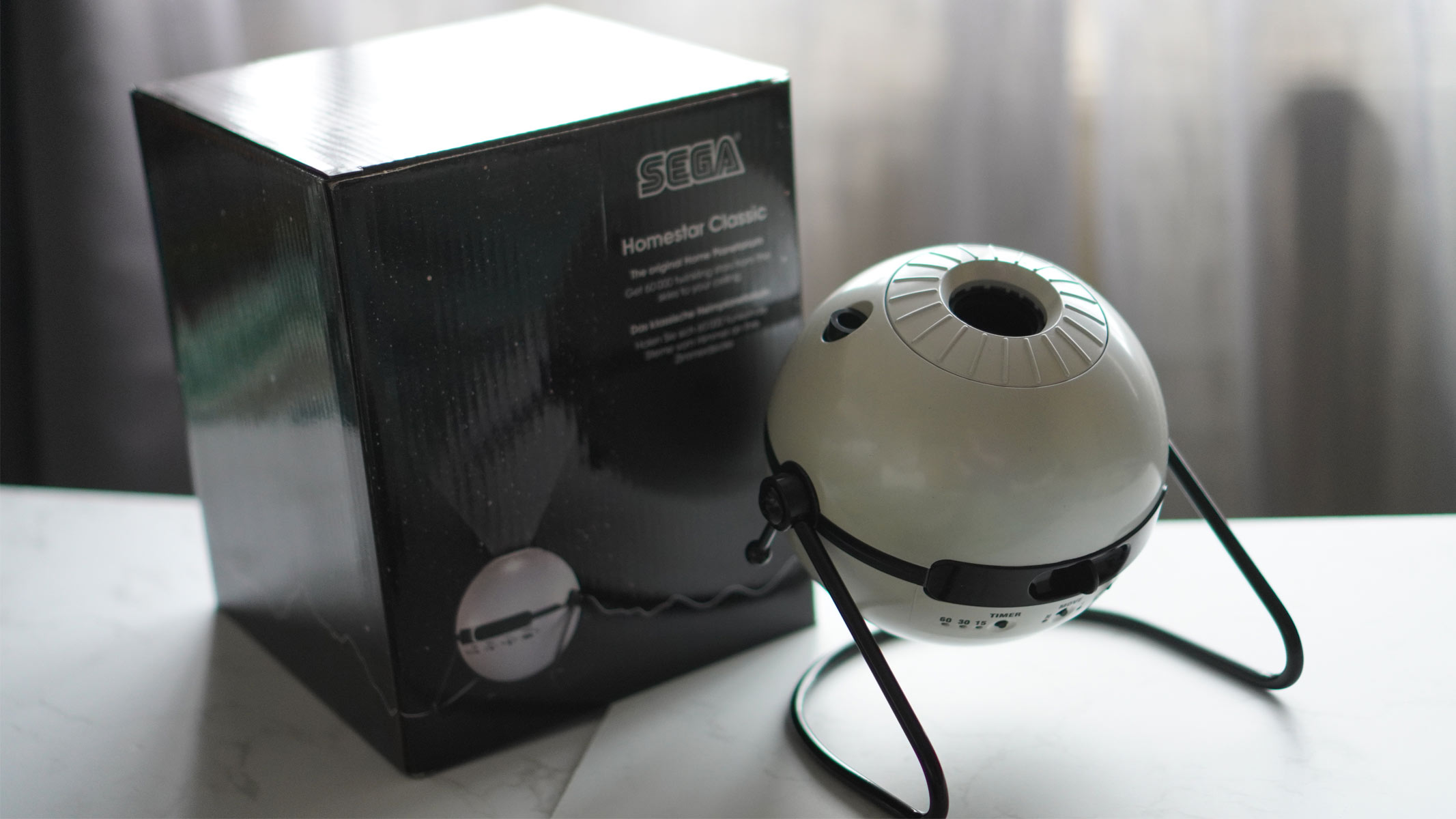
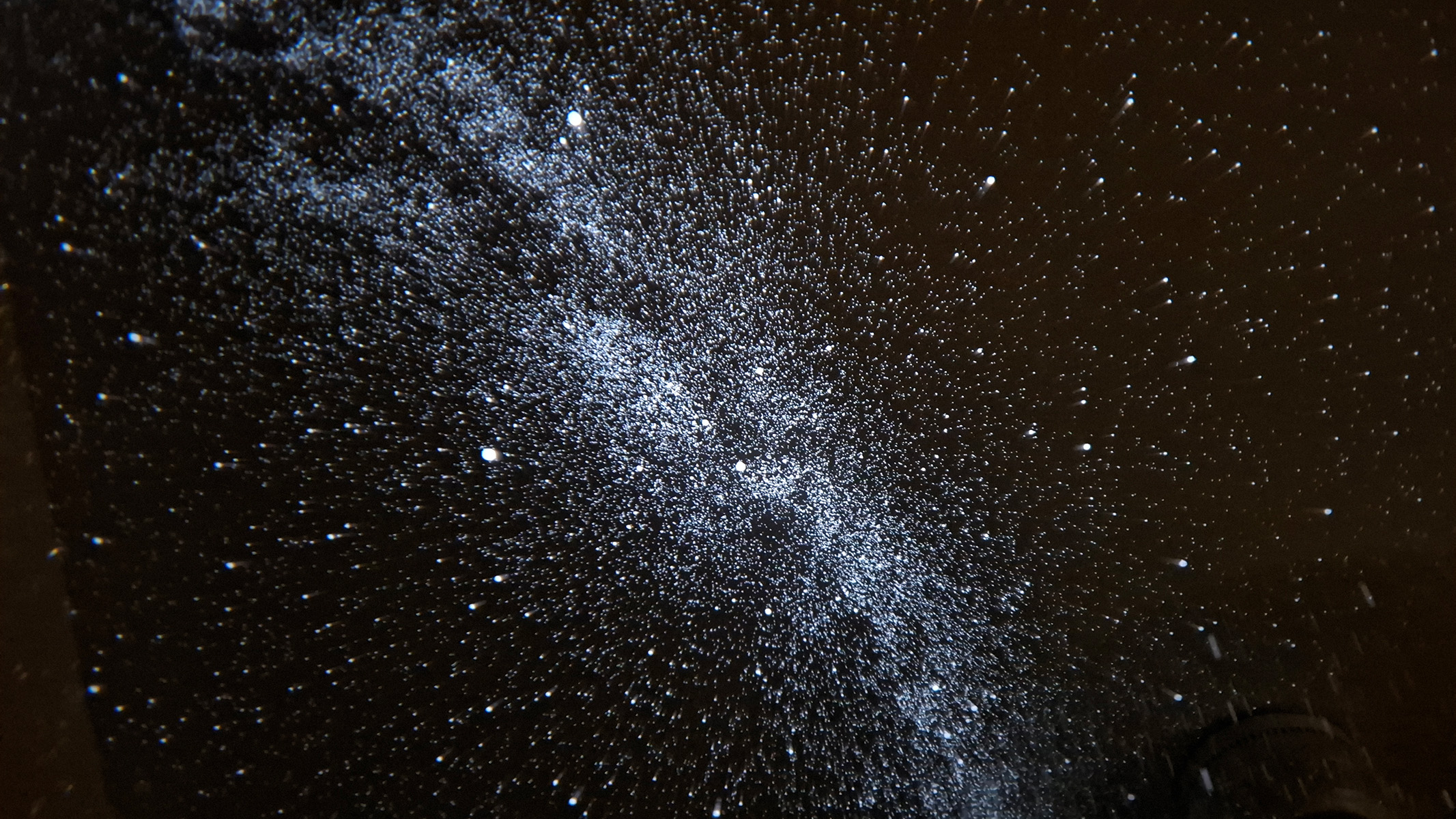
Sega Toys Homestar Classic
Our expert review:
Specifications
Reasons to buy
Reasons to avoid
✅You want realistic projections: This is a no-frills star projector that offers realistic projections of the night sky.
❌You want extras: This comes with very few bells and whistles. No Bluetooth connectivity or built-in speaker feature here.
🔎Sega Toys Homestar classic: It's up there with the best on the market. It's projections are fantastic and it looks great, although it is on the expensive side and offers few extras.
The Sega Toys Homestar Classic was first released back in 2006 and even though Sega Toys has since released the Flux and Matataki star projectors, the Classic still holds up today and has aged well.
Its main selling points are the top-tier projections and realistic imagery it offers. Two interchangeable disks contain the fixed stars of the Northern Hemisphere projected from a 3-Watt LED light bulb. While some projectors offer Nebulae projections too, the Classic focuses on Stars, and they look spectacular in dark conditions. Further disks are available for purchase, too.
It's a no-frills star projector that offers little in the way of extras or novelties. An AC power adapter is included so it can be powered by the mains. To save power usage, it comes with a built-in timer that can be set to 15, 30 or 60 minutes. It also has a 'move' option, which will offer a gentle panning effect of the projections you see and a 'Shooting Star' option that projects random shooting stars to appear across the current projection. It doesn't, however, come with a built-in speaker, Bluetooth connectivity or a rechargeable battery.
We think the Classic looks pretty neat and it doesn't need to have a unique design or a novelty look to stand out. It matches the Flux and the Matataki for maximum projection and it's cheaper than other high-end models.
Overall, this is one of the best star projectors you can get and a great choice if you do decide to own one. It is slightly cheaper than other high-end models but it is more expensive than most of the market, and more expensive than other projectors that offer more. It projects fantastic, realistic imagery and is great for STEM and pure projection purposes. However, if you're not willing to spend a lot on a star projector, there are other, perfectly fine options available.
Design | Easy to use and looks premium |
Performance | top-tier projections while almost silent |
Functionality | Mains powered, uses disks and has a built-in timer |
Best lamp
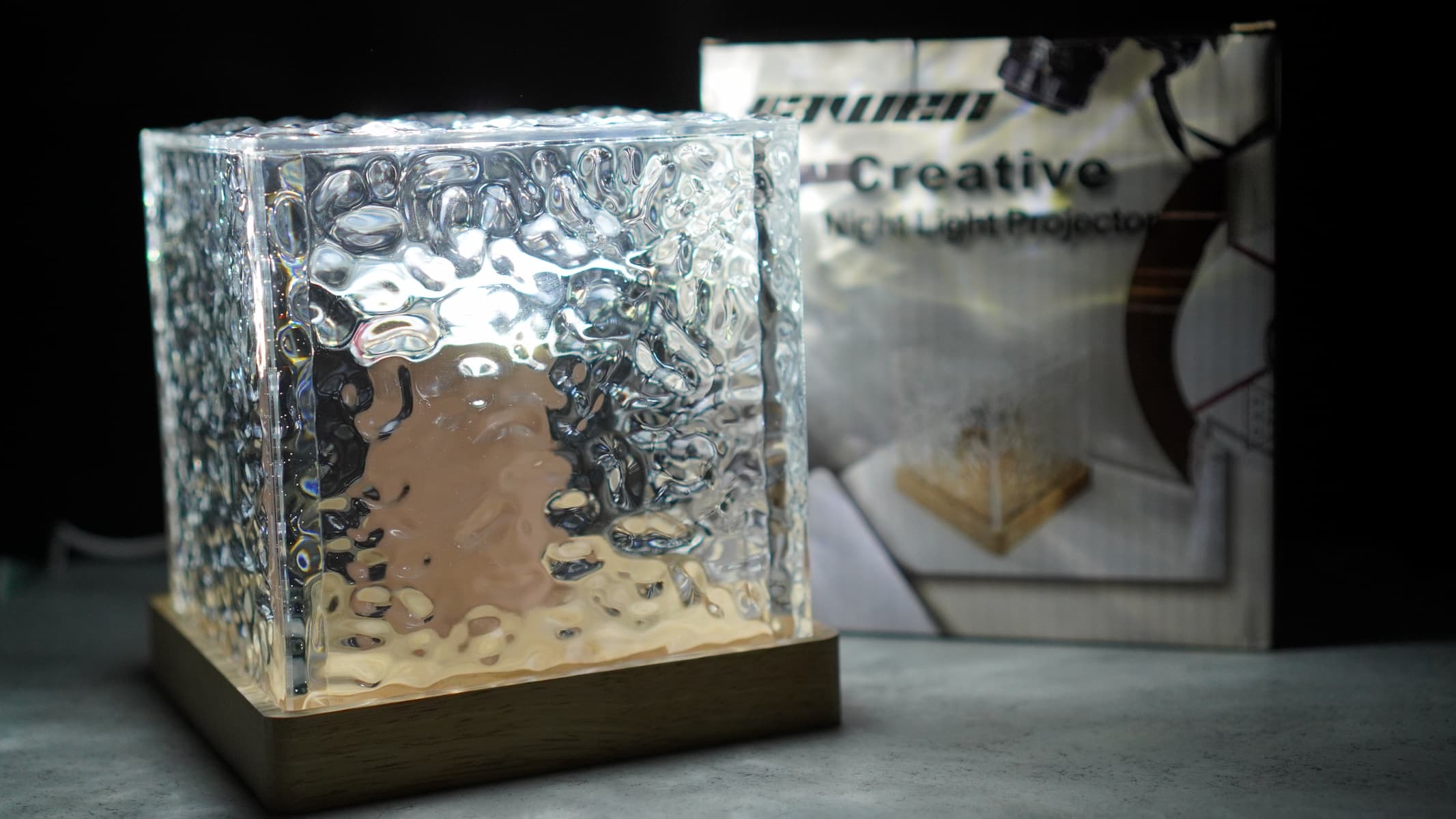
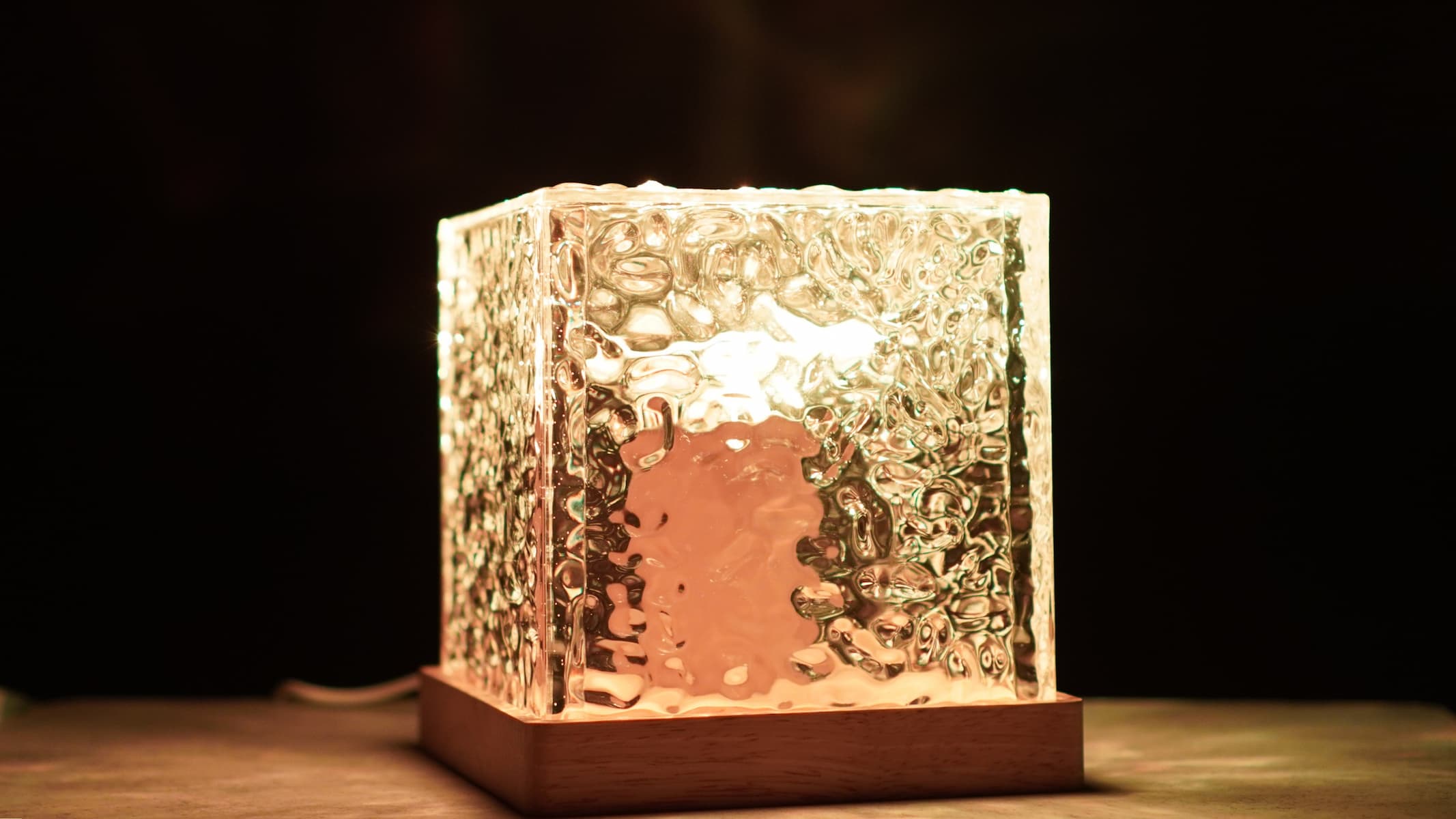
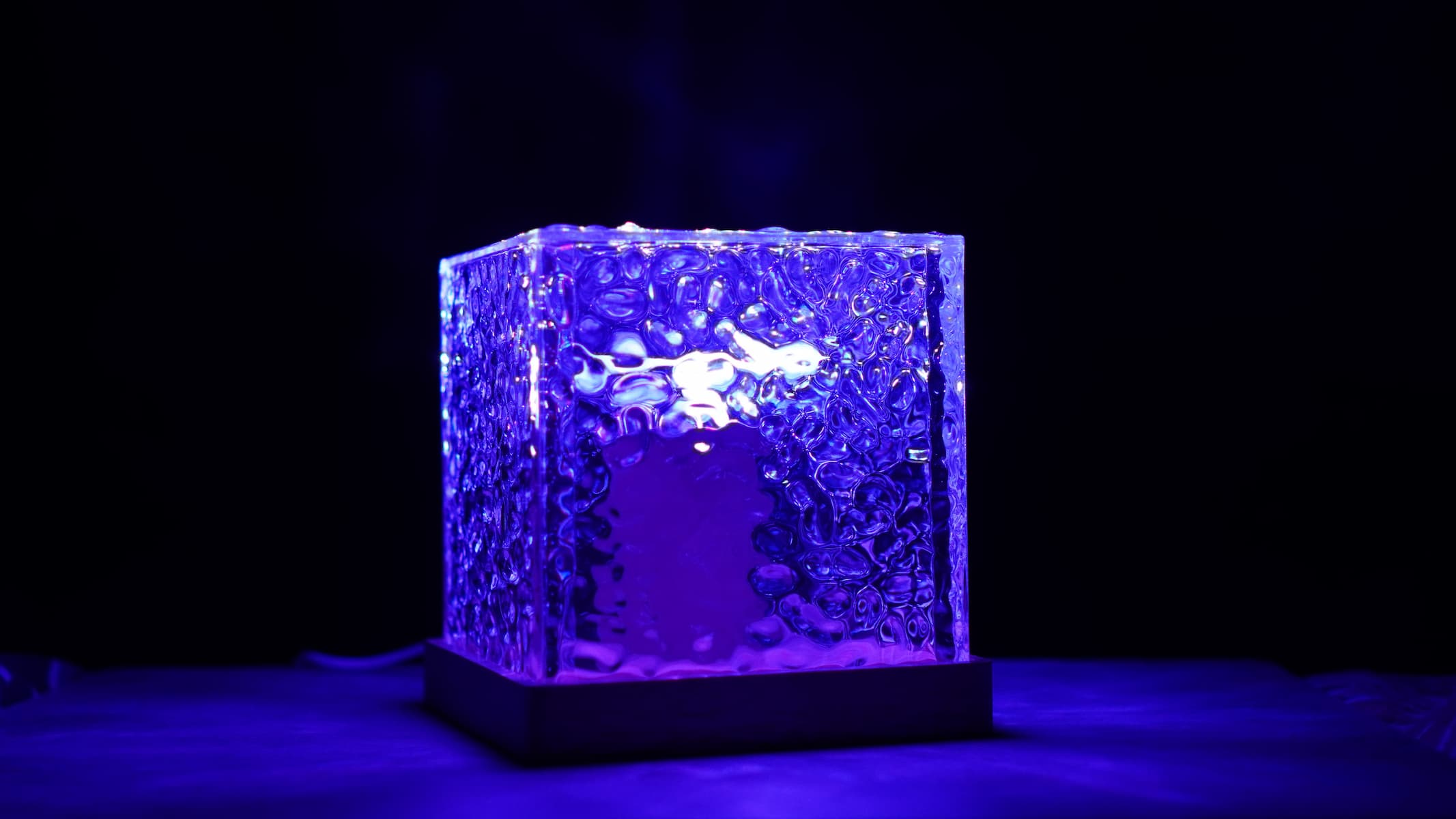
Specifications
Reasons to buy
Reasons to avoid
✅You want something to double up as a night light or lamp: The Jiawen Galaxy Projector Light can suitably light up a room for relaxation.
❌You want any kind of accuracy: While it offers a lot of quality, especially for the price, the projections can be described as nebulae-like at best.
🔎Jiawen Galaxy Projector Light: A great budget option that can work as a lamp or night light, but won't offer you scientific accuracy... Or much accuracy at all for that matter.
If you're looking for a night light or a lamp that can really set the mood for relaxation, the Jiawen Galaxy Projector Light could be what you want. Its sub-$20 price tag makes it an attractive prospect and the quality it offers, especially in our review, means it's definitely worth considering. Our only gripe with it is that it doesn't offer projections of stars... Or galaxies, like the name suggests.
The projector itself features a wooden base along with an acrylic cover over the bulb which resembles frosted glass. It looks surprisingly premium and it's the acrylic bulb cover that gives the projections their effects. The build is sturdy but there are no control buttons on the lamp unit, which means everything is controlled via the remote.
The Jiawen Galaxy Projector Light doesn't offer any star projections from lasers, which is probably a good thing, as they often come across as tacky at this price point. But, it also doesn't offer any galaxy projections either. Instead, the wavy, frosted glass effect of the acrylic cover means projections are more nebulae-like. Even then, it's a bit of a stretch to call it that. But, the LED bulb works well and there are 16 RGB colors to choose from as well as multiple brightness settings, so it's not all bad news on the projections front. In fact, what it does do, it does really well, which is why we think it's a great option for a night light and/or a lamp.
With the projector being USB-powered, you'll need to keep it close to a mains socket or at very least, a power unit. Given its size, it's not too imposing to have on a bedside table or a desk, meaning it works well for nighttime unwinding. There isn't a sleep timer on it though, so you will have to turn it off manually if you don't want it running through the night. But, it does operate quietly, so if you do nod off, you won't be disturbed by a constant buzzing or whirring in the background.
In short, this Jiawen Galaxy Projector offers surprising quality for a really low price. It works well as an ambience setter and a night light. It's a bit of a stretch to label it a galaxy projector as the name would suggest but you can see the effect of the acrylic cover means the projections do lean that way. It's a shame it doesn't feature a speaker or a sleep timer but the sturdy build and the quality LED bulb mean you do get value for money with this projector.
Design | Sturdy build, looks premium |
Performance | Bright light, not strictly a star projector |
Functionality | Powered by USB, remote controlled, no sleeper timer or speaker |
Star projectors Frequently Asked Questions
When is the best time to buy a star projector?
There isn't a definitive "best time" as you can find star projector deals throughout the year via many retailers. However, the safest bet is during annual sales events like Amazon Prime Day and Black Friday. This is because we usually see the broadest range of discounts, which typically cover star projectors, and the biggest offers often come during these sales events. You should find these discounts available with reputable retailers too, so you can rely on the quality of the product and the ability to return something if you're not satisfied with your purchase.
What is the best star projector?
The Sega Toys Homestar Flux is the best star projector you can buy right now. We’ve tested and reviewed a range of star projectors and found no projections more accurate and beautiful than with this premium product. You also have the possibility of buying up to 30 extra disks to project the Milky Way, shooting stars, and the aurora.
Are star projectors realistic?
Not all star projectors are scientifically accurate — some are designed to be pleasant ambient lights to be used as kids' night lights or just to create a relaxing atmosphere. However, some models are scientifically accurate and allow you to create a planetarium from the comfort of your own home, for example the Sega Toys Homestar Flux, National Geographic Astro Planetarium and Bresser Junior Astro-Planetarium Deluxe.
What is the difference between a star projector and a planetarium?
While the terms are often used interchangeably, star projectors can also be used to refer to unrealistic night and ambient or mood-enhancing lights that aren't scientifically accurate. Planetariums, on the other hand, are strictly realistic and accurate depictions of the night sky, which are sometimes even time and location-sensitive to show you the night sky as it appears at a given time.
How do I choose a star projector?
In this buying guide, we've tested and reviewed a range of star projectors and ranked them according to performance, quality and budget. We've included a variety of options at different price points with a range of features, so you're sure to find one that suits you. We continue to monitor the market for different models, and we'll share our favorites with you.
Can I leave a star projector on all night?
In theory, yes. Most of the star projectors in this guide are AC mains-powered or DC-powered through USB ports, so as long as they're plugged in, they can run. Some, however, are battery-powered, meaning you run the risk of the battery running out overnight.
For those who want to use them as night lights, many star projectors come with a 'sleep timer' that will switch the device off after a specified amount of minutes.
It's important to check the manual that comes with your star projector before you leave it running for extended periods of time, as some models may become hot after prolonged use. Always resort to the manual if in doubt and follow the instructions.
Are star projectors good for babies?
The star projectors designed to be night lights can be good for babies and small children as they create a soothing ambient light. They can even make bedtime routines more fun and help your child drift off to sleep.
However, it's worth noting that some models include small flashes of light and swirling light patterns, so they may not be suitable for babies with light sensitivities or conditions like epilepsy. If in doubt, consult your doctor or local physician before using them.
What are the best star projectors on Amazon?
Most of the star projectors in this guide are available to buy from Amazon. You can find links underneath each product review that will take you to recommended merchants' websites, including Amazon.
How much do star projectors and home planetariums cost?
Prices vary depending on the model of your choice and how many features you are after. Generally, you can buy a good quality star projector for anywhere between $25 and $250. The cheaper models tend to be destined to be used as night lights and are generally inaccurate in their depiction of the night sky. More premium models like the Sega Toys Homestar Flux are more expensive but offer scientifically accurate depictions of the night sky.
Are laser star projectors safe?
The answer to this question depends on the type of star projector you're considering. Some FDA-approved laser star projectors are safe for brief and accidental exposure to eyes, but they are not recommended for children, and you should never look directly into a laser beam.
The U.S Food and Drug Administration (FDA) states that 'The FDA recognizes four major hazard classes (I to IV) of lasers, including three subclasses (IIa, IIIa, and IIIb). The higher the class, the more powerful the laser is and the greater the potential to pose serious injury if used improperly.'
In reference to Class IIIa lasers (like laser pointers or some used in star projectors), the FDA says: 'Depending on power and beam area, can be momentarily hazardous when directly viewed or when staring directly at the beam with an unaided eye. Risk of injury increases when viewed with optical aids.'
If in doubt, check the laser classification on the device before purchasing and check it against the FDA rules, or a relevant health and safety body in your region.
How we test the best star projectors
To guarantee you're getting honest, up-to-date recommendations on the best star projectors to buy here at Space.com we make sure to put every star projector through a rigorous review to fully test each product. Each star projector is reviewed based on a multitude of aspects, from its construction and design, to how well it functions as a star projector and whether it provides accurate night sky imagery.
Each star projector is tested by either our expert staff or knowledgeable freelance contributors who know their subject areas in depth. This ensures fair reviewing is backed by personal, hands-on experience with each star projector and is judged based on its price point, class and destined use. For example, comparing a top-of-the-range star projector from one of the largest producers of star projectors to a make-your-own kit made from cardboard wouldn't be appropriate, though each star projector might be the best-performing product in its own class, and that is how we've categorized them in this guide.
1. If you want it to be scientific, look for a simulation according to the actual time and day.
2. The smaller the room, the sharper the stars will look.
3. Check how many disks come with each product (if it uses them) or see if you can purchase add-ons.
4. Choose a model with a sleep-timer if using it as a night light.
5. Decide if you want to control it with a remote, app or smart device.
We look at how easy each star projector is to operate, test out all their functions to see if they are effective and work as advertised. We check that the projections are good, that the build quality is fit for purpose and make suggestions for the most appropriate use of each unit.
With complete editorial independence, Space.com is here to ensure you get the best buying advice on star projectors, advising on whether you should purchase a product, making our buying guides and reviews reliable and transparent.
November 17: We've updated our strapline and intro to reflect Black Friday, which is arriving on November 28, and we've added the new Govee Star Light Projector 2 Pro.
Breaking space news, the latest updates on rocket launches, skywatching events and more!

Jamie is an experienced science, technology and travel journalist and stargazer who writes about exploring the night sky, solar and lunar eclipses, moon-gazing, astro-travel, astronomy and space exploration. He is the editor of WhenIsTheNextEclipse.com and author of A Stargazing Program For Beginners, and is a senior contributor at Forbes. His special skill is turning tech-babble into plain English.
- Alexander CoxE-commerce Staff Writer
- Tantse WalterContributing Writer
- Jase Parnell-BrookesManaging Editor, e-commerce
